OCTOBER 2024
VOLUME 7 ISSUE 9


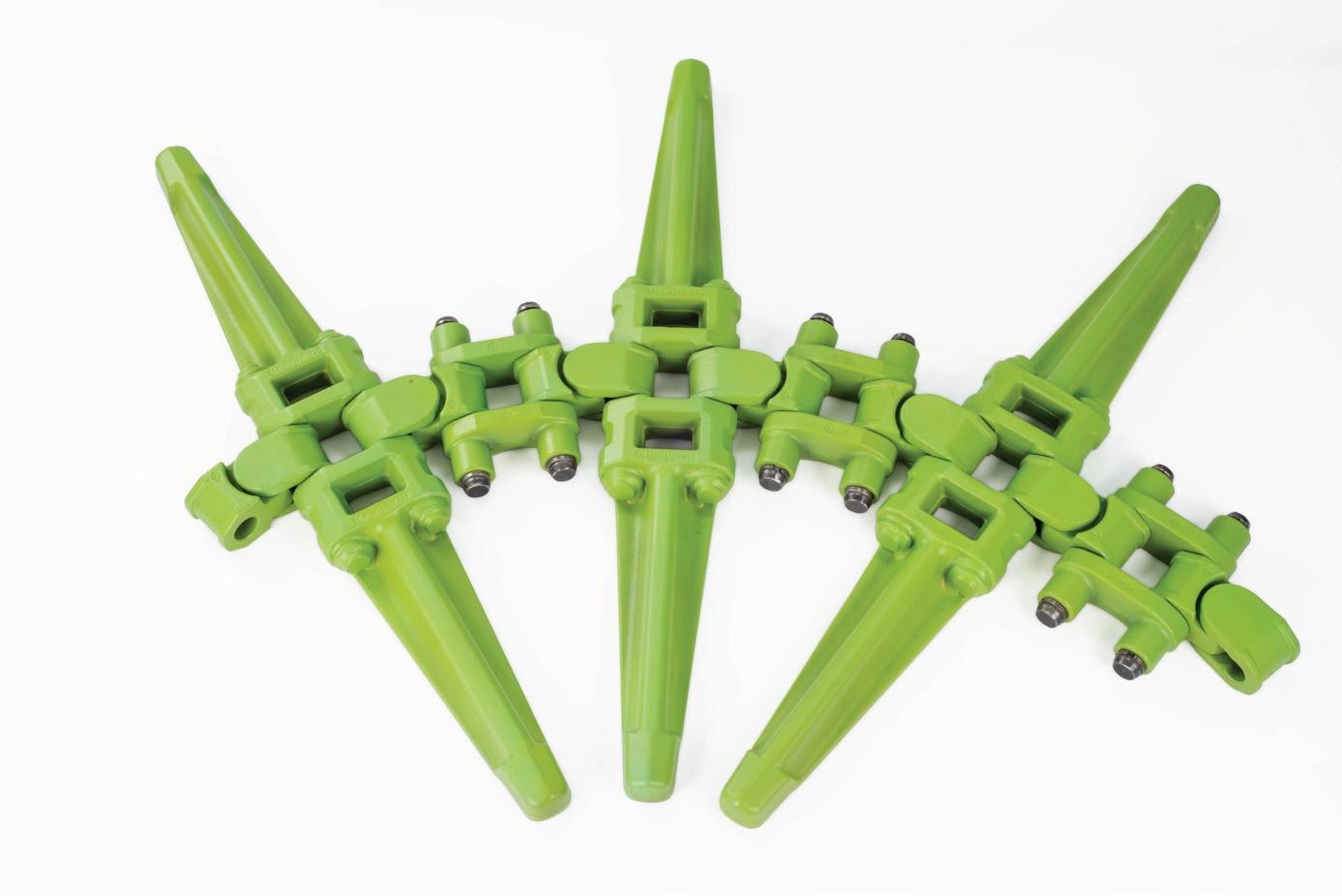
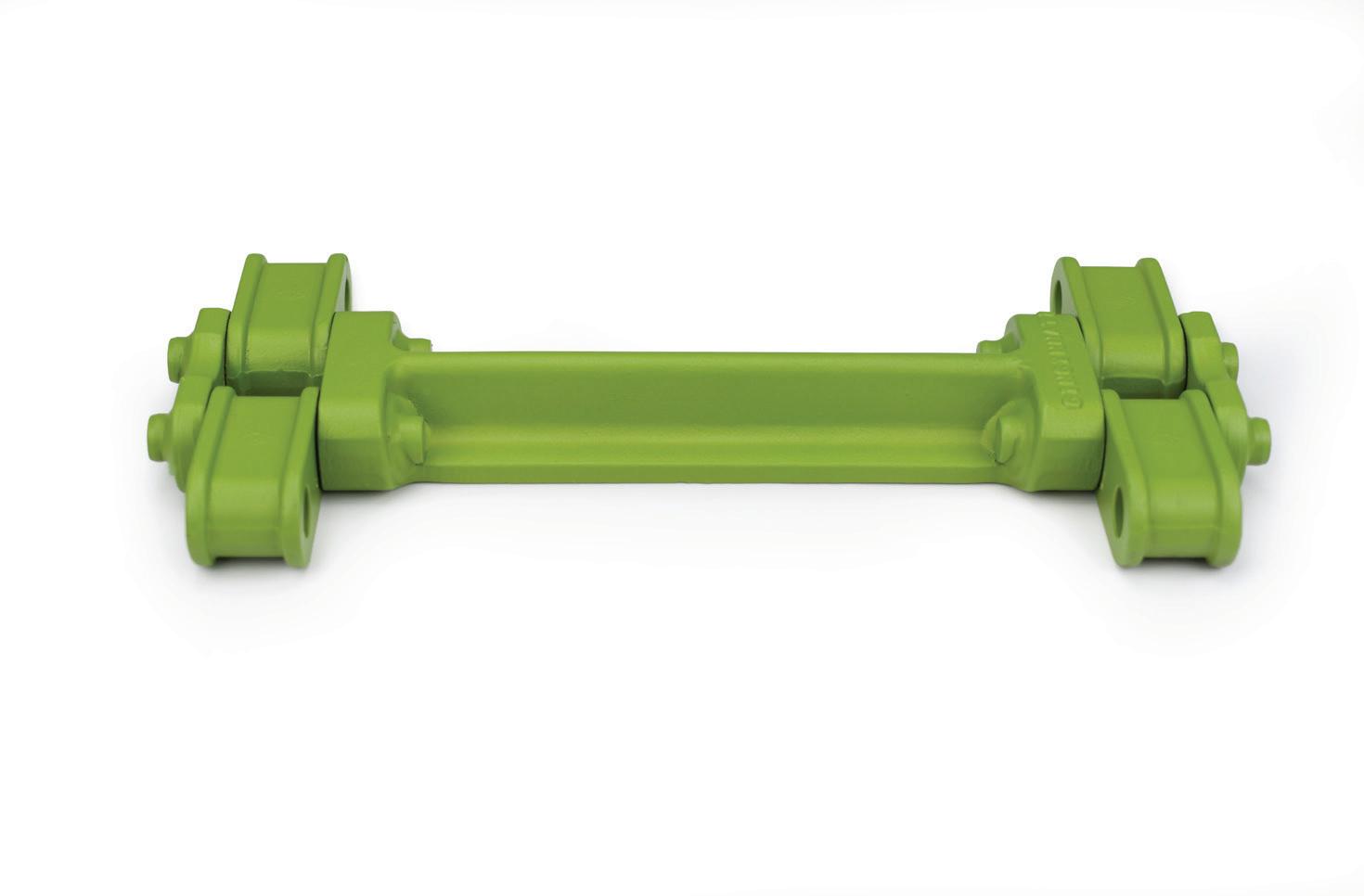
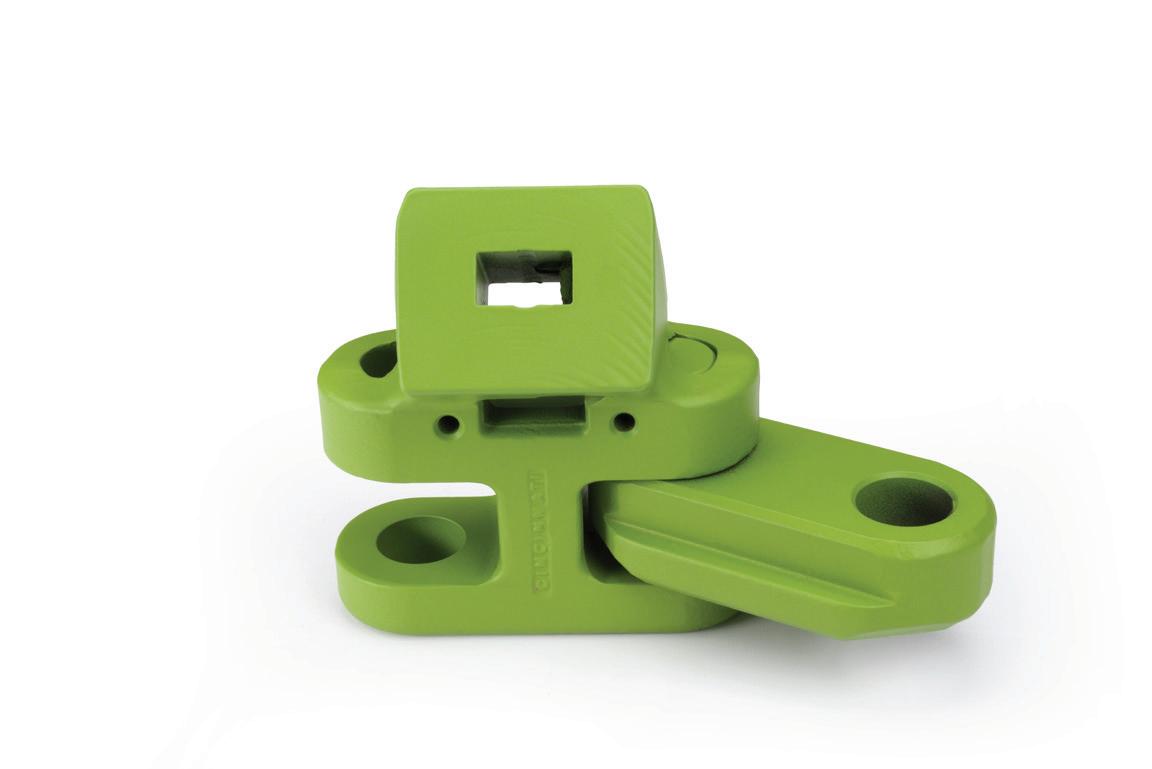
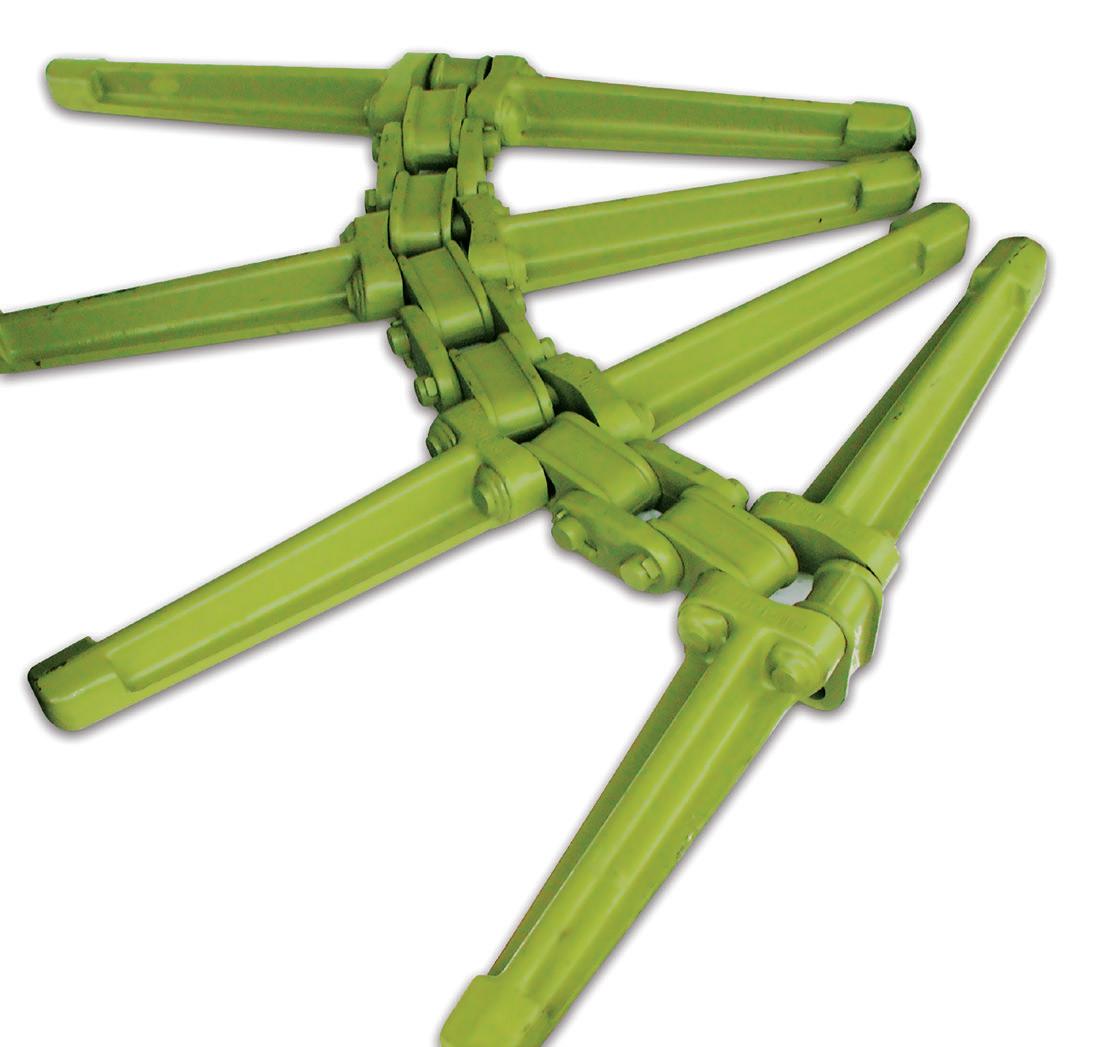
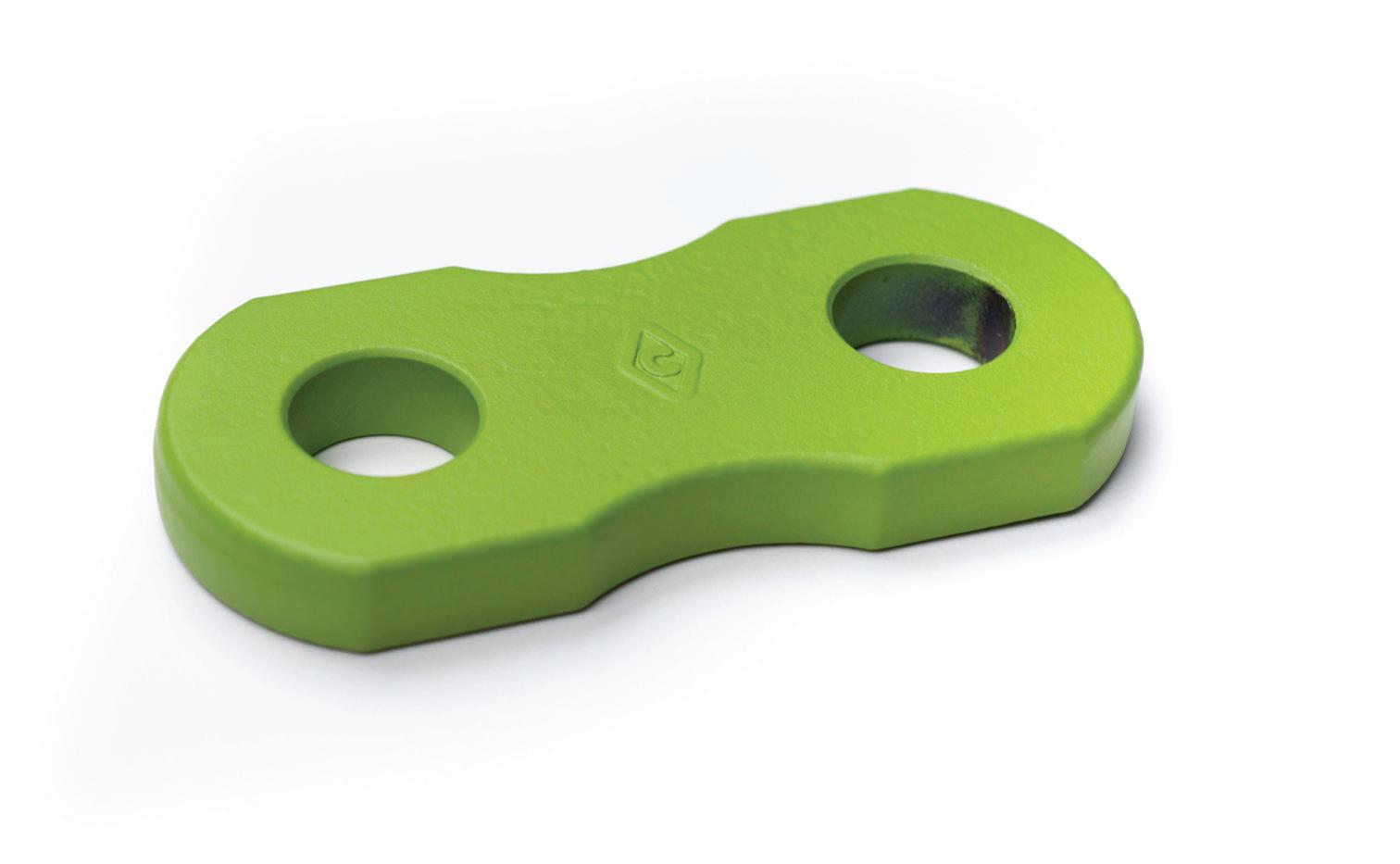
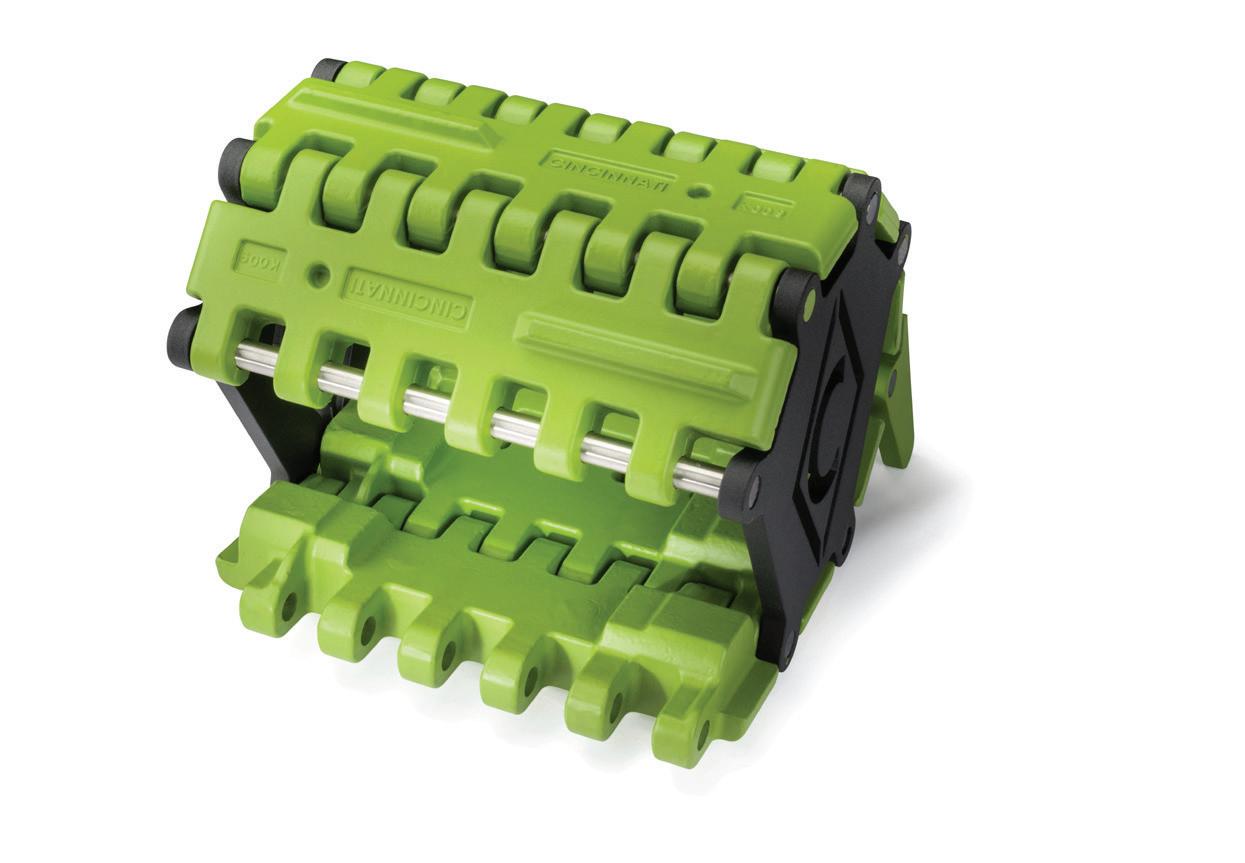



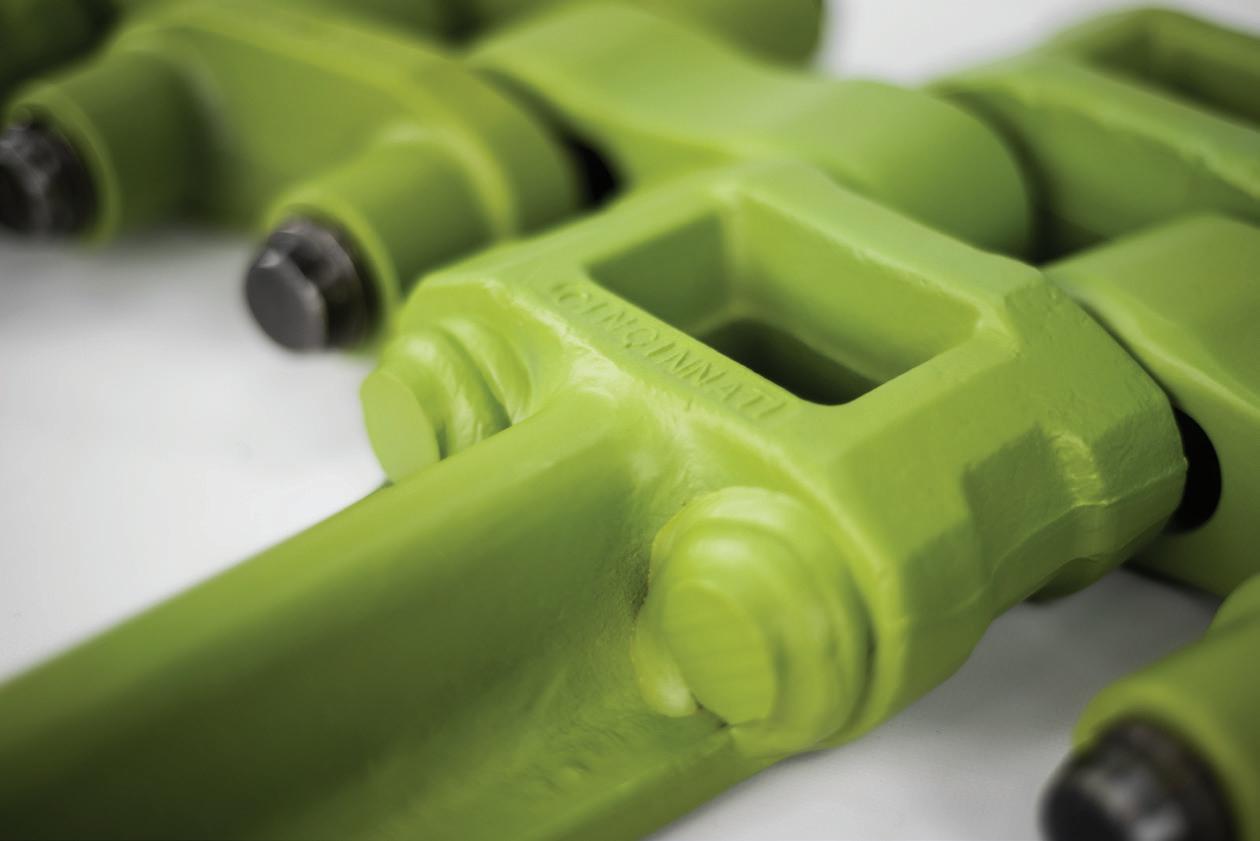


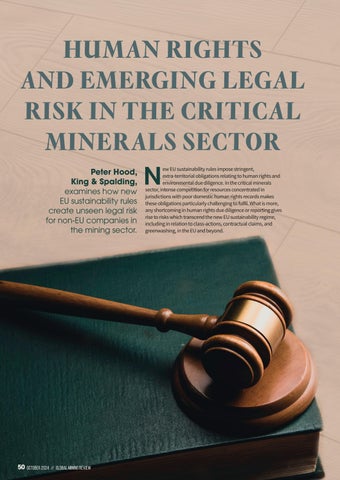
OCTOBER 2024
VOLUME 7 ISSUE 9














10 The Future Of Mining In Asia
Olga Savina of BMI, a Fitch Solutions company, provides an outlook for the mining industry in Asia and evaluates the future opportunities and obstacles it may face.
16 Transforming Mining Operations With Multi-Orbit Satellites
Todd Cotts, Intelsat, outlines how multi-orbit satellite connectivity can accelerate digitalisation and optimise performance in the mining industry.
21 The Future Of Optimised Performance
Petro-Canada Lubricants explores the benefits of ultra-low zinc additives in transmission drivetrain oils.
24 Embrace Change Welcome Progress
Jevons Robotics, Australia, presents insights into the development process and benefits of a new battery electric, payload agnostic, autonomous vehicle for the mining industry.
27 Mind The Gap Part 2: Looking For Innovation In All The Right Places
Zach Savit, Stratom, USA, in the second of two articles, considers how sometimes innovation grows in the open, and sometimes you have to look for it.




30 Bringing Drones To Underground Surveying
Eloise McMinn Mitchell, Flyability, Switzerland, describes how the use of drones in underground surveys can improve safety protocols and the efficiency of data collection.
35 The Ongoing Journey To Minimise Unscheduled GMD Downtime
Maarten van de Vijfeijken, ABB, considers the benefits of remote monitoring platforms in decreasing the unscheduled downtime of gearless mill drives.
39 Rethinking Conventional Comminution
Bjorn Dierx, Weir, highlights the importance of adapting new, energy-efficient grinding technologies in order to improve the sustainability and cost-effectiveness of mining operations.
43 Real Time Quality Control
Henry Kurth, Scantech International Pty Ltd, addresses the rise of online analysers over traditional sampling in bulk material handling.
47 Tried And Tested
Philippe Cyr, Eddyfi Technologies, Canada, evaluates the advancements in non-destructive testing for mining applications.
50 Human Rights And Emerging Legal Risk In The Critical Minerals Sector
Peter Hood, King & Spalding, examines how new EU sustainability rules create unseen legal risk for non-EU companies in the mining sector.
53 From Drill And Blast To Surface Miners
Maggie Moller, Vermeer Corp., USA, and Alseny Conte, Compagnie des Bauxites de Guinée, Republic of Guinea, discuss how the implementation of surface miners can help mining operations become more efficient and less disruptive to neighbouring communities.
To address key industry challenges, mining equipment manufacturers are embedding fleet connectivity capabilities into heavy mining equipment to support telematics, vehicle monitoring, IoT strategies, automation processes, and remote-control operations. Intelsat’s portfolio of FlexMove services stands out in meeting the unique and evolving needs of the mining industry with its multi-orbit fleet connectivity solutions to ensure heavy equipment fleets remain connected everywhere, all the time.
Derrick ® equipment is achieving higher quality product grades in Iron Ore, Gold, and Industrial Mineral operations around the world, saving on maintenance and infrastructure costs
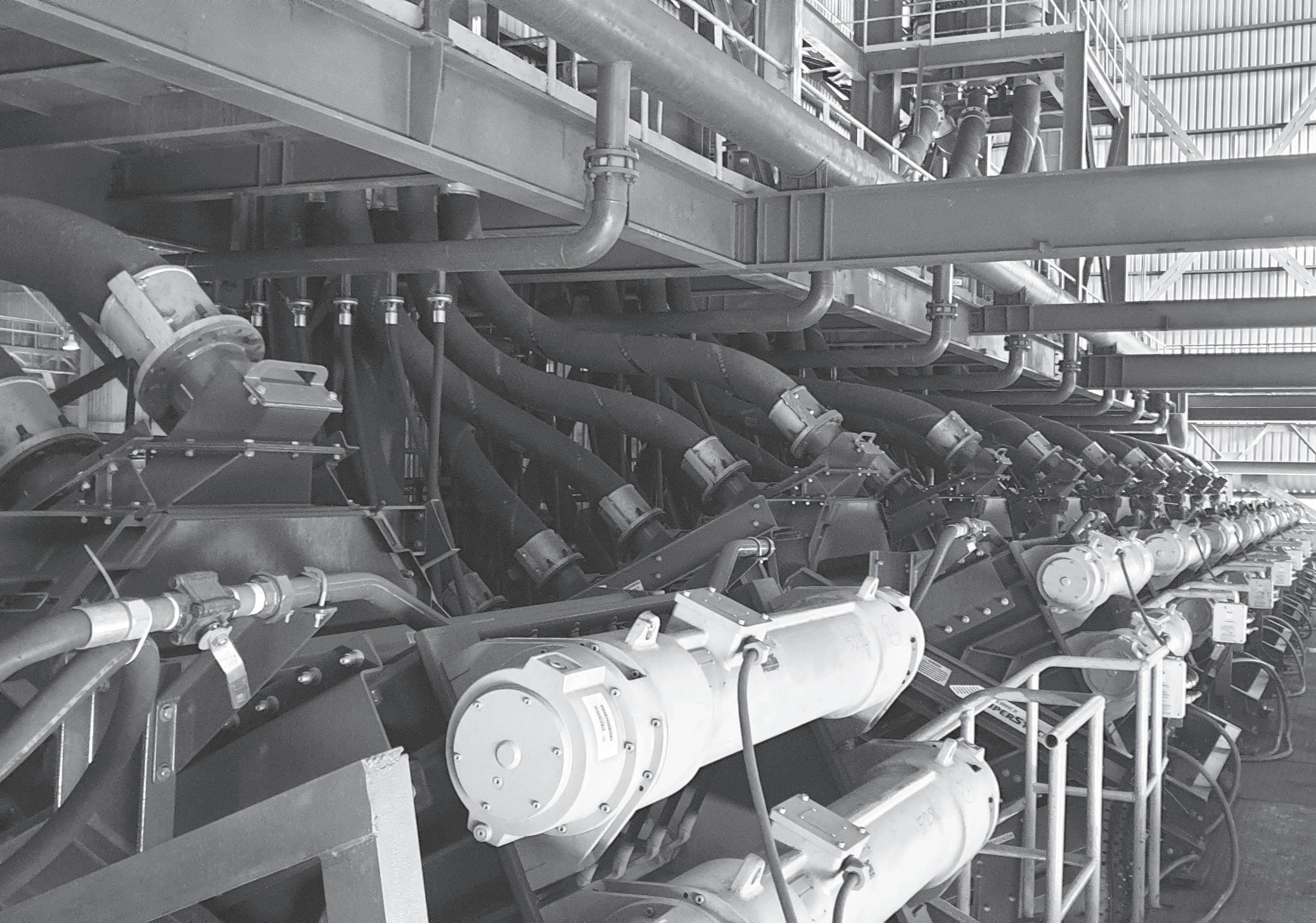


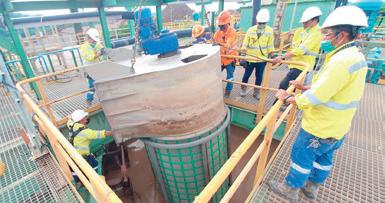
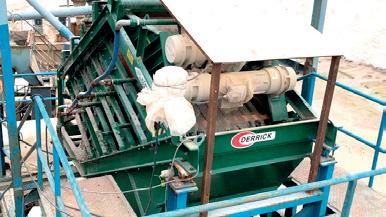

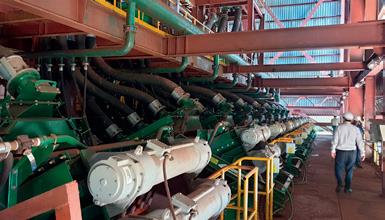


MANAGING EDITOR
James Little james.little@globalminingreview.com
SENIOR EDITOR
Callum O’Reilly callum.oreilly@globalminingreview.com
EDITOR Will Owen will.owen@globalminingreview.com
ASSISTANT EDITOR
Jane Bentham jane.bentham@globalminingreview.com
SALES DIRECTOR
Rod Hardy rod.hardy@globalminingreview.com
SALES MANAGER
Ryan Freeman ryan.freeman@globalminingreview.com
PRODUCTION MANAGER
Kyla Waller kyla.waller@globalminingreview.com
ADMINISTRATION MANAGER
Laura White laura.white@globalminingreview.com
DIGITAL ADMINISTRATOR
Nicole Harman-Smith nicole.harman-smith@globalminingreview.com
DIGITAL CONTENT ASSISTANT
Kristian Ilasko kristian.ilasko@globalminingreview.com
DIGITAL EVENTS COORDINATOR
Merili Jurivete merili.jurivete@globalminingreview.com
HEAD OF EVENTS
Louise Cameron louise.cameron@globalminingreview.com
Global Mining Review (ISSN No: 2515-2777, USPS No: PENDING) is published 10 times per year by Palladian Publications Ltd., and distributed in the USA by Asendia USA, 701 Ashland Ave, Folcroft, PA. Application to Mail at Periodicals Postage Prices is pending at Philadelphia, PA, and additional mailing offices. POSTMASTER: send address changes to Global Mining Review, 701 Ashland Ave, Folcroft, PA. 19032.
Annual subscription (10 issues) £50 UK including postage, £60 overseas (airmail). Claims for non-receipt must be made within four months of publication of the issue or they will not honoured without charge.
SENIOR GLOBAL INDUSTRY LEAD, METALS & MINING, ASPENTECH
The mining sector has undergone a profound transformation over the past few decades. This shift from labour-intensive manual processes to technologically sophisticated operations has not only increased productivity, but has also enhanced safety and sustainability across the entire industry. The advent of geological modelling software, automated drones, and advanced fleet management systems has mitigated risks and boosted operational efficiencies, ushering in a new era marked by unprecedented advancements in mining technology.
Historically, mining was a gruelling process fraught with danger and inefficiency. Geologists and mining engineers spent countless hours manually drawing detailed maps and designs for mine development. Any unexpected changes in geological conditions required revisions that added significantly to their already-painstaking efforts. Moreover, the physical extraction of minerals involved laborious work in harsh and potentially dangerous conditions, often with limited regard for environmental consequences.
Today, the picture is strikingly different. Modern technology enables small teams of specialists to design, operate, and maintain mining operations with an unprecedented level of precision and safety. Advanced software not only models, but also simulates and optimises mining processes, reducing the time required to plan operations from months to mere days.
Despite these advancements, the integration of technology within the mining industry remains a significant challenge. The vast amount of data generated by disparate systems offers the potential for deep insights and operational efficiencies – if it can be effectively integrated and leveraged. However, the lack of interoperability among systems from various vendors and the fragmentation of data across platforms often hinder this potential.
This is where the importance of seamless integration comes into play. By facilitating effective communication between different technological systems, integrated solutions enable mining companies to optimise their operations, meet production targets, and maintain investor confidence. Such systems are not merely beneficial; they are essential for the continued growth and competitiveness of the mining industry in the global market.
In line with this, centralised data management solutions are critical. These systems exemplify the future of mining operations by enhancing real-time decision-making and operational transparency. With technologies that allow for the rapid analysis and application of data, companies in this space can more effectively manage modern mining challenges.
The transition to integrated technological solutions represents more than just an operational upgrade; it reflects a broader shift towards a more sustainable and responsible mining industry. By reducing the reliance on manual labour and increasing the use of data-driven strategies, mining can continue to meet the world’s resource needs without sacrificing safety or environmental integrity – all while delivering insights into higher levels of mining companies’ organisational structures.
Moreover, the integration of technology facilitates a better understanding of the mining process from start to finish, enabling companies to anticipate and respond to potential challenges with greater precision and in time frames that lead. This enhances operational efficiency, improves material recovery rates, reduces waste, and minimises environmental impact.
As we stand on the brink of a technological renaissance in mining, the industry must embrace the integration of these advanced systems across all aspects of the value chain. The journey towards fully integrated mining operations may be complex, but the rewards – increased efficiency, enhanced safety, and improved sustainability – are too significant to ignore.
In conclusion, the future of mining depends not just on individual technological advancements, but on our ability to integrate these technologies into a cohesive, efficient system and to generate insights from that data in meaningful actionable time frames. As mining operations become more complex and the demand for resources continues to grow, the successful integration of cutting-edge technologies will be crucial for the industry’s evolution. The time to invest in these technologies is now, to ensure a profitable, safe, and sustainable future for mining worldwide.
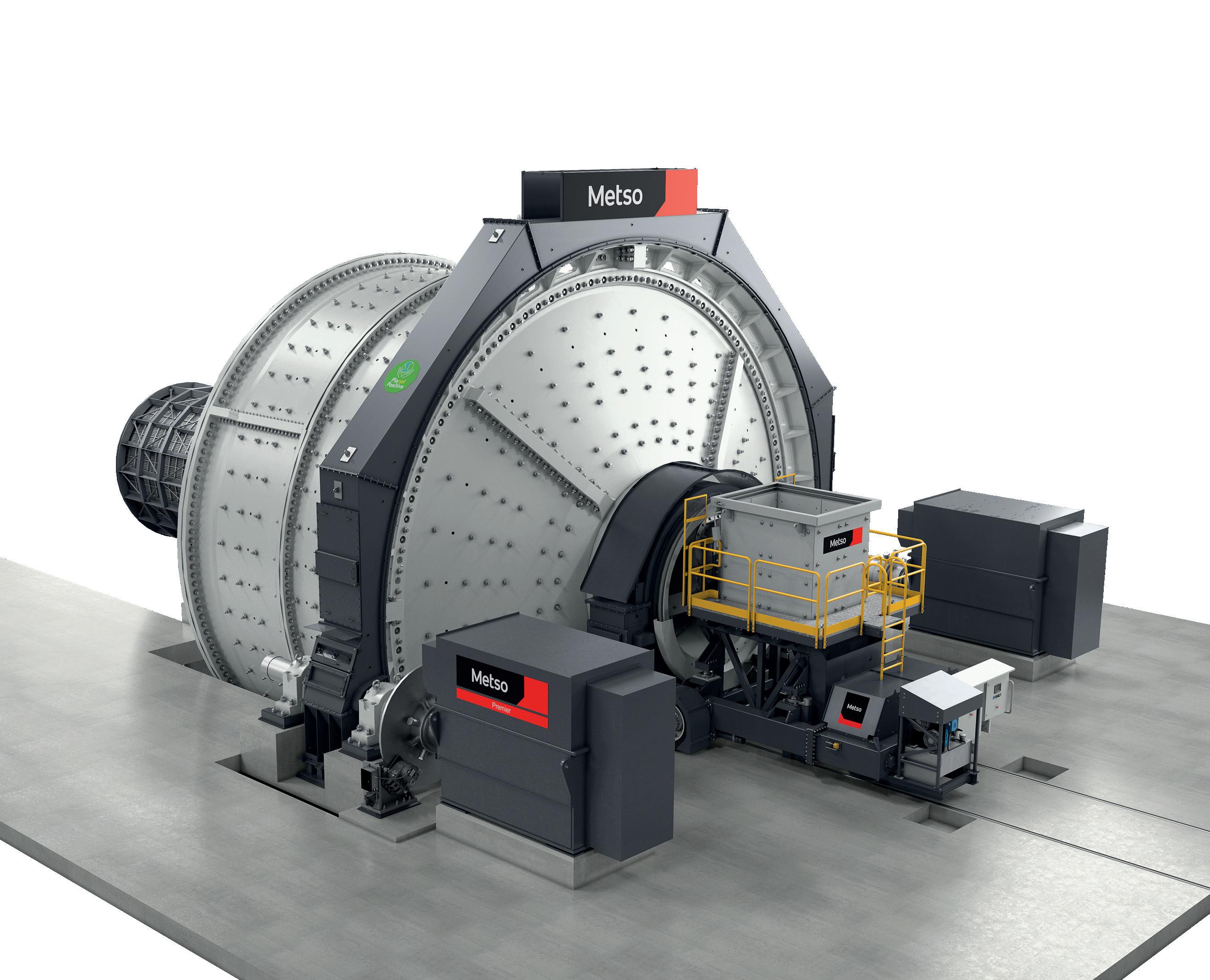
Grinding operations are unique and require expertise to find an optimal solution. Metso Premier™ horizontal grinding mills bring together limitless possibilities in design and unmatched performance to exceed your operational goals.

Epiroc and Fortescue have announced the handover of Australia’s first Pit Viper 271 E (PV271E) electric-driven blasthole drill rig at MINExpo in Las Vegas.
Marking a key milestone in Fortescue’s decarbonisation journey, the PV271E will soon be deployed at Fortescue’s Pilbara iron ore operations, making it the first electric PV271 in Australia to operate on a mine site.
This versatile drill rig is designed to enhance productivity while eliminating the need to operate on diesel. With the ability to drill single-pass holes up to 18 m deep and 270 mm in diameter, the drill rig has a 34 t bit load capacity, ensuring reliable operation across diverse mining conditions. Enhanced automation features also maximise safety and productivity, making the PV271 a crucial step forward for reducing emissions in mining practices.
President of Epiroc’s Surface Division, José Manuel Sánchez, said, “For Epiroc, partnering with Fortescue to deliver Australia’s first electric-driven autonomous Pit Viper drill is a milestone achievement in our shared pursuit of a zero emissions, sustainable mining industry. The electric-driven Pit Viper 271E, equipped with advanced automation features, will play a vital role in making mining more sustainable while ensuring safety and productivity.”
Fortescue Metals CEO, Dino Otranto, added, “At Fortescue, we’re moving at speed to decarbonise our iron ore operations by deploying a green mining fleet and locomotives. The deployment of the electric Pit Viper marks another milestone in our decarbonisation journey, and the first step in our ability to deploy zero emissions blasthole drill rigs across our sites.
By acquiring the Epiroc PV271 we’re proving that the technology for zero emissions mining is here, now.”
Liebherr and BHP have announced a Global Framework Agreement (GFA). This agreement further cements their long-standing partnership, uniting both companies in their shared pursuit of cutting-edge mining solutions.
Building on a history of successful collaboration, the GFA merges BHP’s drive for responsible resource extraction with Liebherr’s technological expertise in heavy machinery. Together, they aim to continue pushing the boundaries of operational efficiency while enabling greenhouse gas emission reductions for BHP’s operations.
“This extension is a testament to the strength of Liebherr’s relationship with BHP and our shared vision for the future of mining”, said Dr Jörg Lukowski, Executive Vice President, Sales and Marketing, Liebherr-Mining Equipment SAS. “Over the years, we’ve worked closely with
BHP to develop solutions that not only improve operational efficiency, but also drive more sustainable outcomes. We are excited to continue this journey and deliver the latest advancements in automation, digitalisation, and electrification to their operations globally.”
Under this agreement, Liebherr and BHP will collaborate closely on delivering world-class machine performance and integrating the latest advancements in safety, automation, digitalisation, and electrification across BHP’s global mining operations.
BHP’s Chief Commercial Officer, Ragnar Udd, added, “This renewed agreement between BHP and Liebherr not only reaffirms our trusted partnership over the years, but also signals our collective ambition towards helping to influence the future of mining.”

China Mining Expo
23 – 25 October 2024
Xi’an, China www.chinaminingexpo.com
Mining, Metals, and the Circular Economy
29 – 30 October 2024
Sydney, Australia www.imarcglobal.com/miningcircular
IMARC
29 – 31 October 2024
Sydney, Australia www.imarcglobal.com
The Mining Show
26 – 27 November 2024
Dubai, UAE www.terrapinn.com/exhibition/ mining-show/
Resourcing Tomorrow
03 – 05 December 2024
London, UK www.resourcingtomorrow.com
Investing In Africa Mining Indaba
03 – 06 February 2025
Cape Town, South Africa www.miningindaba.com
SME MINEXCHANGE
23 – 26 February 2025
Denver, USA www.smeannualconference.org
PDAC
02 – 05 March 2025
Toronto, Canada www.pdac.ca/convention
GRX25
20 – 22 May 2025
Brisbane, Australia www.grx.au
To stay informed about upcoming industry events, visit Global Mining Review’s events page: www.globalminingreview.com/events
To expand its artificial intelligence (AI) capabilities and help customers optimise their mining operations, Komatsu has announced its intent to acquire Octodots Analytics, a Chile-based digital solutions provider.
The announcement comes as the company debuted its new Modular ecosystem, a bold vision for the future of mine site optimisation and data sharing, at MINExpo 2024 in Las Vegas. Building upon Komatsu’s DISPATCH fleet management system, the Modular ecosystem is a set of interconnected platforms and products designed to simplify existing workflows.
“Our ecosystem is designed to empower customers to optimise decision making at the machine, mine site, and enterprise levels,” said Jason Fletcher, SVP Mining Technology Solutions, Komatsu. “Octodots’ expertise and solutions map perfectly to what we’ve created and we are excited about the opportunities to incorporate their products and capabilities into our offering.”
Since 2017, Octodots Analytics has been developing and commercialising advanced digital solutions for industries including mining, construction, forestry, transportation, and more. The company’s multidisciplinary team has particular expertise in three key areas: mining engineering, transportation, and data science.
Barrick Gold Corporation has awarded Metso a major order for the supply of copper concentrator plant equipment to their Lumwana expansion project in North-Western Province in Zambia.
Metso’s scope of delivery includes key equipment for grinding, flotation, thickening, feeding, and filtration. The value of the order is approximately €70 million, and it is booked in the Minerals segment’s 3Q24 order intake.
“We are honoured to have been selected by Barrick as the strategic partner for this project. The copper concentrate production process in Lumwana has been designed with sustainability and production efficiency in mind, with most of the equipment selected from our Planet Positive offering,” said Markku Teräsvasara, President of the Minerals business area and Deputy CEO of Metso.
Lumwana is a significant contributor in Barrick’s expanding copper portfolio, catering to the rapidly increasing demand for copper required for the energy transition. The project is also elemental in reviving Zambia’s copper industry and contributing to the local economy. The expansion will turn Lumwana into one of the world’s major copper mines, with projected annual production of 240 000 tpy of copper.
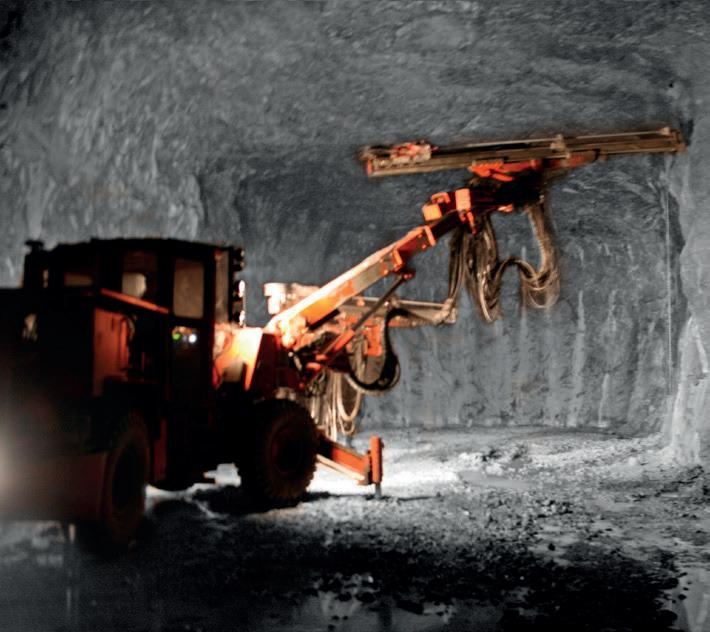
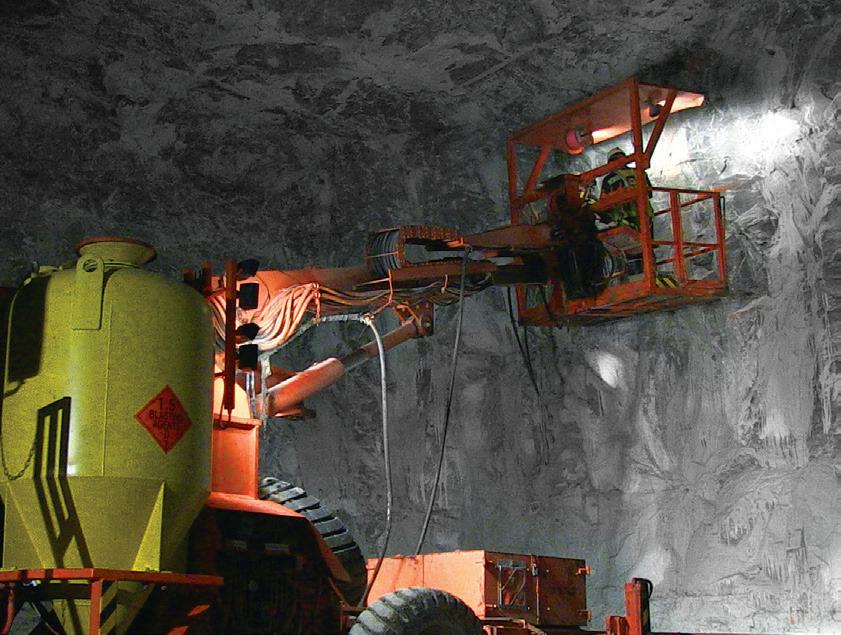
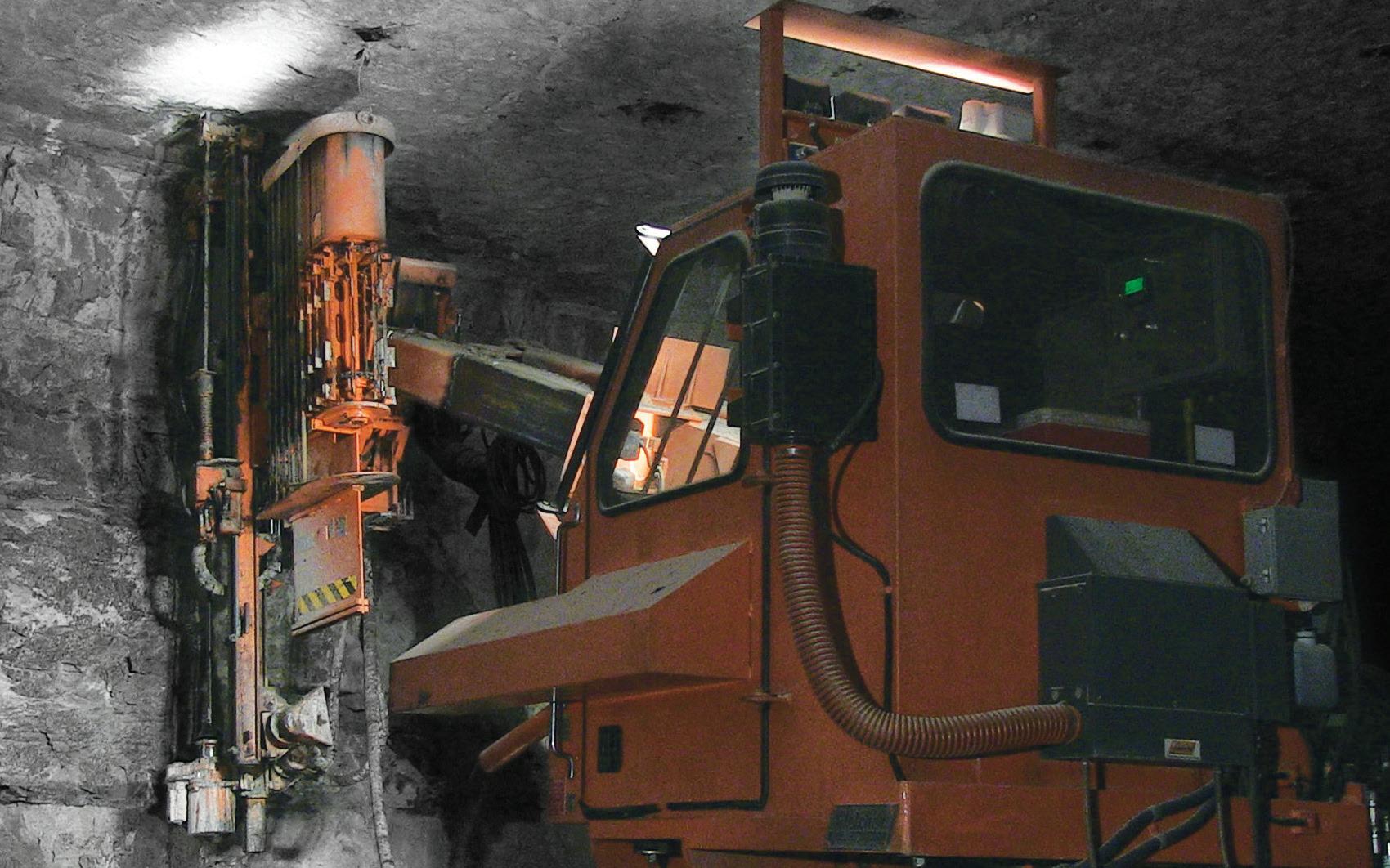
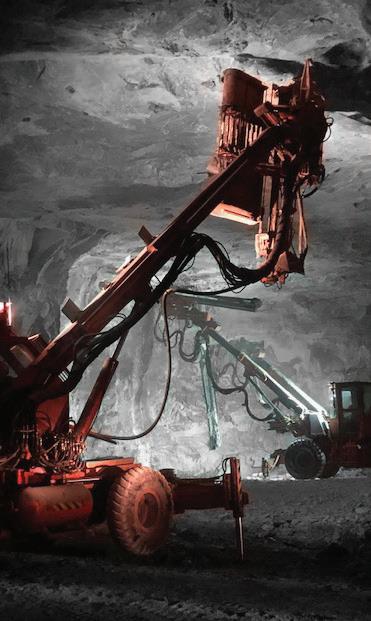


Thiess and FLANDERS have signed an agreement to collaborate on bringing fleet decarbonisation options to mine owners in North America and a Letter of Intent (LOI) for Australia and Asia, reducing emissions and improving efficiencies of mining operations.
Up to 80% of direct greenhouse gas emissions at a mine site originate from fossil-fuelled mining vehicles, making mining fleet decarbonisation a key priority for mine owners targeting net zero carbon emissions by 2050.
Thiess Group Executive Chair and CEO Michael Wright said: “This collaboration will bring together Thiess’ 90 years of mining and asset management experience with FLANDERS’ innovative FREEDOM® hybrid haul truck solutions – designed to deliver up to 30% fuel savings, reducing greenhouse gas emissions and enhancing productivity.”
FLANDERS Chief Commercial Officer, Wayne Chmiel, added: “Recognising both the need and opportunity in the global mining marketplace for retrofittable agnostic technology solutions and services, FLANDERS is proud to work with Thiess to combine Thiess’ world-class expertise in running multi-brand fleets at the lowest cost per tonne for loading and hauling, with FLANDERS world-class expertise in retrofittable agnostic mining technology solutions.
“This collaboration will help miners ‘dCarbonise and dCost’, allowing customers to reduce their carbon emissions while reducing overall cost per tonne.”
In addition to the technological innovations outlined above, Thiess and FLANDERS will work together to ensure Thiess’ highly skilled maintenance workforce is equipped with the latest expertise to diagnose, troubleshoot, and innovate electrical systems and emerging technologies in the mining sector.
Nouveau Monde Graphite has awarded ABB a contract to supply, construct and commission the 120 kV substation for its Phase-2 Matawinie Mine in the province of Quebec, Canada, as part of the construction preparation for the establishment of a 103 000 tpy graphite mining and concentrator complex.
Located 120 km north of Montreal, the Matawinie Mine will be connected to the provincial hydropower network, enabling the access to clean energy to support mining activities and concentrator production of carbon-neutral graphite concentrate destined for the lithium-ion battery market. Nouveau Monde Graphite is set to equip the Matawinie Mine with a zero-emission mining fleet and associated charging infrastructure, which would make it the world’s first all-electric opencast mine when it starts operating.
“We are excited to move one step closer to building the mine of the future, powered by clean energy to responsibly extract and produce a critical mineral for global decarbonisation”, said Eric Desaulniers, Founder, President, and CEO of Nouveau Monde Graphite. “Our environmental stewardship and innovative mindset have been matched by the team at ABB, from the commencement of our electrification journey, to translate our vision into reality.”
A recognised global leader in mine electrification with its ABB eMine™ portfolio of solutions, ABB will lead construction of the substation as the primary connection point between the mine site and Hydro-Québec’s hydropower generation facility, enabling full electrification of the Matawinie Mine using clean energy.
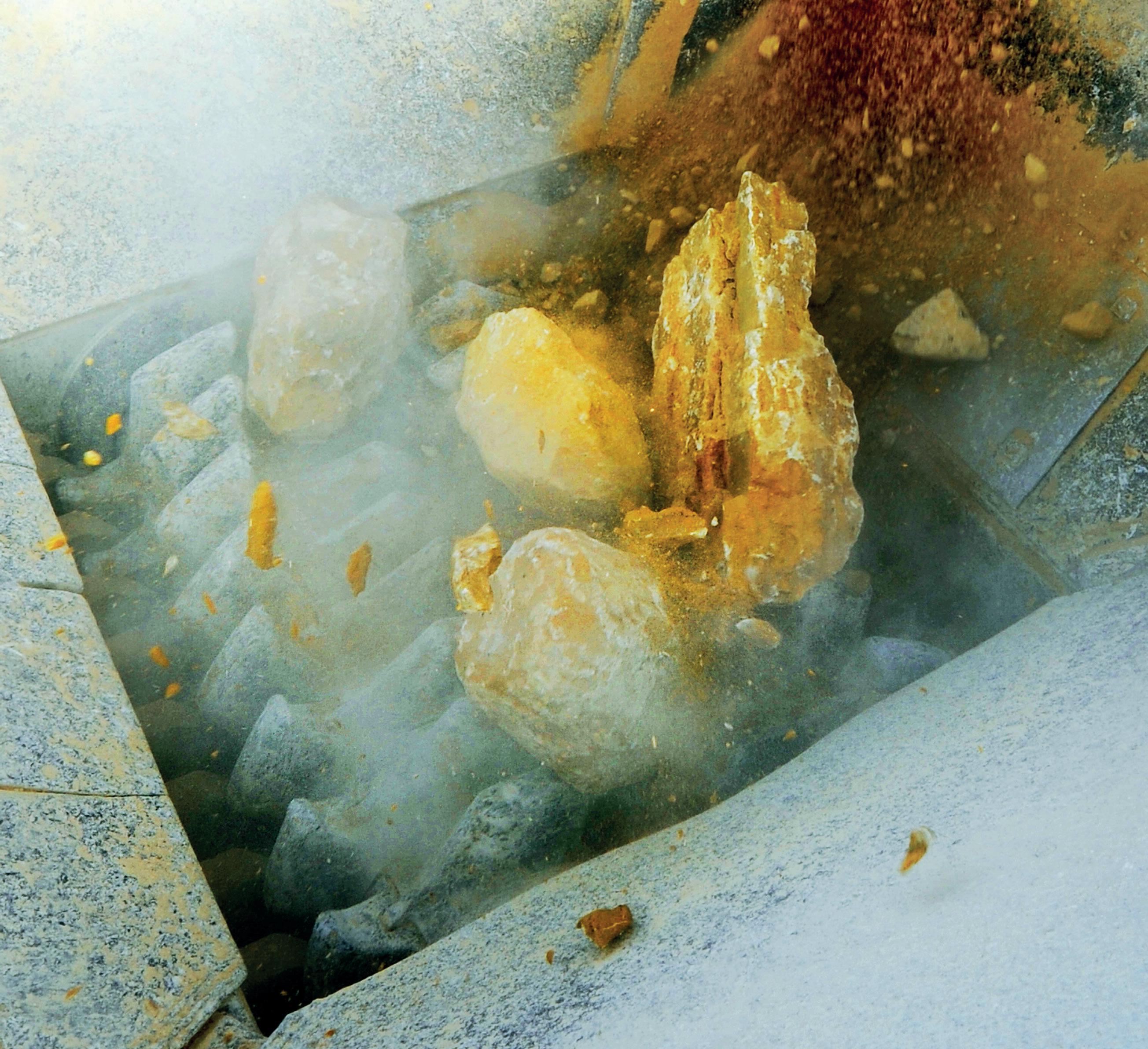
ADVANCING SIZER TECHNOLOGY FOR A MORE SUSTAINABLE MINE
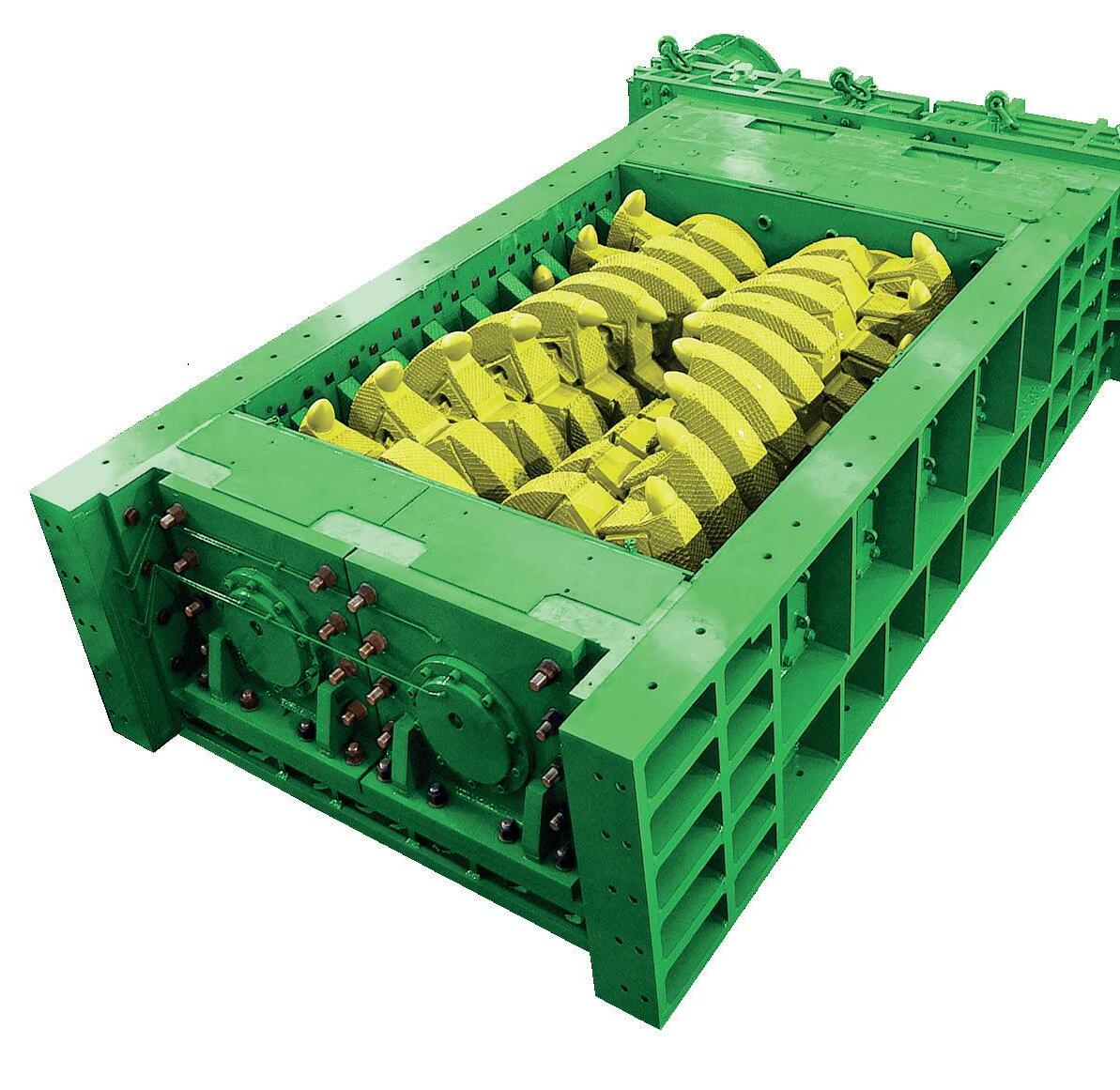
More than four decades ago, we innovated the Mineral Sizer™ to help underground coal mines break coal more efficiently and effectively whilst also increasing productivity.
Through continuous innovation, the MMD Mineral Sizer has evolved into a unique range of dependable solutions and systems, capable of efficiently processing any combination of wet, sticky, hard, dry and abrasive material.
Whether its a Sizer or complete Sizer Station, each machine is optimised to suit your exact requirements. Our experienced teams of professionals work closely with customers to provide an efficient solution that offers low total cost of ownership and contributes towards wider net carbon zero targets.
Discover our Sizer solutions +
Olga Savina of BMI, a Fitch Solutions company, provides an outlook for the mining industry in Asia and evaluates the future opportunities and obstacles it may face.
This article will discuss five key themes set to shape the mining industry across the Asia-Pacific region in the coming years.
In 2024, it is expected that Mainland China’s mining industry value will decline by 16.7% y/y due to weak

industrial growth for the main sectors, as well as a relatively lower price outlook for major commodities, including coal. The Chinese economy continues to face a number of downside risks, with its struggling real estate sector front and centre. In 2Q24, real GDP growth fell to 4.7% y/y, down from 5.3% in the previous quarter, underperforming nearly all analyst forecasts. BMI’s Country Risk team expects China’s GDP growth to slow down in 2024 to 4.7% y/y, with the economy missing the

government’s growth target of around 5.0%. It is also evident that the country’s recent official manufacturing PMI remained in contractionary territory for the third consecutive month in July, with a reading of 49.4 (June: 49.5), highlighting the potential for weaker metals demand in the leading consumer globally. At the same time, continued weakness in the Chinese property sector, which has been weighing on overall economic growth, has significant implications for the
metals market. China is the world’s largest consumer (as well as producer) of industrial metals and coal, with the property sector being a major source of demand across a broad spectrum of the metals market, including steel, iron ore, coking coal, and more. BMI’s Country Risk team believes that China’s housing downturn is likely to last for years, driven by an oversupply amid waning speculative demand. Meanwhile, developers face a credit crunch and repairing the sector’s balance sheet is
expected to take years. Additionally, homebuyers are likely to stay away due to falling prices, stretched valuations, and the risk that developers may not complete their homes. On 17 May 2024, authorities in Mainland China announced more measures aimed at shoring up the housing market, including lowering mortgage rates and down-payment ratios. The most notable of these was the CNY300 billion in central bank funding to support state firms in purchasing completed but unsold houses from developers. That said, BMI’s Country Risk team maintains scepticism about whether this will drastically change household perception of the property market outlook, which is crucial for improving consumer confidence, highlighting that the end of China’s housing crisis is not yet in sight. As of July 2024, the ongoing property downturn still shows little sign of reversing, with investment in the real estate sector
declining by 10.1% y/y over January – June 2024. BMI also highlights that the outcome of China’s Third Plenum at the end of July did little to alleviate concerns.
According to the July 2024 update from the US Climate Prediction Center, La Niña is expected to develop during August – October 2024, with a 70% likelihood, and persist into the Northern Hemisphere winter into the end of 2024 and the beginning of 2025, with forecasts indicating a 79% chance of continuation through November –January. While the exact impact of La Niña remains uncertain and subject to its intensity and duration later in 2024, the potential negative effects serve as downside risk to BMI’s regional outlook.
As opposite to El Niño, La Niña is characterised by cooler-than-usual sea surface temperature in the equatorial Pacific, caused by the strengthening of trade winds that increase the upwelling of cold water. This phenomenon typically leads to above-average rainfall in Southeast Asia and Australia. La Niña is usually defined by the Oceanic Niño Index (ONI) as a sustained cooling of the sea surface temperatures in the Niño 3.4 region, with values less than -0.5°C. As a rule, La Niña events occur every 2 – 7 years and typically last for 9 – 12 months, though they can occasionally extend over several years.
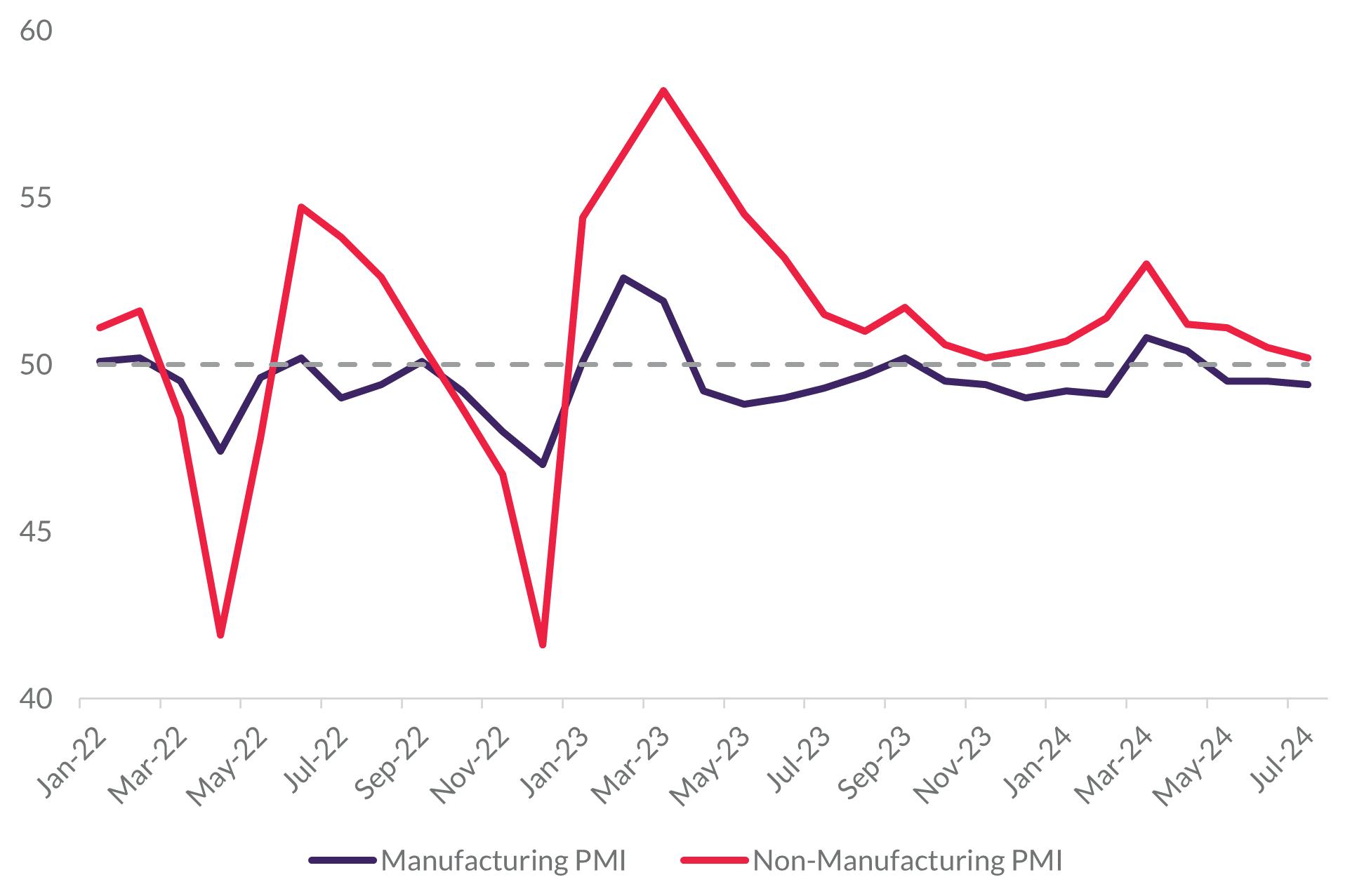
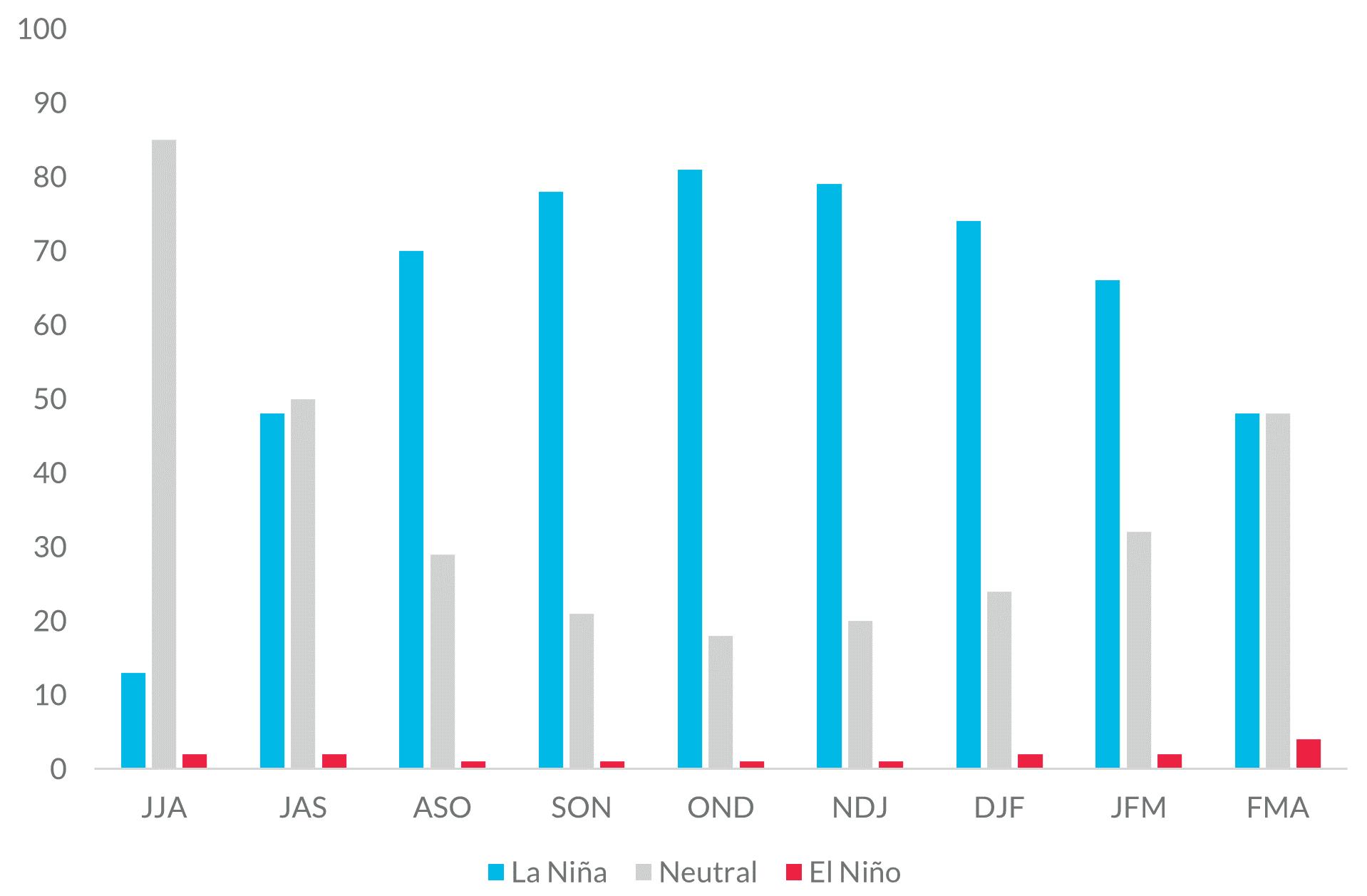
Should La Niña materialise in the second half of 2024, mining companies in the region could face heavy rainfall and flooding, potentially disrupting mine operations and logistical infrastructure. In Australia, the previous 2020 – 2023 ‘Triple-Dip’ La Niña episode and associated heavy rainfall and flooding disrupted coal mines in New South Wales and Queensland. Wet weather conditions boosted by the 2020 – 2023 La Niña episode also wreaked havoc in Indonesia, bringing flooding and landslides and affecting mine sites.
Asia will maintain its leading role in the absolute production of lithium concentrates through Australia,






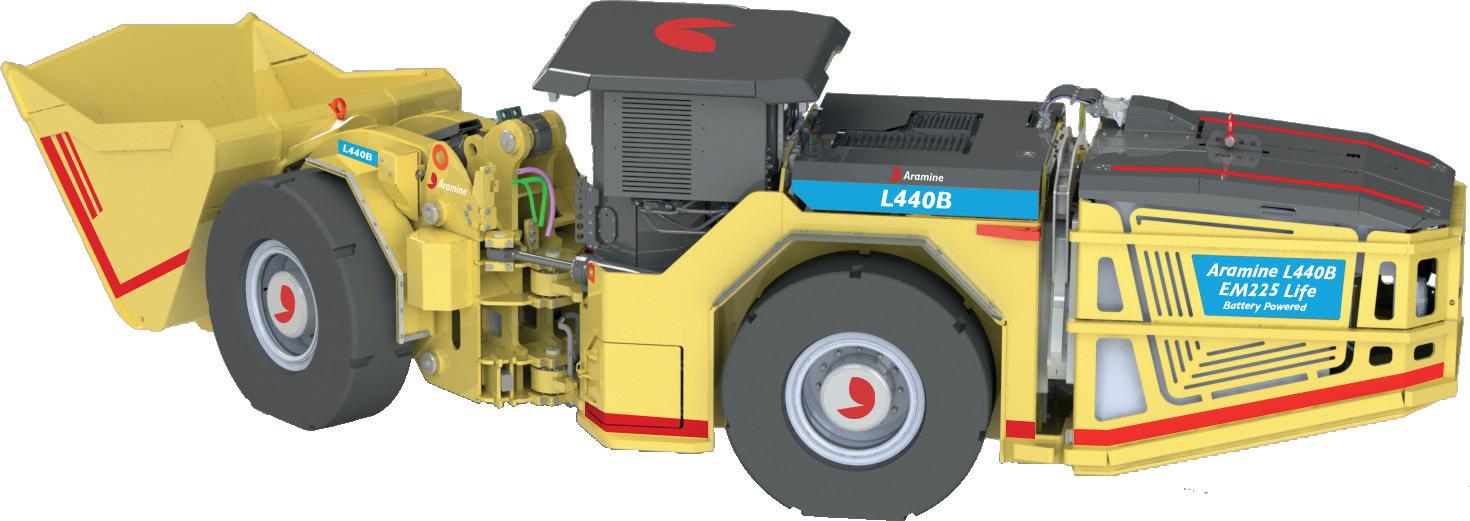







which is expected to remain the world’s top producer, bolstered by its strong projects pipeline. Mainland China will continue to import lithium concentrates for its battery industry while investing to expand its domestic production capacity and securing the lithium supplies by developing projects overseas.
According to the USGS, in 2022, out of 777 kt lithium carbonate equivalent (LCE) produced globally, 518 kt LCE was produced in Asia, with Australia accounting for 398 kt LCE and Mainland China the remaining 120 kt LCE. Australia is by far the world’s top producer of lithium, accounting for more than 51% of global lithium production in 2022, and with a strong project pipeline, it is expected that the country will maintain its dominant position in the global lithium market for years to come. Lithium production in Australia is dominated by hard rock spodumene, with Western Australia providing almost all of the country’s lithium production, mainly due to its attractive export infrastructure and geographical proximity to Asian markets. Globally, Mainland China is the largest consumer of lithium, due to the size of its battery manufacturing industry for electric vehicles (EVs), renewable energy systems, and consumer electronics, and the market is expected to continue investing in lithium projects worldwide, as well as in research and development to increase extraction domestically.
As for the lithium refining market, Asia-Pacific is also expected to remain among the dominant forces behind the supply of lithium chemicals. Notably, Mainland China dominates both lithium carbonate and lithium hydroxide production, and Australia has been also actively seeking to gain a bigger share of lithium processing and refining capacity. As Western markets seek to reduce a keyman risk in China’s supply of refined lithium, Australia stands to benefit by introducing domestic refineries and processing plants close to its lithium mines.
Australia is expected to outperform other markets in the Asia-Pacific region in terms of growth and investment in the mining industry. Specifically, Australia is well-positioned to benefit from the battery revolution, with strong cobalt and lithium projects. Additionally, the Australian government is strongly focused on critical minerals, aiming to enhance the attractiveness of Australia’s mining regulatory environment. In June 2023, Australia released its new Critical Minerals Strategy 2023 – 2030, focusing on seizing its critical minerals opportunity.
Moreover, Australia is poised to be the global and Asian mining industry leader in the adoption of technology to reduce costs, improve efficiency, and enhance mine safety. This advantage is attributed to the country’s strong network connectivity, reliable power supply, highly skilled labour force, and government support. The mining landscape is currently experiencing a technological disruption, where companies are at a crossroads between the traditional practices of the past and a transformative, sustainable future. State-of-the-art mines incorporate cutting-edge technological innovations such as cloud computing, advanced sensors, drones, increased automation, and the integration of machine learning and artificial intelligence. Decarbonisation efforts will also be increasingly relevant for the mining sector as firms seek to reduce emissions across their supply chains.
Carbon emission reduction and environmental concerns are expected to be at the forefront of priorities for mining companies in the region over the coming years. The shift towards a low-carbon economy will incorporate changes to regulatory frameworks, becoming less favourable to highly pollutive mining operations. Notably, China is expected to continue ramping up environmental regulations. Since its 2020 pledge to reach carbon neutrality by 2060 and its plan to achieve peak carbon emissions before 2030, China has made notable steps to reduce its carbon intensity. China emits the largest amount of emissions in the world, with its mining industries contributing significantly to the country’s pollutive nature.

As for Australia, miners in the country are likely to face growing pressures to reduce their environmental impact by incorporating cleaner power sources into mining operations and shifting away from coal. Expanding mining operations could face greater scrutiny, require more regulatory approval, or even encounter community and political pushback.
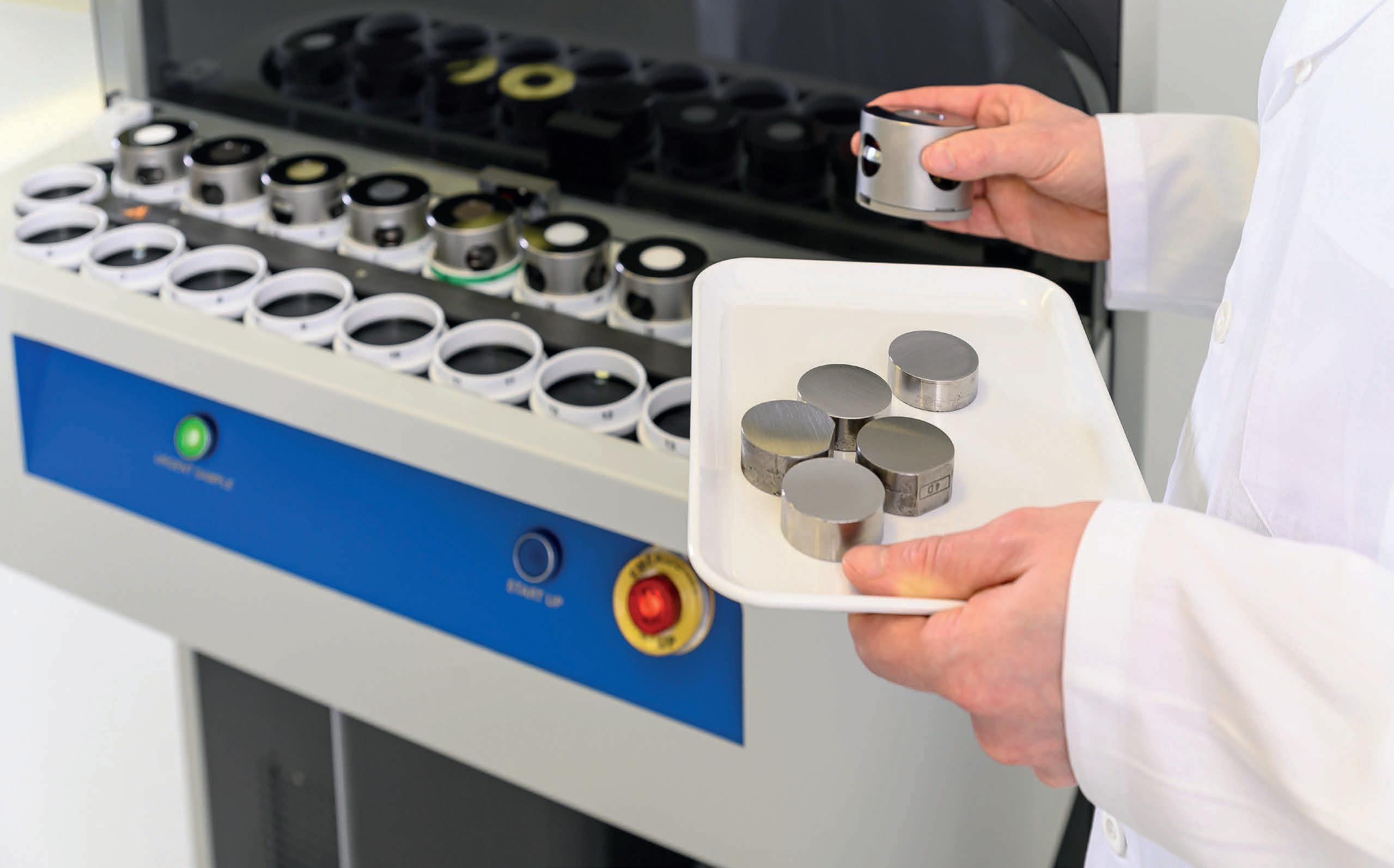

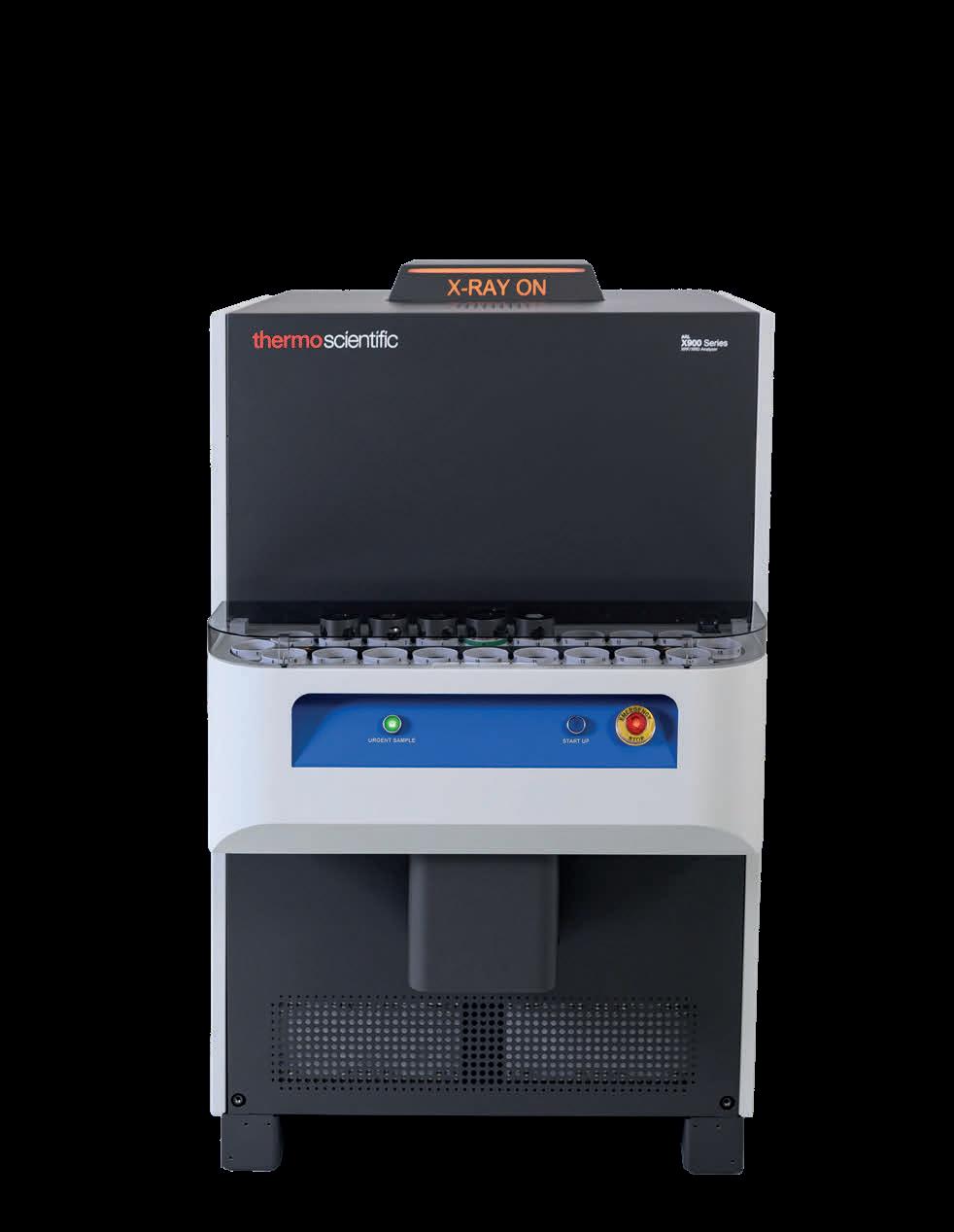



Todd Cotts, Intelsat, outlines how multi-orbit satellite connectivity can accelerate digitalisation and optimise performance in the mining industry.
The mining industry remains in the throes of a digital transformation. With increased frequency, mining owners and operators continue to adopt and deploy new technologies and connected applications to enhance productivity, reduce costs, improve workplace safety, comply with always-emerging regulatory requirements, and overcome rampant labour shortages using remote control and autonomous operations.
Mining organisations are turning to technology and connectivity solutions to address and overcome several key industry challenges, which include the following:
The global need for the earth minerals extracted by mining companies continues to rise. Benchmark Mineral Intelligence projects that 384 new mines will be needed just to meet demand for materials to manufacture batteries for electric vehicles, smartphones, solar panels, and wind turbines. To meet expanding demand, existing mines will need to operate with maximum productivity and efficiency, while new mine site exploration will need to happen with greater speed and expediency.
A wide range of heavy industries continue to struggle with labour shortages, and mining is no exception. According to the Society for Mining, Metallurgy & Exploration, more than half of the US mining workforce is ageing and expected to retire by 2029. 1 Candidates for replacements are in short supply, with mining employment having fallen by more than 20% over the past decade in the US. 2 The lack of talent and migration of workers to new industries have dramatically impacted the ability of mining companies to recruit and retain talent, making the need to leverage autonomous and remote control solutions all the more urgent.
The World Economic Forum estimates that heavy industries are responsible for nearly one-third of the world’s carbon emissions. 3 The mining industry alone is believed to be responsible for nearly 10% of global greenhouse gas emissions. 4 As governments and regulatory bodies continue introducing additional
requirements to curb environmentally harmful practices across all industries, mining owners and operators are challenged to achieve compliance and avoid costly financial penalties.
Worker safety is always a pervasive and dominant issue in an inherently dangerous business. According to UN reports, heavy industries like mining, construction, and transportation account for a high percentage of the 2.78 million occupational deaths each year. The US Bureau of Labor Statistics reports that mining ranks highest in fatal work injury rates. Despite advances in technology and workplace practices and training, mining fatalities still saw a 31% increase in 2023. 5
In response to these and other challenges, and in an effort to remain competitive, mining companies are turning to digital technologies and solutions that can connect people and assets, capture and transmit data, and improve the sustainability and safety of operations. At the same time, mining equipment manufacturers are embedding fleet connectivity capabilities into heavy mining equipment to support telematics, vehicle monitoring, IoT strategies, automation processes, and remote-control operations.
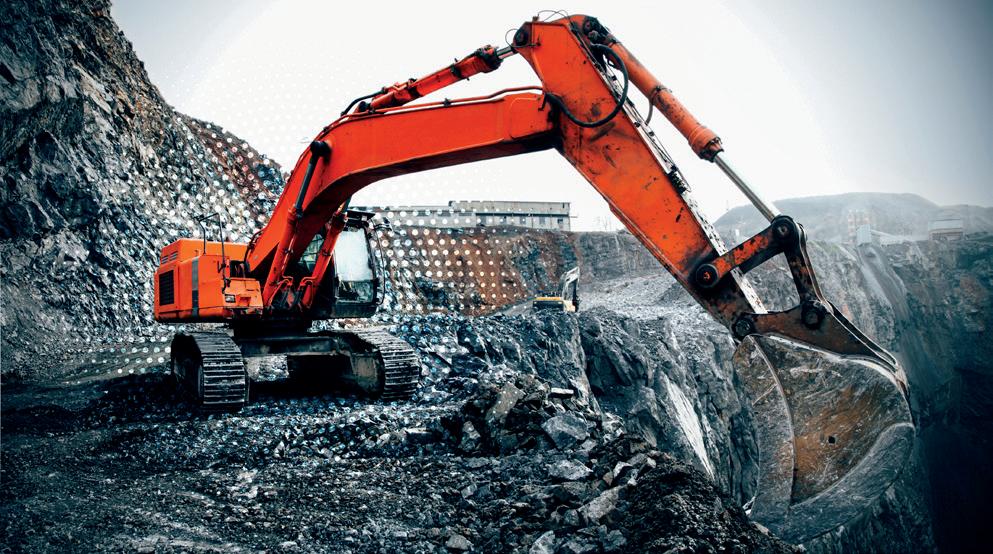
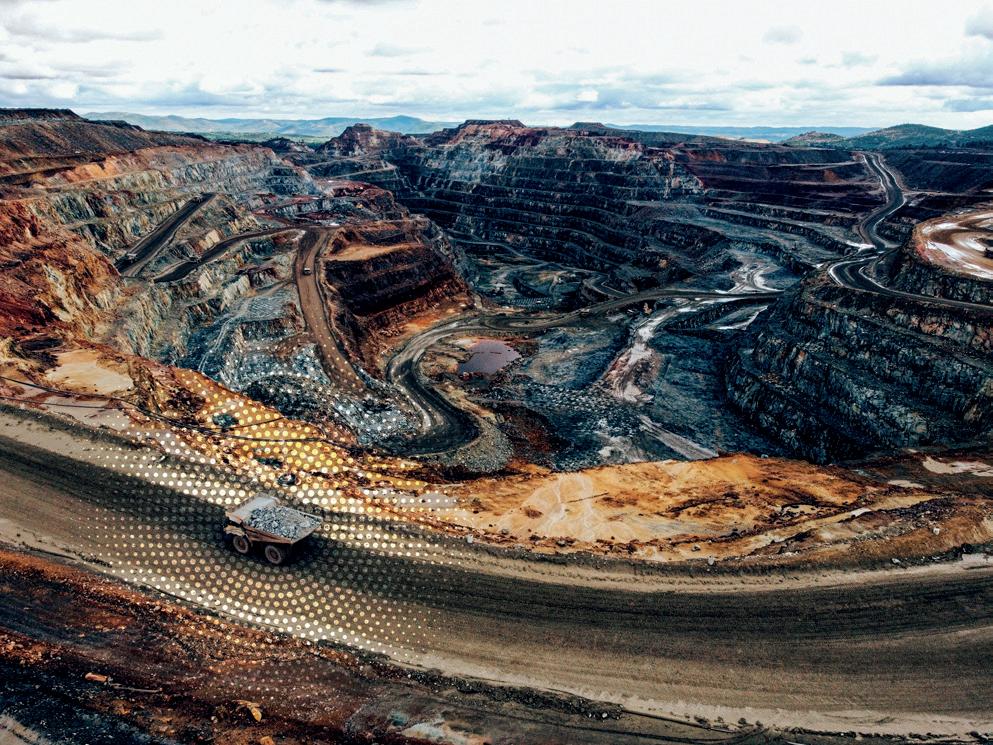
The increased presence of digital applications and connected solutions, as well as the requirements to capture and transit data in real time, are driving demand for robust, ubiquitous connectivity at all times and in all locations.
According to ABI Research, heavy industries that leverage 5G for connectivity solutions in their workplace environments experience a significant lift in operational performance, worker productivity, reductions in costs, and enhanced efficiencies across all aspects of the business. As the era of digitalisation progresses in the mining industry, the significance of having access to reliable connectivity will become a critical, non-negotiable requirement.
However, 5G coverage is typically only available in populated urban and suburban areas, where mines are rarely to be found. To ensure mining operators can enjoy these same benefits of connectivity in rural and remote locations, addressing and closing gaps in terrestrial coverage is vital. Reliable connectivity must be available in the remote locations where many mines are typically situated, often outside the footprint of terrestrial and cellular reach. For this reason, satellite-powered communications must be part of any mining operators’ communications solution suite.
Satellite-powered connectivity solutions are more powerful, resilient, reliable, cost-effective, and accessible than ever before, offering mine owners and operators an ever-broadening range of benefits and value that include the following:
Satellite network solutions offer a degree of flexibility unmatched by cellular, fibre, or the low power wide area network technologies that have typically powered connectivity at mining sites. Maintenance of these legacy networks is complex, requiring ongoing investments in new infrastructure as connectivity needs and locations change. With an expansive and unhindered view of the planet, satellites can provide the expanded coverage mining companies need to power mobile applications and connected equipment as conditions change on the ground, new applications are introduced, and communications requirements emerge.
Satellite solutions can serve as either a primary or redundant source of connectivity for mining users. They can play a critical role in delivering enhanced communication redundancy and expanding the reach of terrestrial networks to ensure that cellular-connected heavy equipment is able to continue operating anywhere on the worksite that might be situated outside the wireless network coverage footprint.
When connectivity-on-the-move is needed to power the critical mobile applications that enable miners to have the situational awareness they crave, the capabilities of satellites to provide coverage across the vastness of the
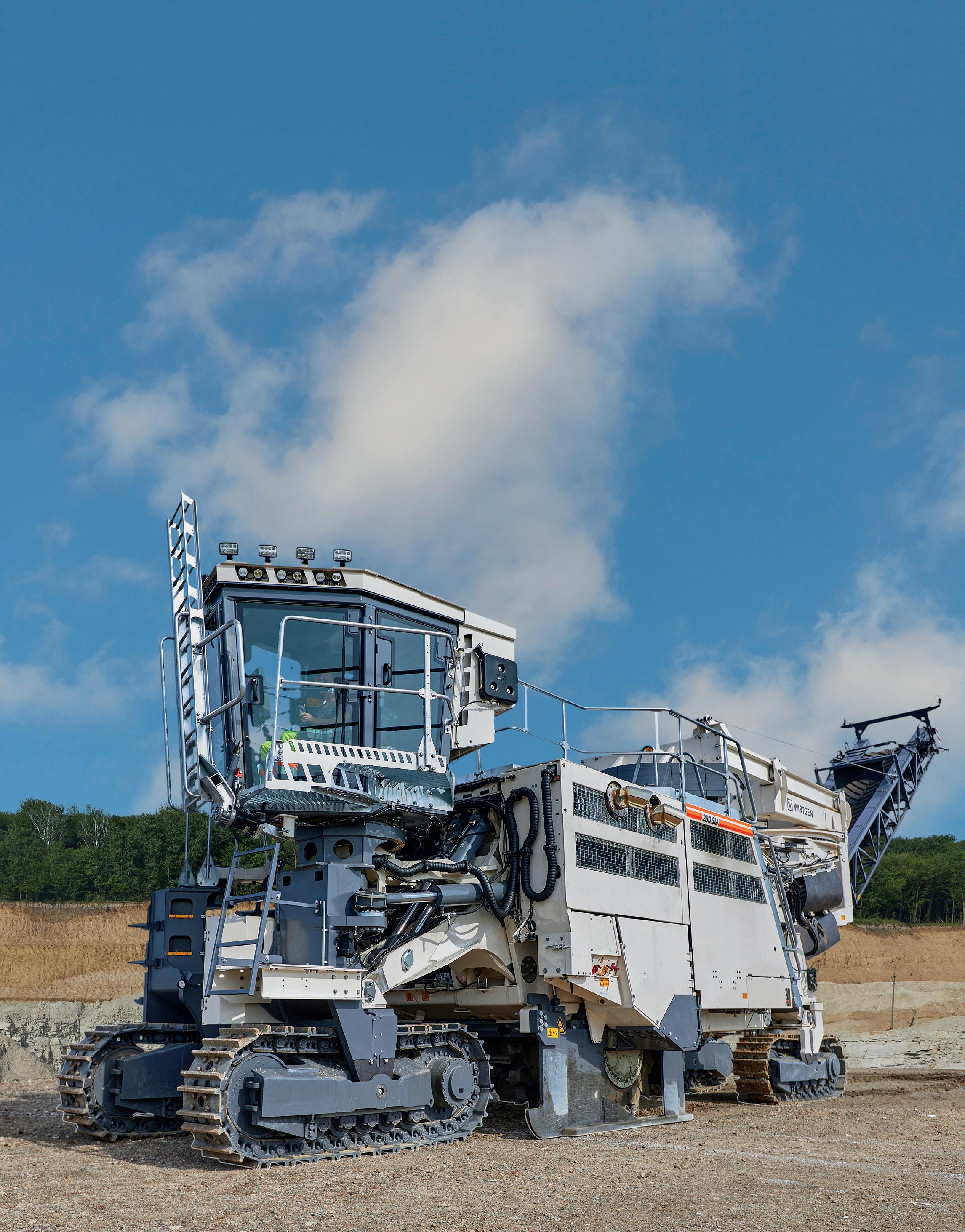
Earth make it the ideal connectivity solution. It is the continuous coverage by satellites, accessible simply by having line of sight to the sky, that makes telematics and predictive maintenance – as well as autonomous and remote operations – possible.
The advent of multi-orbit satellite connectivity is poised to further deepen the inherent value of satellite connectivity for mining owners and operators. By combining the breadth, reliability, and global coverage offered by geostationary satellite constellations with the low latency capabilities of low-Earth orbit (LEO) constellations, satellite solutions can meet the performance standards demanded by data-hungry applications in use across the mining industry. Multi-orbit high-throughput connectivity solutions ultimately deliver the speed, coverage, and latency that allow mining companies to maximise investments in connected equipment and real-time data applications.
Satellite-connected solutions once suffered from negative perceptions related to cost and complexity, some of which were justified. Today, mining operators and heavy equipment manufacturers can leverage the power of satellites to digitally transform their operations and generate new streams of revenue from machinery-as-a-service models at highly competitive cost points. Furthermore, the costs of deploying satellite solutions are now favourable compared to 5G, which requires significant capital investment for small cell base stations, spectrum licences, terminals, fibre connections, and a range of other fees that drive OPEX. ABI Research estimates that, over a five-year period, the costs for deploying a multi-orbit HTS satellite solution at a mining site would be lower by 67%.
As mining companies continue to face increased pressure to meet carbon neutrality goals, satellite-powered connectivity solutions can power the applications that help mining operators decarbonise, reduce greenhouse gas emissions, achieve sustainability goals, and remain in compliance with the always-emerging regulations that vary by country, state, county, and province. Satellite connectivity powers applications that can be used to optimise routing and travel of heavy vehicle equipment, reducing idle times, fuel consumption, and energy usage. Miners can more easily access real-time telematics data to monitor performance of equipment, all of which can lead to more efficient operations that dramatically reduce carbon and greenhouse gas outputs.
Among today’s satellite connectivity solutions available to mining owners and operators, Intelsat’s portfolio of FlexMove services is able to meet the unique and evolving needs of the mining industry.
FlexMove, Intelsat’s flagship managed service for high-throughput connectivity for communications-onthe-move (COTM) and communications-on-the-pause (COTP) applications, delivers flexible, enterprise-grade satellite connectivity that keeps crews reliably connected to company networks and the cloud anywhere, even in the most remote locations. FlexMove powers COTM connectivity for trains transporting mining product from the site to the next destination and within on-site offices, and provides portable, backpack-friendly COTP solutions for temporary fixed use in remote field operations.
FlexMove Fleet is Intelsat’s advanced high-throughput fleet connectivity solution for heavy equipment, as well as on and off-road mining transport vehicles. Accessible via a lightweight, flat-panel, all-in-one antenna that affixes quickly to mining vehicles, FlexMove Fleet gives mining companies the ability to remotely monitor and manage heavy equipment fleets in a single or across multiple locations, no matter how remote.
FlexMove LEO leverages the OneWeb LEO network and LEO-only and multi-orbit antenna systems to provide mining companies an additional end-to-end solution for COTM and COTP applications requiring higher speeds up to 100 Mbps download and latency of 70 milliseconds or lower. The combination of Intelsat’s own geostationary orbit (GEO) satellites and LEO network technologies from Intelsat’s strategic partner, Eutelsat OneWeb, powers the autonomous and remote-control applications that require higher speeds and low latency.
Mining companies face a multitude of challenges today, from overwhelming demand and widespread labour shortages, to expanding regulatory pressures and pervasive safety concerns. Together with Intelsat, mining companies can successfully surmount these challenges by accessing enterprise-grade satellite connectivity to power effective remote operations, ensuring crews are always connected to company networks and one another, even when and where terrestrial-based connectivity is unreliable or unavailable.
1. BALDWIN, S., ‘Why the U.S. has a serious mining worker shortage’, CNBC, (8 December 2023), www.cnbc.com/2023/12/08/why-the-ushas-a-serious-mining-worker-shortage.html
2. MILLS, R., ‘Mining industry dogged by retirements and lack of new recruits’, Mining.com, (7 February 2024), www.mining.com/web/ mining-industry-dogged-by-retirements-and-lack-of-new-recruits/
3. GHONEIM R., and MORRIS, D., ‘Decarbonizing heavy industry is possible. Here's how we set off a green chain reaction’, World Economic Forum, (23 November 2023), www.weforum.org/ agenda/2023/11/decarbonizing-heavy-industry-is-possible-hereshow-we-set-off-a-green-chain-reaction
4. DWYER, A., ‘Can mining ever be sustainable?’, Think Landscape, (6 May 2024), www.thinklandscape.globallandscapesforum. org/68092/can-mining-ever-be-sustainable/
5. ROLFSEN, B., ‘Mining Accidents Lead to ‘Troubling’ 31% Jump in Worker Deaths’, Bloomberg Law, (8 November 2023), www.news.bloomberglaw.com/safety/mining-accidents-lead-totroubling-31-jump-in-worker-deaths
Petro-Canada Lubricants explores the benefits of ultra-low zinc additives in transmission drivetrain oils.
As industries around the world strive for regulatory compliance, sustainability, and environmental responsibility, efforts to reduce their ecological impact have intensified. Nowhere is this more prevalent than in the mining industry. Lubricants are the lifeblood of machinery and equipment, reducing friction, wear, and energy usage. However, conventional lubricants often include additives like zinc which create a protective coating on the metal surfaces of internal components, but which can also carry stringent regulatory limitations and be harmful to the environment. This has led to the emergence of a new generation of ultra-low zinc lubricants – an alternative that is set to transform industrial maintenance practices.
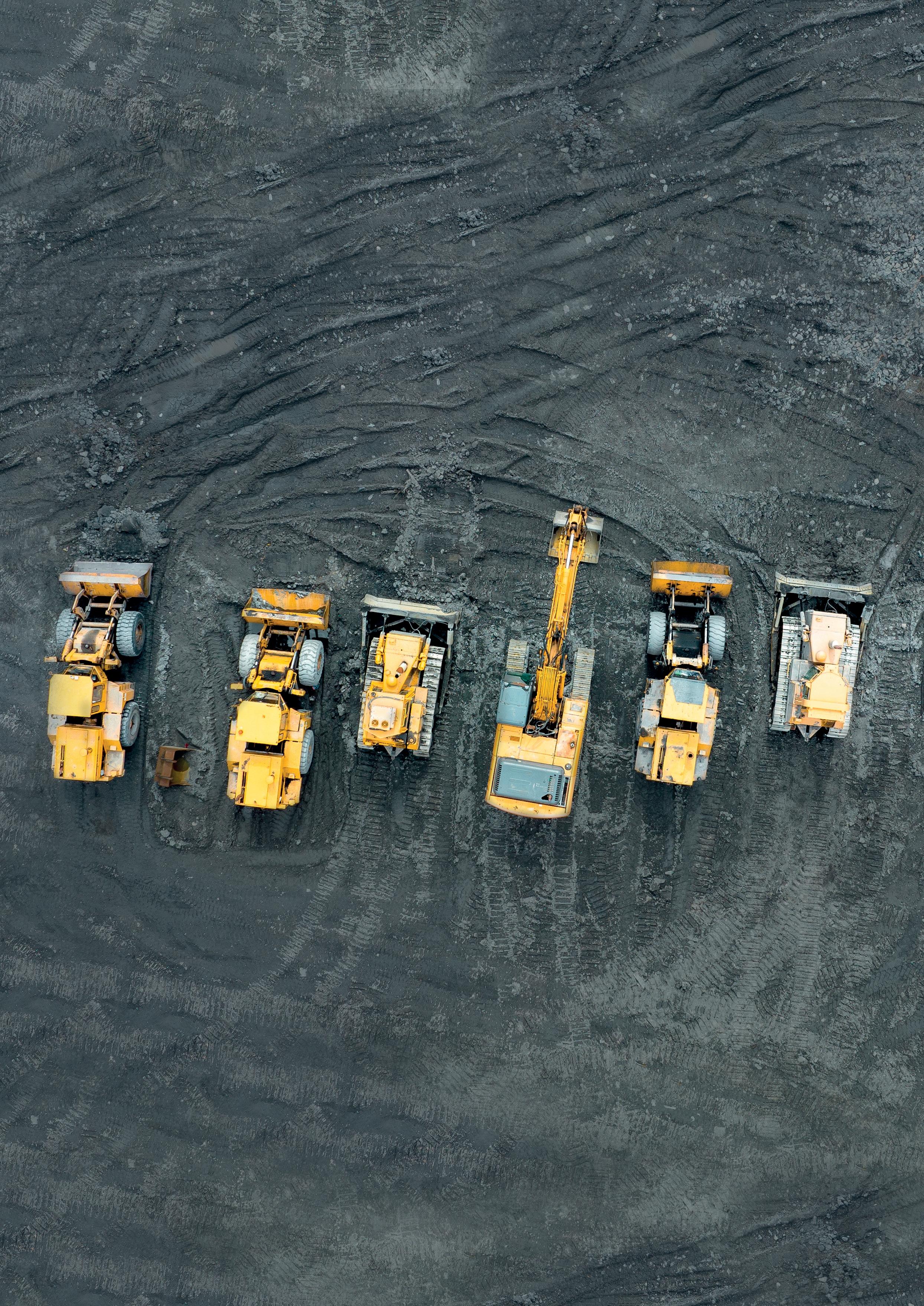
This article outlines the advantages to the mining industry of using ultra-low zinc additive technology in transmission drivetrain oils. But first, it is necessary to explore zinc’s usage a little more and address a major misconception that keeps the industry wedded to lubricants that may not be performing as effectively as they could.
Zinc-based additives have traditionally been popular in transmission drivetrain oils due to their exceptional anti-wear and high-pressure capabilities. These additives create a protective barrier on metal surfaces, minimising friction and enhancing the longevity of machinery.
However, while zinc-based additives can offer clear benefits for equipment performance, they can, as previously alluded to, also carry very stringent regulatory classifications.
There are a few different types of zinc anti-wear utilised in additive technology for transmission drive-train oils. One has recently been classified by ECHA (European Chemicals Agency) as a reproductive toxicant, Category 1B, and there are additional concerns that the other types may follow suit. The mining industry is under heavy scrutiny, and the health and safety of personnel, customers, and the environment is a top priority for all mining companies. These regulatory classifications make the presence of zinc a concern for mine owners and operators alike.
In addition to regulatory concerns, the presence of zinc can raise significant concerns relating to environmental impact. When lubricants containing zinc enter the environment through leaks, spills, or improper disposal, they can pose serious risks. Zinc can build up in soil and water, potentially harming aquatic life and disturbing ecosystems. Additionally, in industrial environments, zinc emissions can lead to air pollution, affecting both human health and the environment.
Beyond the negative environmental implications, there is another problem. Oils with certain types of zinc anti-wear may have a decomposition pathway that can cause them to release too much sulfur, leading to copper corrosion and copper on steel wear.
Considering regulatory and environmental concerns, perhaps the most compelling argument in support of an
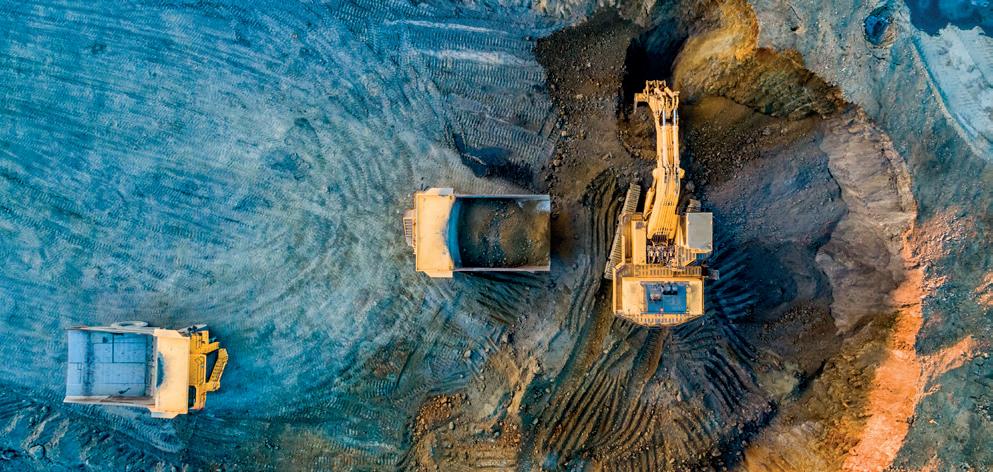
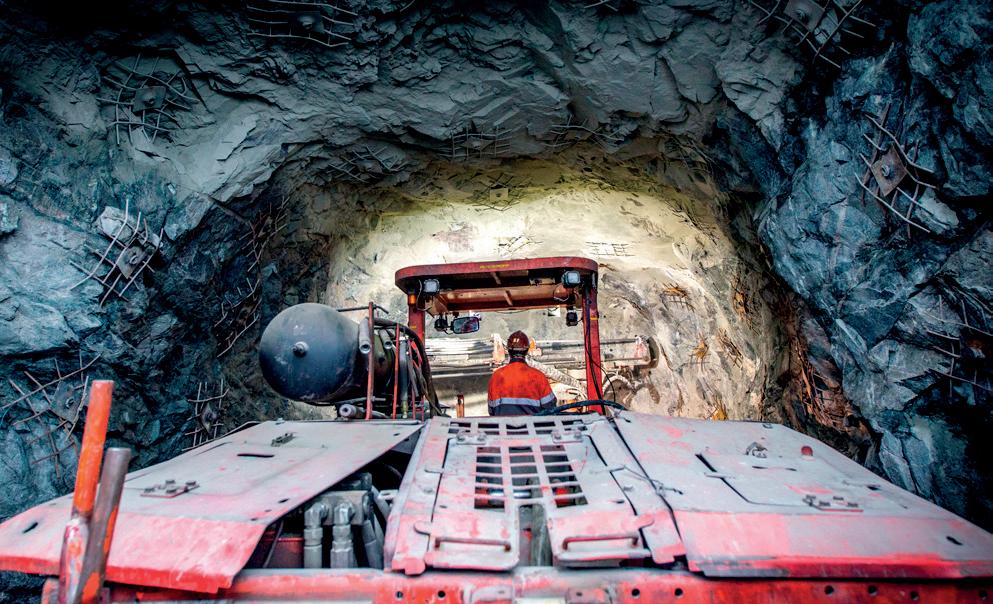
ultra-low zinc transmission drivetrain oil is simply that, as a lubricant component, zinc is not doing the anti-wear job that many believe it is doing. Both traditional and next-generation transmission drive train oils involve the formation of a polyphosphate film on the metal surfaces, and it is this film that does the wear protection job. The reality is that zinc atoms are just the carriers, dispersing back into fluid as the polyphosphate film is formed.
What if it was possible to eradicate the carrier, but still generate a similar polyphosphate film and create a more sustainable alternative, without compromising performance?
Mining projects have always been complex, with significant delays between discovering a deposit and beginning production, which can become challenging as ore quality diminishes and market demand accelerates. Switching to ultra-low zinc lubricants helps mine operators stay compliant with evolving standards, and demonstrates to partners, investors, and the local communities a commitment to sustainability and best practice.
When combined with the appropriate additive chemistries and high-quality base oils, premium ultra-low zinc transmission drivetrain oils have been shown to offer superior and more durable performance compared to zinc-based alternatives. This can result in extended drain intervals and lower maintenance costs, ultimately benefitting both the company and the environment. In addition, ultra-low zinc transmission drivetrain oils are better equipped to manage common contaminants like water, and the absence of zinc reduces the detrimental impact to certain friction materials, where the zinc atoms can get clogged within the pores.
Overall, the benefits these next-gen, ultra-low zinc lubricants provide is cause for the industry to re-evaluate their current use of zinc-based transmission drivetrain oils.
Manufacturers, lubricant suppliers, and end-users are increasingly recognising the numerous benefits of using next-gen alternatives in their operations. As awareness grows, stakeholders are gradually incorporating these next-gen lubricants into their maintenance practices – contributing to both a reduction in their ecological footprint and an increase in the efficiency and longevity of their equipment.
Not only do ultra-low zinc lubricants mark a pivotal advancement in the ongoing quest for more sustainable industrial practices, they do it without compromising on performance. It is early days, but already there is plenty of evidence to support the claim that ultra-low zinc transmission drivetrain oils can actually outperform more traditional products.
It is proof that best practice and cutting-edge performance are not mutually exclusive. By adopting ultra-low zinc lubricant technology, mining companies are actively supporting the preservation of natural resources, showing their commitment to optimised operations, meeting all of their regulatory obligations, and promoting a sustainable future for generations to come.

A multi-orbit, enterprise-grade network solution


Intelsat’s portfolio of FlexMove services meets the unique and evolving needs of the mining industry with its multi-orbit connectivity solutions ensuring heavy equipment fleets remain connected everywhere, all the time.
Mining Operators Can:
• Support Telematics
• Monitor Vehicles
• Automate Processes
• Perform Remote Control Operations

Discover how at intelsat.com/land-mobility






Jevons Robotics, Australia, presents insights into the development process and benefits of a new battery electric, payload agnostic, autonomous vehicle for the mining industry.


In the constantly evolving global mining industry, there is a strong emphasis on adopting advanced technologies to maintain competitiveness. Mining companies are publishing roadmaps around automation and decarbonisation as a core value proposition for their investors and internal teams. This trend is mirrored by global OEMs who are prioritising automation initiatives for haul trucks, drills, and shovels.
Jevons Robotics has recently entered the mobile equipment market, marking a significant advancement with its industry-first, battery electric, payload agnostic, autonomous machine capable of operating in the harshest of mining operating environments: the ARTEV™6000, an automated remote terrain electric vehicle rated to carry a payload up to 6000 kg.
The ARTEV6000 represents a rover-type 6 t vehicle, engineered for continuous day or night shift operations. It boasts a battery life of 6 hours per charge, with a rapid swapping system designed to maximise availability in the field. Equipped with capabilities, the ARTEV6000 can effectively navigate slopes of up to 15° and 12° cross slopes, while ensuring a stable chassis for payload deployment. Its dual and four-wheel driving functionality offers unparalleled flexibility for manoeuvring when navigating the bench environment.
Historically, leaders have relentlessly pursued the elimination of risks associated with executing the drill and blast cycle. From operating near high walls, to working over cavities and uneven or hot ground, interactions between mobile equipment and people all combine to make this one of the key risks for leaders in mining.
Jevon Robotics has unveiled the ARTEV6000 platform, configured for the drill and blast sector, to solve this problem. This innovative platform features a unique self-levelling chassis on grade technology, a vision system with automated hole detection capabilities, and software integration to streamline operations. These features not only optimise operations, but also simplify the number of machines needed to operate in the explosives and stemming process.
By leveraging advanced vision and hole detection technology, the ARTEV6000 vehicle can accurately position itself over blastholes, offering a comprehensive solution for deploying explosives and stemming material. Forward-thinking mining managers are cognisant of the inherent physical, biological, ergonomic, and environmental risks involved. Thus, prioritising the reduction of exposure hours to critical hazards is imperative for enhancing safety and risk mitigation in the workplace.
Manufactured in Western Australia, the vehicle is equipped with a comprehensive array of sensors dedicated to the management of the mission, machine performance, and the visibility for the operator from the comfort of the remote-control room. Its autonomy capabilities span from line-of-site to Level 4 autonomous control room operations, empowering operators to input QA activity with real-time reporting. The Jevons solution demonstrates superior performance in executing repetitive tasks such as blast QA/QC, stemming, and ANFO loading with precision, thereby enhancing productivity while concurrently lowering operating risks, carbon emissions, and costs.
The vehicle’s payload agnostic feature facilitates seamless interchangeability of payloads on a single chassis, offering versatility beyond the conventional loading of bulk explosives and stemming material. This mobility platform can be reconfigured based on customer needs to accommodate a range of alternative payloads – including drilling fluids, dewatering equipment, sensors and monitoring equipment, and geophysical sensors. The platform can even manage the increasing number of electric cables in a pit as customers progress to electrifying drills and shovels.
With a plethora of asset choices, forward-thinking mining managers can leverage a single chassis with diverse payload options to provide standardisation of asset selection for supporting mining operations. This approach provides customers with increased visibility and enhanced control over autonomous operations, fostering the harmonisation of battery charging infrastructure, simplification in maintenance, and interoperability of interchangeable payload systems. These initiatives facilitate centralised coordination back to the control room that will become more complex as auxiliary mobile assets are required to be automated.
The ARTEV6000 has undergone extensive testing and has completed a number of commercial trials with global leading brands. It is presently deployed in the Pilbara region of Australia.
Jevons Robotics recently concluded a trial with one of the world’s leading explosive companies, during which the ARTEV6000 demonstrated:
n Zero safety breaches.
n Sustained productivity of over 260 holes in a 12-hour shift.
n Precision measurement of blasthole depths compared to manual measurements.
n Accurate backfilling with stemming to the required depth.
n Accurate detection and recording of water within a blasthole.
n Machine availability exceeding 90%.
n Execution of a 12-hour shift using two batteries.
n Safe and productive operations during a day or night shift – using a combination of an infrared camera and under carriage lighting allowed the operator to enable all QC activity to be conducted on a night shift.
Conventional methods have traditionally entailed personnel driving a mobile processing unit (MPU) or stemming truck to deliver explosives or stemming, supported by a large auxiliary crew of operators and equipment. This conventional solution works relatively efficiently on flat benches, however, given the irregular topography of some opencast mines, teams of individuals are often tasked with manually passing buckets along a human conveyor belt to access steep and challenging
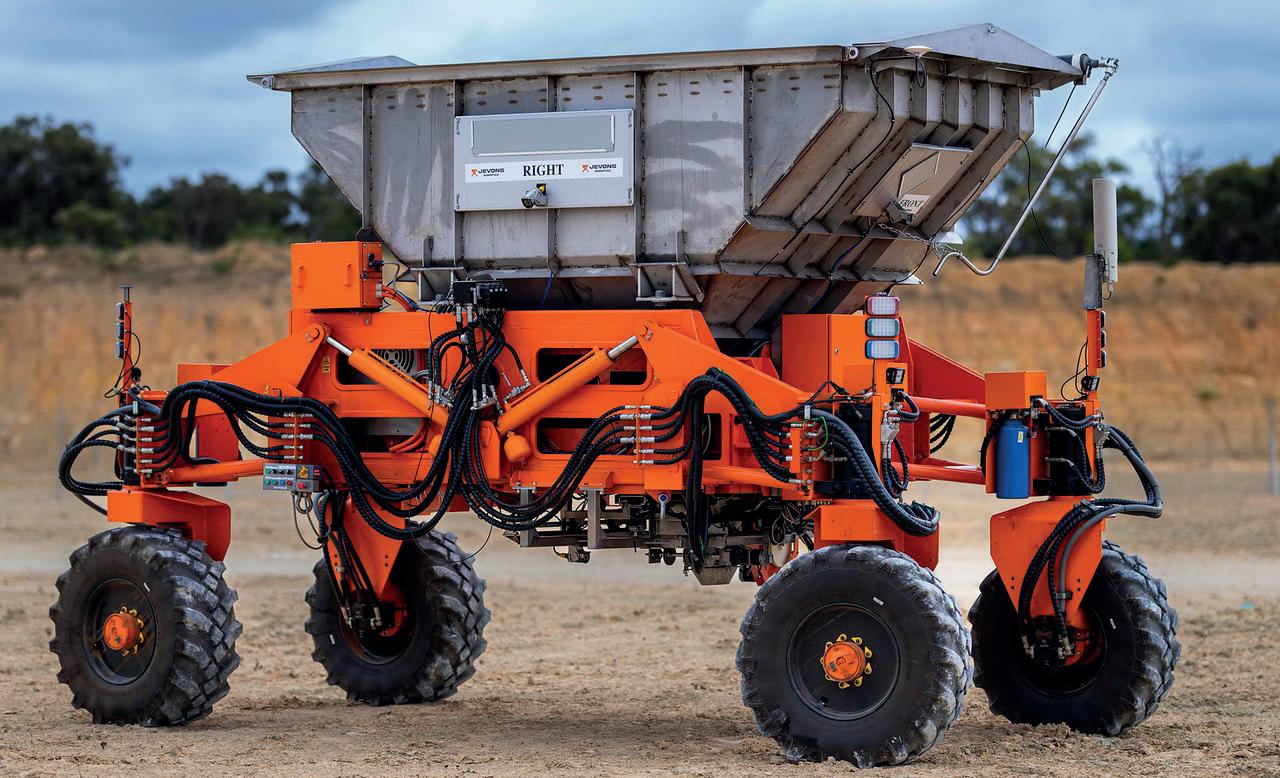
blastholes, elevating the risk of incidents associated with rock falls, open voids, and muscular skeletal or general fatigue.
The inception of the Jevons solution followed an unforeseen incident leading to the tragic death of an employee at a mine site in the Pilbara in September 2021, where the ground collapsed beneath an operator undertaking blasting activities. The founders of Jevons were driven by the ability to completely remove that risk from operations and developed the patented ARTEV6000 as a direct result.
The ARTEV6000 has attracted significant attention from the industry. Notable global mining industry leaders are pioneering with early adaptation. As a result, the test vehicle is fully booked until the end of 2024, and there are only a limited number of 2025 on-site trials available across Australia.
Jevons has commenced work on its smaller ARTEV1000 variant that will include the ability to deliver blast QA/QC activity within the quarry and construction segments. This will be available in 2025 and promises to bring the same safety and productivity improvements to this market.
The speed and efficiency demonstrated by Jevons can be attributed to a combination of key factors. Firstly, the founder possesses unique insight into the operating environment. Secondly, there was a critical customer need that leaders were eager to address to keep their people safe. Additionally, a diverse team of technical experts and subject matter experts collaborated to solve a real problem. This shared dynamic fostered a clear mission focus and a sense of urgency within the organisation.
Jevons also benefits from a robust local ecosystem of suppliers who contributed to the development of this solution, making it a world leader in its field.
In March 2024, Jevons Robotics received the National CORE Innovation Hub’s Hot 30 award, acknowledging its contributions to the industry. Co-founder Todd Peate expressed gratitude towards Development WA for their support of the Australian Automation and Robotics Precinct (AARP) in the Wanneroo region of Perth, Western Australia. This facility enables innovators to conduct product testing before deployment on-site. Additionally, Jevons Robotics received an Innovation Commercialisation Acceleration Grant in 2023 to facilitate the commercialisation of their solution.
Jevons Robotics is currently engaged in discussions with key players in the mining services sector. Beyond mining, the company is exploring partnerships with agricultural, industrial, and defence sectors. By addressing unmet needs that traditional equipment manufacturers may overlook, Jevons aims to provide further specialised solutions tailored to diverse industry requirements.
Leaders recognise that stagnation poses a significant threat to operational efficiency. Embracing change, albeit challenging, is essential for progress. Engaging with industry trailblazers, such as Jevons Robotics, can offer valuable insights into leveraging innovative applications to effectively address challenges and mitigate risks.

Zach Savit, Stratom, USA, in the second of two articles, considers how sometimes innovation grows in the open, and sometimes you have to look for it.
Welcome back. Many of you (44 000 or so) may be just recovering from the euphoria induced by MINExpo. It is a bastion of innovative thinking and hope that quadrennially inspires new projects, purchases, and potential.
There were nearly 2000 exhibitors at the show –thousands of companies trying to get in front of decision-makers and keep their fingers on the pulse of
what the industry needs. From a technology producer or vendor perspective, this is the widest their nets can get.
While the excitement of MINExpo’s innovative showcase lingers, the industry must look beyond the dazzling technological displays and delve into the practical challenges that lie ahead.
In the September issue of Global Mining Review, the first part of this article, ‘Mind The Gap: Part 1 – Finding The Next Innovations In Mining’, focused on some of the gaps in both processes and technologies that mining could adapt to improve operations through adoption and testing of new tools. This article highlights a wider chasm: that which exists between the invention source and operational deployment.
‘Incremental’ is not a bad word. Incremental change is why drill bits last longer and work better than they used to. Established companies invest through research and development to improve offerings, and these innovations are often built on the shoulders of established technologies. MINExpo is a massive display of these gains.
The major OEMs definitely make a splash with over 5000 t of equipment on the floor, exhibiting important advances in their product lines. Applications of autonomy, electrification, greater capacity, or greater efficiency critically advance the equipment that defines
the mining industry – and can all be viewed as incremental advances.
While crucial, these advances focus on improving existing technology and equipment rather than replacing it. Applying new tech to existing equipment and processes is one of the essential pathways through which mining realises technological gains.
Incremental gains can be seen in consumables, equipment, material handling, and software across many legacy providers. Driven by direct customer feedback, these advances quickly add value to operational needs with minimal risk involved.
New equipment capitalisation requires calculating the return on investment, but these enhancements face greater internal testing by vendors before being vetted operationally, minimising uncertainties associated with new technology adoption.
Due to the recent increased frequency of mergers and acquisitions, it needs to be mentioned that these moves can significantly aid technological growth. Buying a company that has put in much of the foundational work for a new technology allows the buyer to pair that technology with existing solutions, grow revenue streams, and keep unique solutions out of the hands of competitors. This kind of collaboration aids incremental technology growth, but does not eliminate some of the industry’s broader technology adoption challenges outlined below.
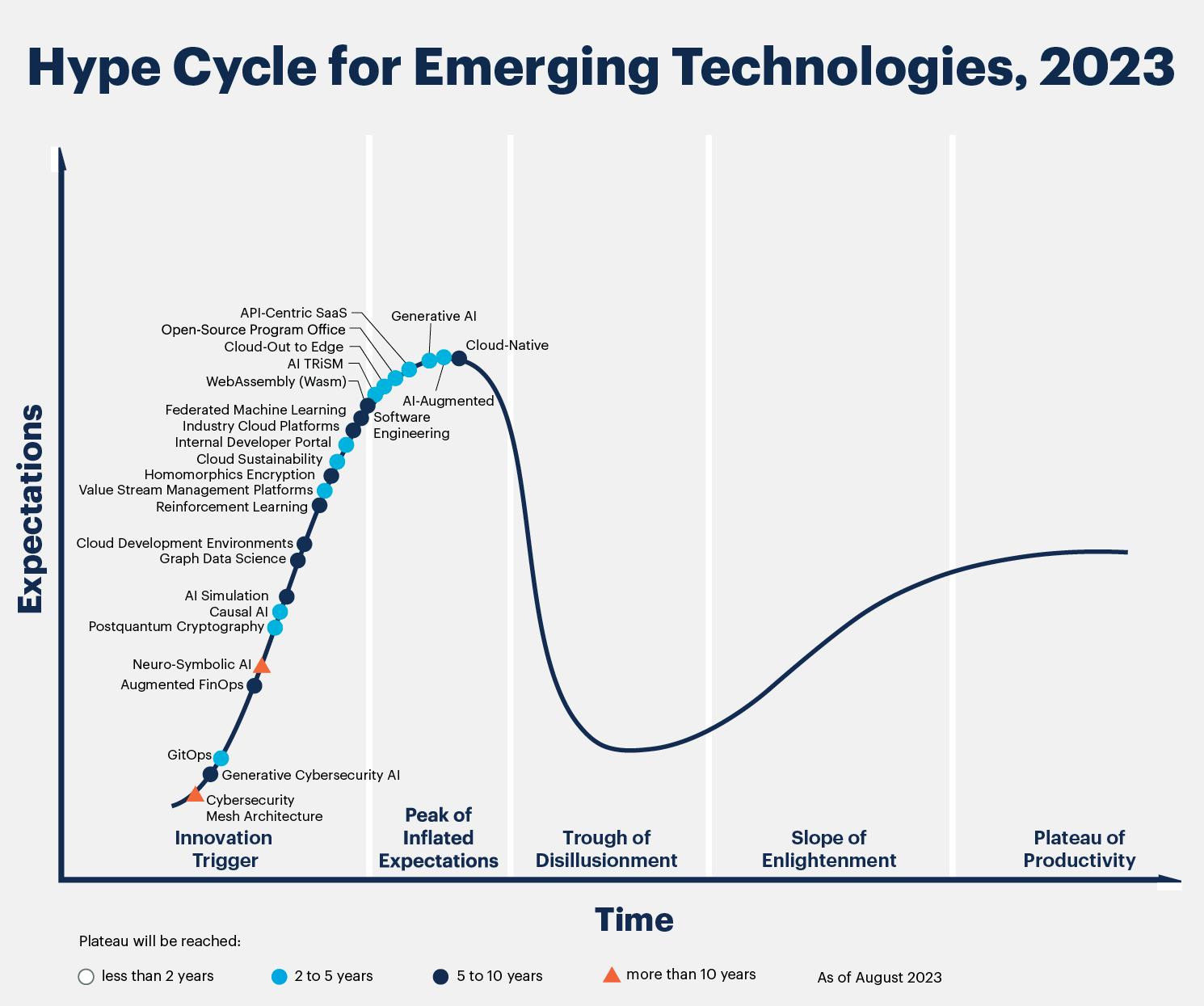
Intelligence
– *It should be noted here that the autonomous vehicles referenced here are focused on ‘over the road’ vehicles. Gartner mentions closed road system autonomy specifically in a podcast (September 2023) as doing better than those operating in open environments.
“If at first the idea is not absurd, then there is no hope for it” –Albert Einstein
The problem with Einstein’s quote on an idea’s absurdity is twofold when applied to new mining technologies. First, there is no qualification for if an idea actually works. Second, this only guarantees hope, not value. Across all industries, nearly 90% of all technology startups fail within the first five years – and mining is not a major exception. 1
But, if an idea works well, and if it survives past ‘hope’, it still has to challenge the existing standards.
The first person or company to think of a new way is frequently lambasted by those
adhering to the status quo. Mining is no different. ‘The way we’ve always done it’ is a blatant lie told by those comfortable with things as they are. It cannot be true, or the industry would be using steam hoists, pick axes, and donkeys. Sometimes, things do, in fact, change. By their nature, these new ideas tend towards less capital-forward ventures. Software and small-scale technologies are easier to showcase without larger investment. Many of these ideas succeed through solving problems within small, connected networks where the inventor knows that the problem exists and can be solved with the new tool.
Trialling specific innovations through existing connections in a tight-knit industry like mining increases the survival rate of these ideas. Technology trials can also proceed with more significant ideas or at larger operations through greater risk/reward tolerance.
Complicating the issue, operations take on more risk here than just new technology. The support structure and reliability of these new ideas are not always in the initially deployed minimum viable product. These hurdles compound with standard technology adoption pitfalls to limit these ideas’ ability to make a lasting impact on the industry. Consequently, the great ideas that have stood the test of time are even more impressive.
Mining frequently adopts technology designed with other uses in mind and conforms it to operational requirements. One of the best, most recent examples of this adoption style is drones.
Although proven and adopted outside of the industry, even many early adopters in mining waited to try unmanned aerial vehicles (UAVs). Adoption was higher outside of restrictive regulatory frameworks, but UAV tech has now been fully integrated into mining operations around the globe. Measuring underground voids, conducting surface scans, and prospecting for new deposits are now recognised value centres for these versatile drones.
The innovation models used in many of these outside cases do not conform to the mining mindset. While some new technologies – lidar scanners, network infrastructure, process automation, etc. – incorporate more easily, mining can look to several other sectors as new technology is tested.
Construction, agriculture, and oil and gas all offer some similarities. Operational pace, remote locations, and dirty environments provide a quality testing ground. If new solutions thrive in these areas, applications may exist within mining, but looking in these industries may miss the nearest analogue.
Two primary career groups get to play in the dirt, play with big equipment, and blow stuff up: mining and the military. When you think about it, the major difference between mining and much of the defence sector is that fewer people shoot at you in mining.
Global navigation systems, radios, autonomy, and many other technologies on which the industry currently relies were created for or improved in military applications. The real trick in adapting military technology for mining use is understanding the aspects directly applicable to mining operations. Identifying what configuration changes must happen to unleash the real value of potentially overruggedised solutions will allow mine operators to tailor cutting-edge solutions to their operations.
Because these new solutions stem from different sources, each of them requires nurturing adoption in different ways. The onus is on operational leadership to deploy and nurture these tools accordingly, which requires an approach defined by the maturity of the technology.
Remember, not all new technologies are at the same stage. For those outside the direct technology evaluation world, this is a brief reminder of one interpretation of how technology matures.
Gartner’s hype cycle, developed in 1995, illustrates how many innovative technologies progress from inception to widespread adoption (Figure 1). 2 While the research and consulting giant offers insight into the maturity of the product, mining operations can optimise their trial and deployment of emerging technologies using this model’s framework.
While a new adaptation to existing technology may be instantly deployable, something early in development may require more monitoring. Additionally, understanding how to ensure new technologies do not suffer poor user acceptance may mean more training or testing time.
If you did not do it this year, go to more than just the eye-catching booths at MINExpo or the companies you know. Seek out the smaller, unique solutions too. You may not find exactly what you are looking for, but you might get exposed to new technologies you had not seen or thought about before.
Mining innovation is not about choosing the path to find the right new technology. Every path should be explored. The more you know, the better equipped you are to make the best decisions when your operation hits a new snag or finds a new way to fowl things up. Knowing what tech is out there will help you find the right one when you need it.
1. PATEL, N., ‘90% Of Startups Fail: Here's What You Need To Know About The 10%’, Forbes, (14 April 2022), www.forbes.com/sites/ neilpatel/2015/01/16/90-of-startups-will-fail-heres-what-youneed-to-know-about-the-10/
2. ‘Podcast: The AI Hype Cycle 2023: Autonomous Vehicles Sit in the Trough of Disillusionment’, Gartner, (5 September 2023), www.gartner.com/en/podcasts/thinkcast/the-ai-hype-cycle2023-autonomous-vehicles-sit-in-the-trough-of-disillusionment
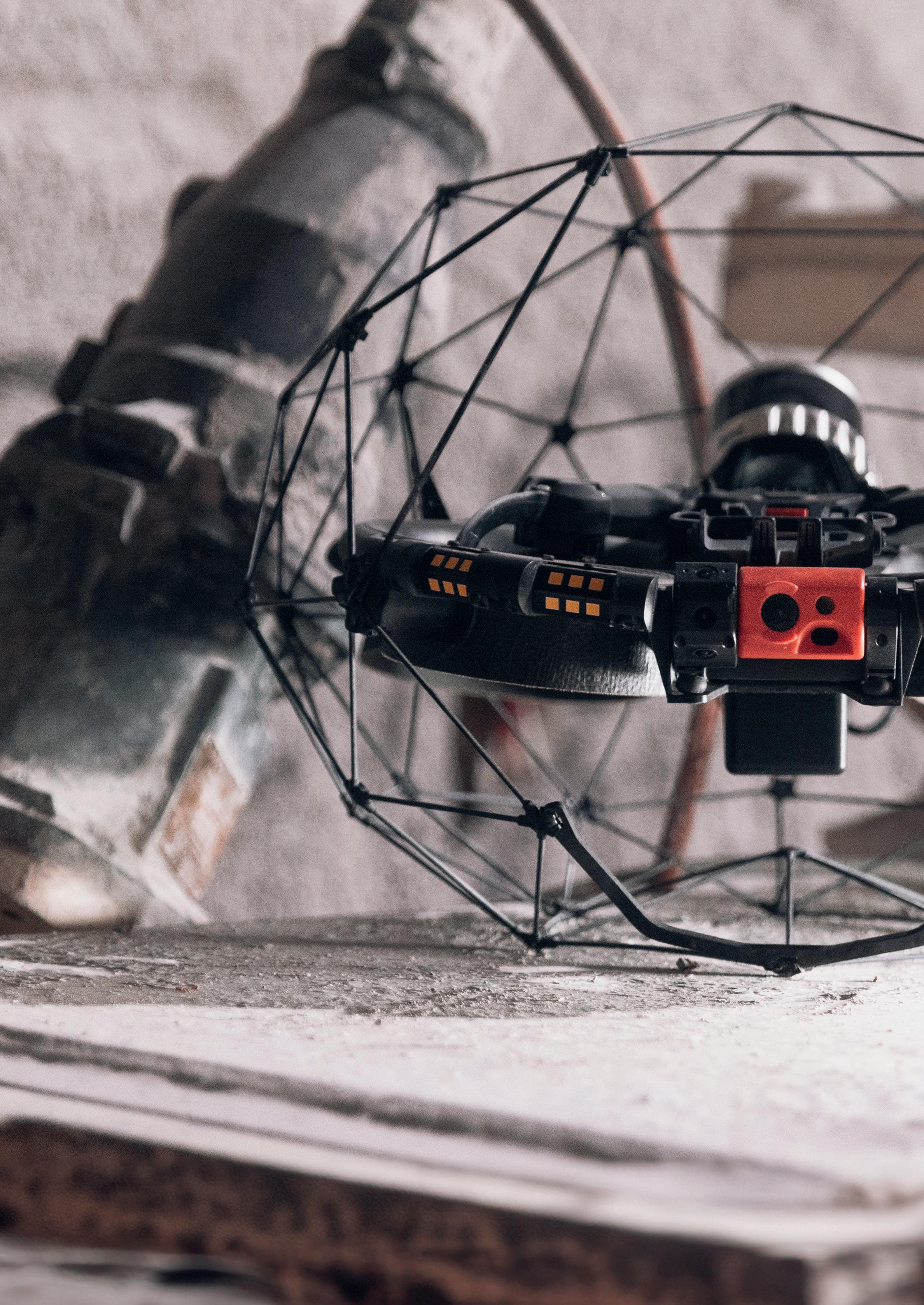

Eloise McMinn Mitchell, Flyability, Switzerland, describes how the use of drones in underground surveys can improve safety protocols and the efficiency of data collection.
Not all mines are created equal – and certainly not copper mines. Located in the Limpopo province of South Africa, the Palabora copper mine is managed by Palabora Mining Company. Ground was broken at the site in 1956, and nearly 70 years later, it is still one of the largest producers of copper in South Africa, alongside producing nickel sulfate, magnetite, vermiculite, and more. The mine was initially opencast, but has expanded to include underground operations too.
The underground section of the mine relies on block caving to extract minerals. This hard-rock mining technique involves excavating underneath an ore body before allowing it to collapse into the space underneath. The collapse is usually triggered by explosives. As the broken ore drops into the caverns underneath, access tunnels are used to gather material that has fallen into the void. As a result of the large volumes of ore that can be moved without too much difficulty, the block caving method is effective and used at several mines around the world. In fact, in some cases this method has been seen to achieve production rates that match surface mining.1
At the Palabora Mine, this method of controlled collapse has been in use for over a decade and is well-established, with an average of 700 000 tpy of copper produced and tunnels that extend 1600 m underground. However, block caving can be a challenging means of mining. When the ore collapse is triggered by explosives, it can be difficult to assess the best means of access into the space afterwards. This is important for ensuring the safety of mineworkers and requires some form of surveying or scouting to determine the condition of the fallen ore and the best way to approach the void safely. Due to the nature of this form of mining, it may not be possible to see the entirety of the void from an access passage. This can mean there is a risk of moving or unstable rocks or material that could shift unexpectedly. Without prior knowledge of this, mineworkers must spend a long time planning the best way to safely approach the void. Situational awareness from a scan or survey could improve the speed of operations and keep staff safe.
For this reason, the team at Palabora, as part of a commitment to continuous improvement, wanted to develop ways to gather this information remotely, as this would prevent staff from being near the void opening until an all clear is provided. This task fell to the technical service department, which provides information to the mining team and is in charge of technical assessments on geological and geometrical challenges. Initially, they started using laser scanners to gather surveying information about the state of a void after an explosion. This enabled a surveyor to stand several metres away from the void opening. However, there was still a concern that employees could be within range of rocks rolling from the muck piles, dislodging from the hanging wall, as well as the accumulated dust or heat exertion. A more distanced and safe solution was required to improve on operational efficiency with more accuracy in the assessment.
The surveying team, with encouragement from Executive Manager, Sam Ngidi, researched alternative surveying methods that could be used in an underground mine. When the surveying team introduced the idea of drones, Ngidi helped them purchase an Elios 3 drone. The survey team that is focused on undercutting is led by Superintendent Surveyor, Marlon Cloete, and their entire unit has been trained to use the drone in order to ensure everyone is equipped with the knowledge to use this exciting new tool.
The Elios 3, built by Swiss brand Flyability, is a rugged drone. It has a protective cage around it that enables it to fly in difficult environments without fear of collision. When it makes an impact, the drone has built-in firmware that helps it to stabilise and recover. This is crucial for the Palabora team’s project, as the drone would be flying beyond the line of visual sight and thus, needs to be capable of surviving unexpected impact. In addition, the drone has a powerful, 4K camera, as well as a laser scanner from Ouster. The LiDAR payload on the drone has two purposes: the first is to gather detailed laser scans for analysis with centimetre accuracy and the second is to provide situational awareness. As the drone flies, it produces a live scan of its surroundings. This means that should the pilot be flying in dusty environments, they can swap from guiding the drone with the camera to the LiDAR point cloud. This gives a clear 3D view to the pilot and helps them to operate even in the most challenging scenarios. Finally, the drone has a return-to-signal feature, which means that should it have signal disruption or loss, it will automatically fly back along its flight path to reconnect to the controller. Overall, the unique capabilities of this drone made it the best option for surveying the voids underground.
When Palabora brought the Elios 3 underground, they immediately found that they could triple the distance between the pilot and the void opening; where fixed scanners required surveyors to stand much closer to the space, the Elios 3 meant pilots could stand up to 100 m from the opening. This eliminated most if not all the risks associated with this type of work.
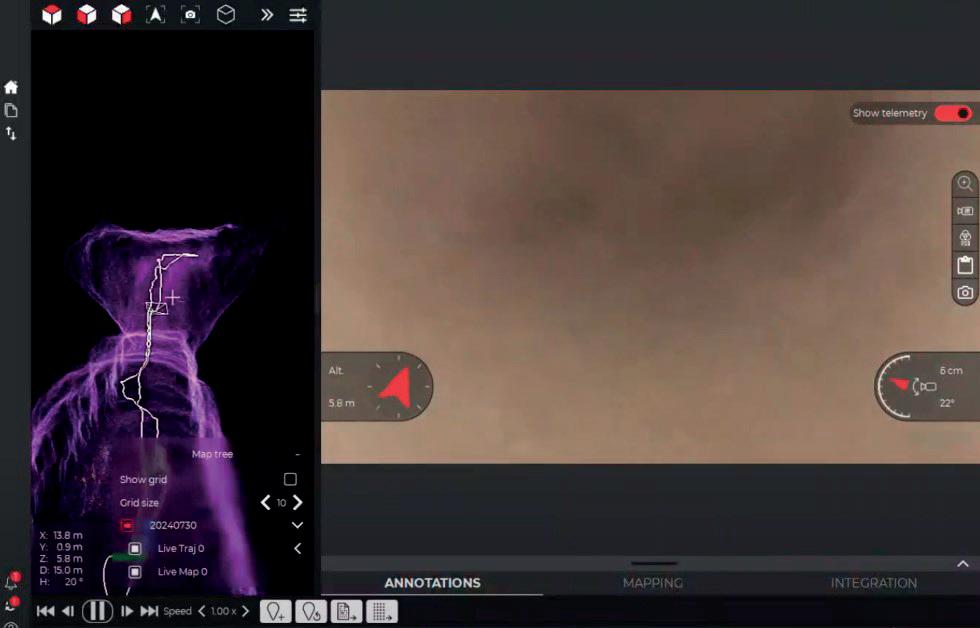
The scanning process with a drone looks like this:
1. The pilot identifies a safe take-off space that is up to 100 m away from the void opening. From this location, they prepare the drone for take-off and begin the flight.
2. The flight takes place, with the pilot capturing both photos and laser scans of the void. Due to the drone’s visual payload, the pilot does not need a line of sight to monitor the drone, but can instead rely on the drone’s remote control with its live feed and live point cloud to guide the flight.
3. After the drone has finished data collection and has safely landed, the results are imported to Inspector 5, the custom software used with the drone. The analysis can then be done to assess the location of ore deposits after the controlled cave-in, as well as help assess the efficacy of the blast.
As a result of using this technology, the Palabora team has felt that they have elevated safety protocols in their mine without compromising on data – in fact, they now have greater access than ever before.
With the introduction of the Elios 3 to Palabora’s mine, they have begun to develop other use cases for the drone. The 3D point clouds are used to analyse the surfaces of rock formations after a blast. That data and video footage are now being used by the surveying team at Palabora to identify pillars created from the blast, as well as to analyse the geological structure, structural support compliance, and the quality of the blast. In addition, the data helps teams to understand how the rock fragmented.
Analysing the pillars is an important part of surveying at this mine. These pillars represent a hazard as without careful maintenance, these pillars can be dangerous if they fall. Each pillar is carefully assessed to determine its structure and monitor it for convergence or change. In some cases, the pillars need to be demolished, and in others they are treated and used as support. The data from the drone is used to create a survey report that is shared with the mining department on the quality of the blast, as well as the position and size of the pillars left in the undercut. The pillars are recorded and added to a catalogue monitored by Palabora to determine how they should best be treated/removed to enable continued operations.
An additional use of the drone has been in part of a massive excavation project to create an underground crusher. Palabora is excavating an immense underground void to construct the crusher, with the excavation reaching 50 x 11.3 x 27 m. The drone has been used to measure excavations that would not be accessible otherwise, including at height. As a result of using a drone to survey the space, nearby activities do not have to stop during data capture, which streamlines overall efficiency. The drill and blast activities are scanned with the drone to detect errors in the blast compared to the design (over and underbreak), which can help catch errors early and avoid delays. Quality checks are also carried out later on, in order to ensure the excavation meets safety standards, such as using the drone to measure shotcrete thickness by comparing data sets from multiple flights. With the video footage as well, project managers can remotely analyse progress during the mining process from the comfort of their office, rather than having to make visits underground.
A further application for using a drone with a laser scanner has been to monitor the extent of caving in the walls of tipping silos. This is because should a tipping silo wall cave, it would disrupt the stability of the tipping area and its storage capacity. This would in turn halt operations
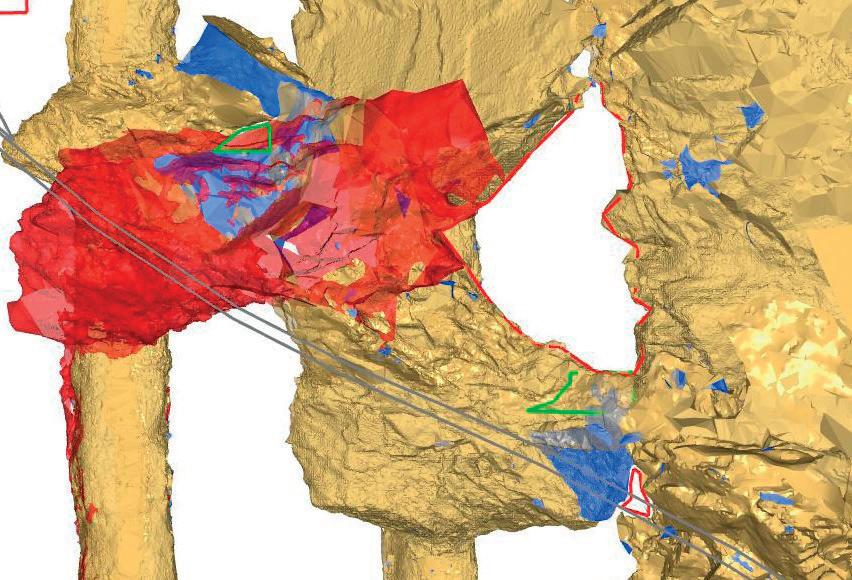
Figure 3. Laser scans from the Elios 3 are used for analysis and pillar management, as shown here where green represents treated pillars, yellow is previous scans, and red is the latest scan data from an undercut area.
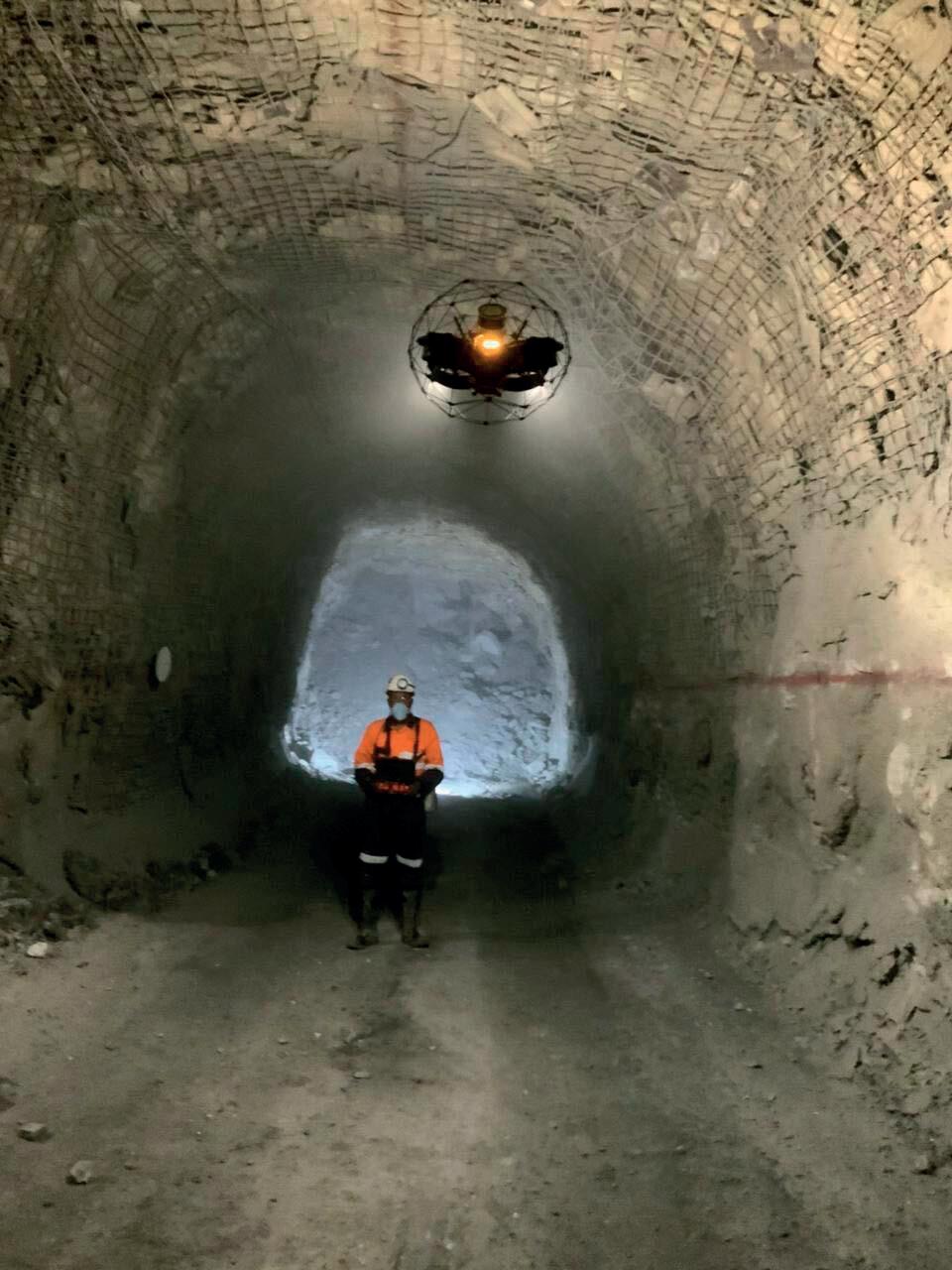
Figure 4. The Elios 3 in flight underground. The lighting rig on the camera has a capacity of 16 000 lumens, helping pilots get a clear visual feed when flying beyond the line of visual sight.
and affect the mine’s productivity and financial efforts. In the past, it was not possible to monitor these silos safely from the inside, however, with the drone measuring just 50 x 50 cm, it can fly into small access hatches and safely complete an inspection without anyone having to enter the confined space. The drone’s data is then used to analyse the walls and determine if there are any changes to the structure, compared to previous point cloud data. This can easily be done on-site with a computer, making the inspection process quick and efficient. In addition, the level
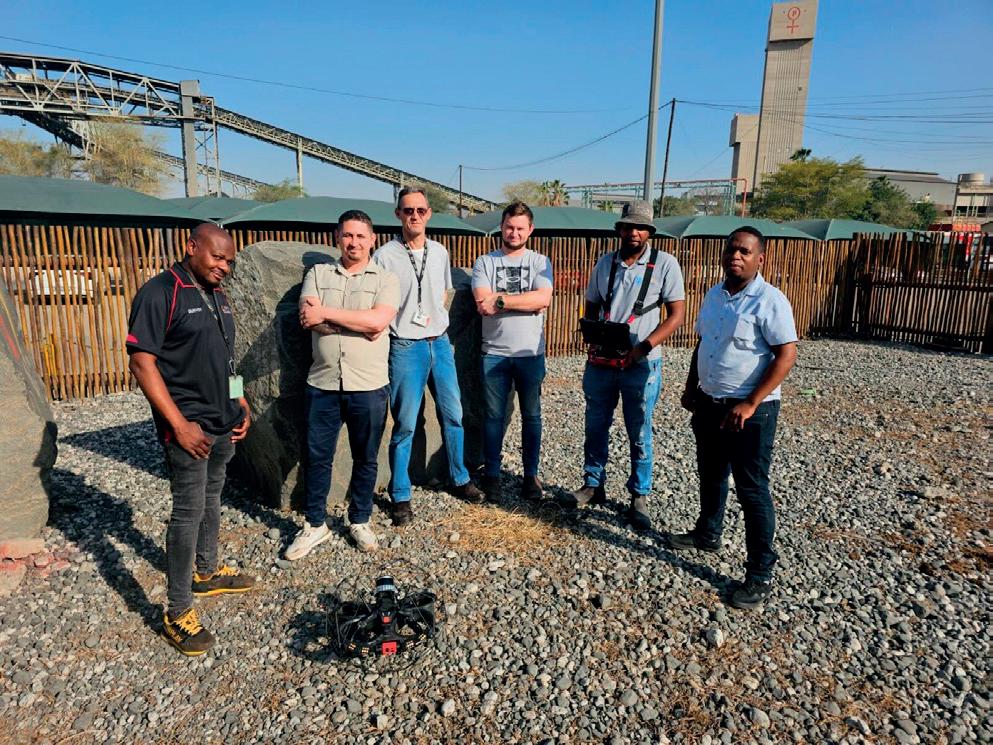
of detail from the drone exceeds the needs of the project and thus the high accuracy surpasses expectations.
overground site. With additional applications including stockpile measurements and equipment inspections, they hope to use this technology in new ways soon.
The driving factor that brought the drone to this site was a need to innovate safety protocols and improve the data collection efficiency. As mining is an industry that can be slow to adopt new technology, the increasing prevalence of drones points to them being a reliable tool for mines, with a particular value in underground surveying. This is because remote surveys with a drone can be used for hazardous locations (such as unknown voids or old workings), alongside routine surveys and inspections. Their fast deployment also points to them being used for emergency response or urgent scenarios where situational awareness is needed, but the safety of mineworkers could be at risk. Other case studies with the Elios 3 for mining have seen the drone surpass traditional surveying methods, such as mapping a 340 m tunnel in 9 minutes or locating an ore pass hang up in 10 minutes. The speed, safety, and accuracy of using drones make them an attractive addition to surveying workflows and the results from Palabora make one thing clear: it is not a question of ‘if’ drones are coming to mines – but when.


HIGMAN, B., MATTOX, A., HOAGLAND, N., and COIL, D., Ground Truth Alaska, (12 August 2019), www.groundtruthalaska.org/articles/block-caving-underground-



Maarten van de Vijfeijken, ABB, considers the benefits of remote monitoring platforms in decreasing the unscheduled downtime of gearless mill drives.
As a market leader in gearless mill drives (GMD), ABB is often looked at by the industry for the latest developments. It is a well-known fact that the GMD offers the highest possible mill drive system efficiency, combined with operational flexibility through the inherent
variable speed feature and with the highest possible installed power per mill. The overall system efficiency is at the highest possible level of around 95%, due to the elimination of all mechanical transmission components, such as gearboxes, pinions, and ring-gear. The absence of all
these mechanical transmission components is also one of the reasons why the typical mill availability is considerably higher than with conventional mill drives. Another reason is that the GMD comes with substantially better monitoring, which is continuously being improved and expanded. Well over a decade ago, ABB introduced its remote GMD monitoring platform, later called Predictive Maintenance for Grinding (PMG), which allowed both the customer and ABB engineers to remotely monitor the GMD. Much has changed since those early days of GMD remote condition monitoring. Initial remote monitoring via a direct remote access connection was later replaced by the automatic transfer of monitoring data to the cloud, allowing convenient access from anywhere at any time with an internet-connected device, such as a laptop or a mobile phone. It goes without saying that cyber security is paramount for the clients and ABB, and avoiding direct remote access to the site inherently reduces this risk.
However, just being able to display many GMD signals remotely in a fancy dashboard is obviously not the end goal; on the contrary, this was just the beginning. The technology
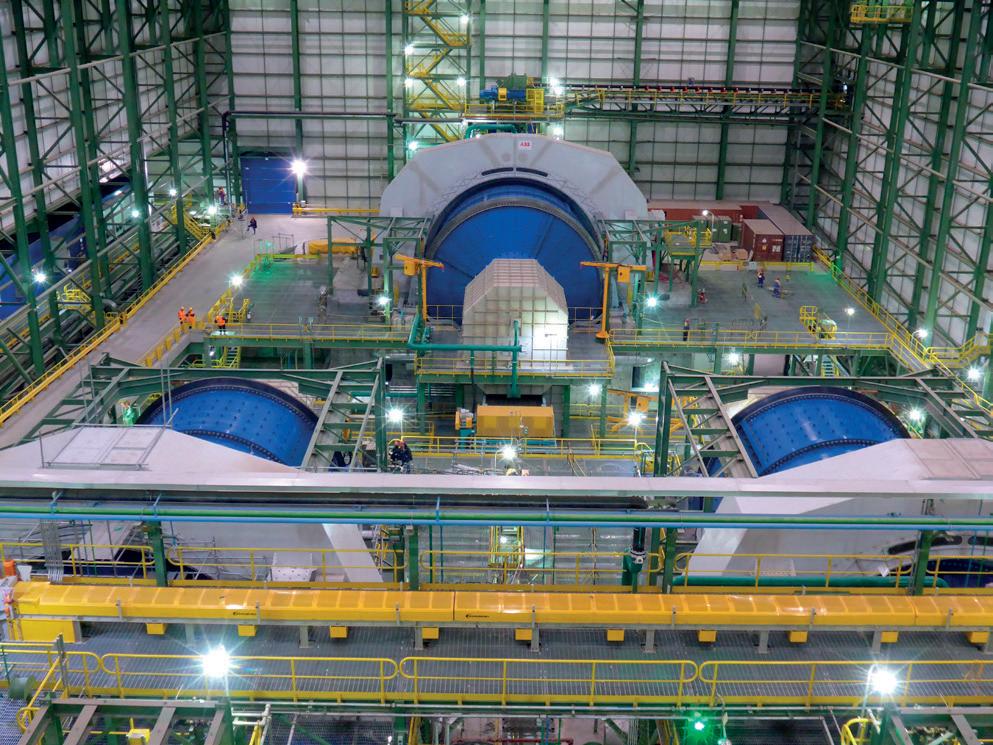
to collect GMD monitoring data and make it accessible via the cloud is now very stable and provides a solid foundation for innovative and enormously powerful preventive and predictive maintenance opportunities. Signal forecasting was added, starting in the early days with only 2 – 4 signals with a fixed granularity at fairly long 24-hour intervals, to now over 25 signals per GMD every one to six hours with variable granularity. Currently, more than 600 such analytics per GMD are performed daily, helping to provide a more accurate picture of its performance and condition. With the flood of data received from each GMD which is part of the PMG remote monitoring platform, certain patterns can not only be automatically detected, but, combined with advanced machine learning models, future trends of different signals can also be predicted and projected (the signal forecast analysis). Each GMD user with access to the PMG platform can obviously monitor only its own GMDs, but ABB is in the unique position to receive all the monitoring data from the complete global installed GMD fleet with PMG access. This enables the comparison of all the signals and data of the complete fleet, and again helps to discover anomalies of a specific GMD in an early phase – i.e. before they develop further and potentially result in an unscheduled mill shutdown.
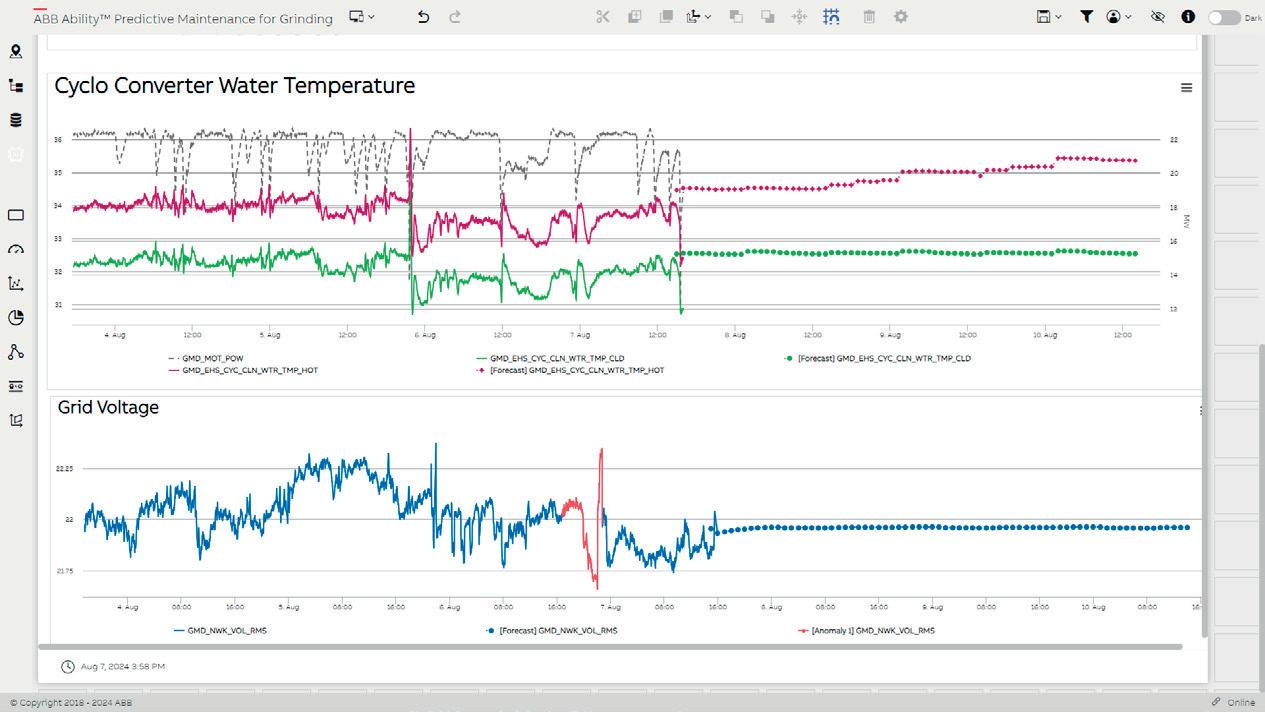
ABB is now launching a new feature of the PMG platform called Trendex™, which is the new version of the GMD diagnostic and troubleshooting tool. In the unlikely event of an unexpected GMD trip, the system is automatically storing high-resolution records of the relevant signals with a time window of 3 seconds before and 1.3 seconds after the event. These records can obviously be a tremendous support during the required troubleshooting to identify the actual root cause of the trip. Until recently, these records had to be either downloaded physically from the GMD control unit at site, or an engineer had to log in remotely and establish a direct remote access to the GMD control unit. Both options are not only challenging while being under pressure, but also time consuming, due to lack of experience, since these unexpected trips rarely occur, and direct remote access can be impacted by continuously changing IT restrictions. Therefore, Trendex is pushing only the records related to a specific event automatically to the cloud in high-resolution, following the same concept as the GMD remote condition monitoring in the PMG platform. Data from different files and sources are combined and categorised in the cloud by Trendex, to make them more accessible and to provide only meaningful information to the user. In addition, even historical event related data can be accessed. Engineers from the customer or from ABB can access the high-resolution data instantaneously using their laptop computer or mobile phone and start the troubleshooting process without any delay. Data from different sources are consolidated to provide a holistic overview of the event,
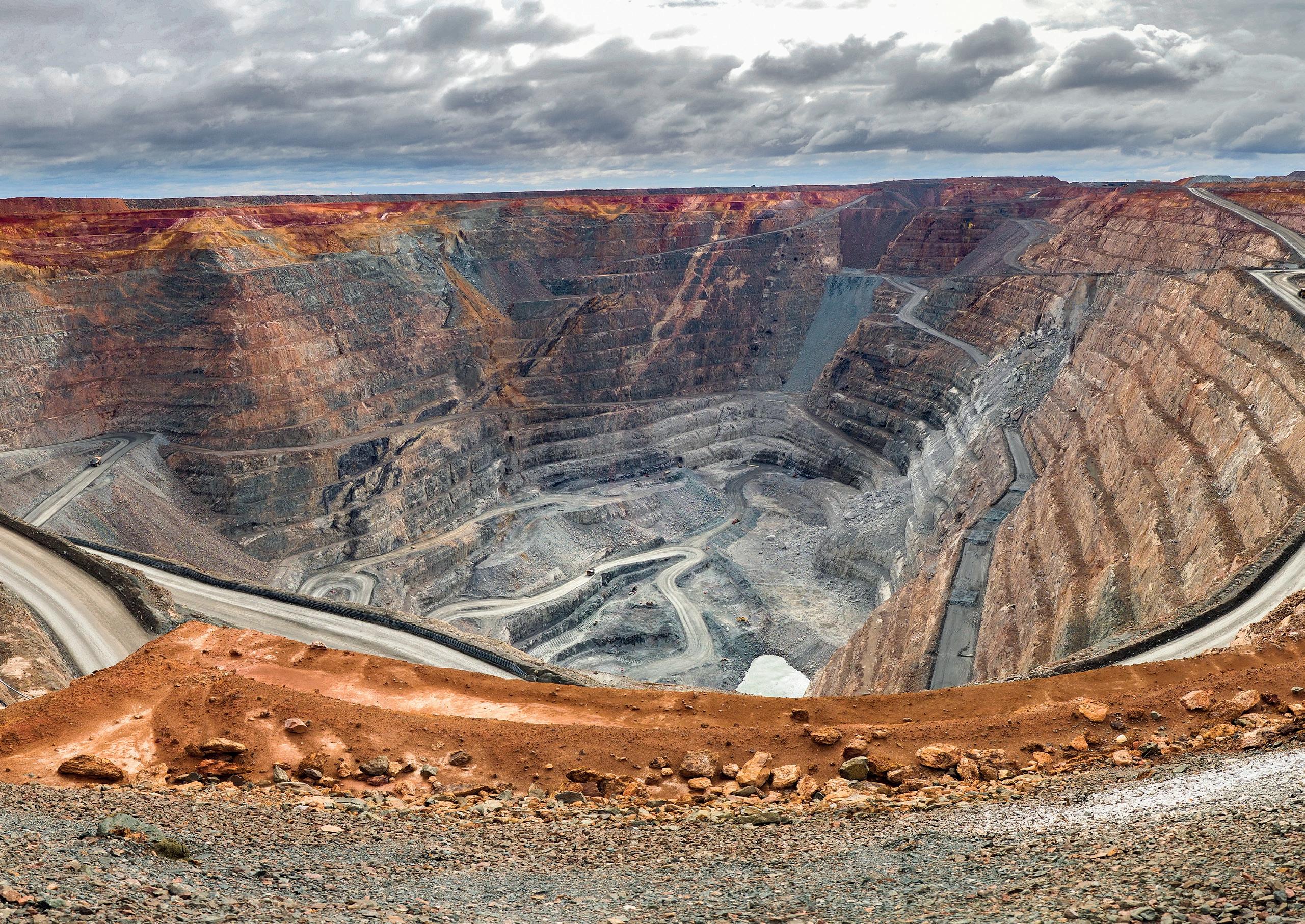

helping to find the root cause in the fastest and most effective manner. In a nutshell, ABB takes GMD troubleshooting to a whole new level.
Not all current GMD developments can be published today, but here are a few sneak peeks. Soon, the PMG platform will be expanded with the new GMD Copilot, which utilises recent advances in artificial intelligence (AI) and large language models. The difference between the GMD Copilot and standard AI copilots is that the GMD Copilot does not use the entire Internet as its source, but all project-related GMD documentation, such as schematics, manuals, and test and inspection reports, combined with the available PMG data for the GMD in question. All types of questions regarding the GMD can be freely asked to the GMD Copilot. If the available document set provides one or more answers, the GMD Copilot will quickly find and present them, even pinpointing exactly where the required information comes from. For the client, the GMD Copilot is essentially a GMD expert available 24/7 to help them conveniently access GMD information and perform certain tasks faster and more efficiently, instead of first having to laboriously locate the relevant documents and sift through them manually.
Often for new GMDs, some kind of temperature monitoring of at least one of the rotor pole units is required by clients or their insurance partners. This can be realised by a PT100 temperature sensor mounted on the winding of a few rotor poles, complete with a battery-powered wireless transmitter. However, during operation, the battery
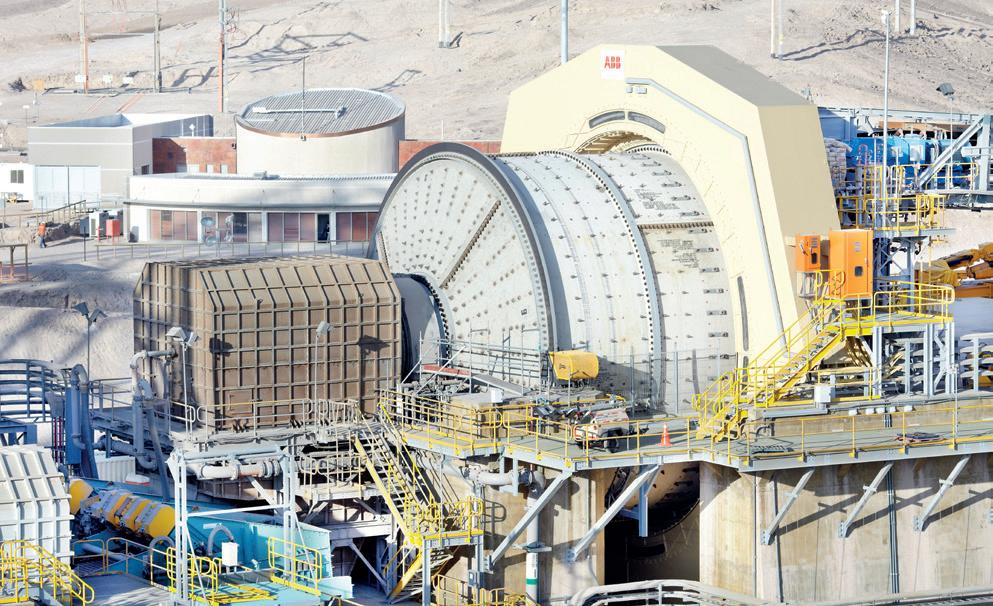
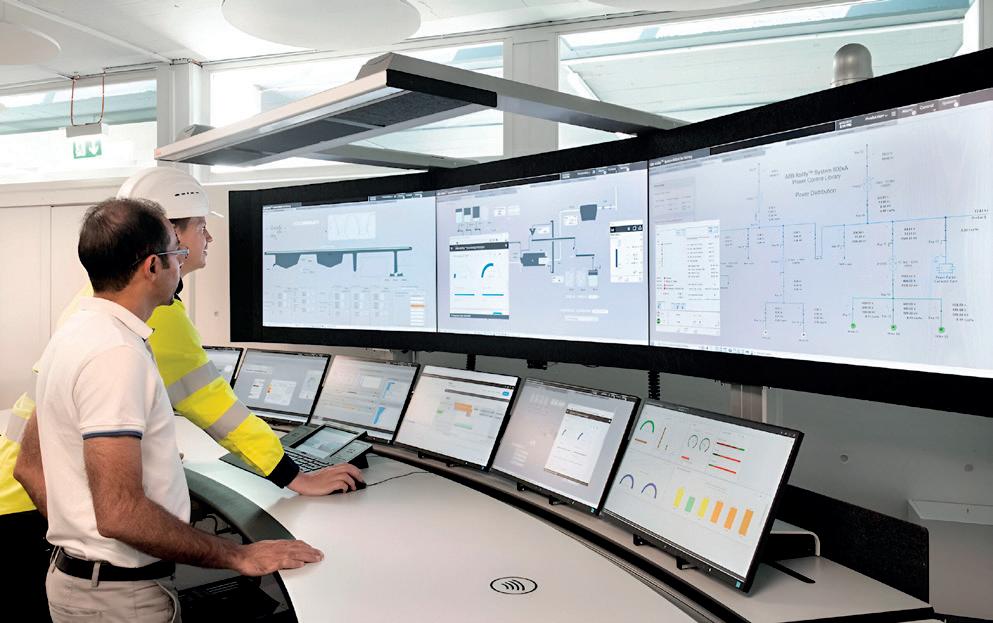
can be exhausted before the next mill maintenance, or a reliable wireless signal transfer can be challenging. Furthermore, since a GMD may have around 72 rotor poles, only a very limited number of rotor poles are temperature monitored. ABB is addressing this with another innovative approach currently under development: temperature monitoring of all rotor poles. This requires some limited additional hardware: a contactless temperature sensor specifically designed for rotor monitoring in generators and motors. Nowadays, the ABB GMD has as standard a keyphasor which, together with the airgap monitoring, enables an exact identification of each pole unit. So, for example, in the case where one pole unit shows a temperature anomaly compared to all the other pole units, then it is immediately clear which rotor pole it concerns. This novel rotor pole temperature monitoring needs to be thoroughly tested in the recently installed first pilot. After the official release of this new feature, the rotor pole temperature monitoring will naturally be integrated into the PMG remote condition monitoring platform. Rotor pole temperature monitoring, combined with exact pole identification, will open the door to many potential new insights. For example, could an analysis of the overall rotor temperature pattern, combined with the roundness of the air gap, the excitation values, the actual power consumption of the mill, and the speed of the mill, reveal certain correlations, allowing for early detection of anomalous patterns and possibly preventing future unexpected mill downtimes? Time will tell.
In addition to the enormous PMG platform developments, further GMD improvements outside the PMG platform are being realised, such as the new GMD sealing system. Since the sealing itself is a wear part, it should be replaced every few years. A properly functioning sealing on the gearless motor is important for the overall availability of the GMD, to avoid dust contamination inside the motor and prevent rainwater ingress if the mill is installed outdoors. ABB received feedback from several customers at a previous GMD user meeting that replacing the sealing on the gearless motor is rather laborious, which resulted in a complete overhaul of the GMD sealing system design. This new design uses significantly less parts and greatly reduces the time to replace the sealing, while improving the sealing properties. The new GMD sealing system has first been extensively tried out in the factory workshop, followed by a first pilot installation earlier this year on one of the two 22.5 MW GMDs operating at Boliden’s Aitik copper mine in Sweden on their huge 38 ft diameter AG mills.
These continuous developments make the GMD and its PMG remote monitoring platform more and more valuable for customers, as it truly helps them to minimise, or even avoid, unscheduled GMD downtime. Naturally, ABB will now not lean back and relax, since this journey to further minimise unscheduled mill shutdowns will never be completed. New innovative features for the GMD and the PMG platform will continuously be developed, tested, piloted, and released to achieve ever higher overall mill availability.

Bjorn Dierx, Weir, highlights the importance of adapting new, energy-efficient grinding technologies in order to improve the sustainability and cost-effectiveness of mining operations.
The world needs more transition metals to achieve net zero, but the mining industry needs to extract these using significantly less energy and water, as well as generating less waste.
Because comminution is typically the single biggest user of energy on a mine site, it is a natural target for the identification of energy saving opportunities able to have the largest impact in the short to medium-term.
To put it into perspective, comminution uses up to 1% of total final energy consumption globally. This is the equivalent to the amount of power consumed by 221 million typical UK homes.
The reality is that if the mining industry is going to reduce its emissions in line with the targets outlined in the Paris Agreement, it needs to adopt new technologies and make the switch to alternative methods to begin to reduce the effects comminution has on the planet. And this challenge will require collaboration between METS companies and miners.
In response to these challenges, Weir has developed a transformational flowsheet solution, whereby traditional tumbling mills are replaced with more energy-efficient grinding technologies, like high-pressure grinding rolls (HPGRs) and vertical stirred mills, and, where possible, coarse particle flotation (CPF) technology is utilised to recover ore at a coarser fraction. This further reduces energy consumption and generates a safer, more manageable waste stream.
While HPGRs were first utilised in the minerals processing industry over 30 years ago, most concentrators still use tumbling mills for grinding duties. But over that same period, the operating environment has changed significantly, which begs the question: why have flowsheets not followed suit?
Two of the most notable operational changes are: reduced ore grades and increased ore hardness, and the growing cost of milling consumables, such as power and steel grinding media.
These two things have a direct relationship, because typically reduced ore grades result in an increased volume of ore being processed for concentration, which, in turn, increases the overall energy input.
Additionally, processing harder ores requires higher grinding energies, which, when achieved with tumbling mills, typically consumes more steel media, resulting in significantly higher milling costs.
Therefore, to reduce their milling costs, miners can implement more energy-efficient grinding technologies, like HPGRs and vertical stirred mills. Given that grinding power demand is inversely correlated to the final grind size, the ability to recover target metals at a coarser grind size may also significantly reduce operating costs.
These transformational flowsheets are already being implemented. Fortescue’s (FMG) Iron Bridge project in Western Australia is the world’s first large-scale plant without tumbling mills.
FMG challenged Weir to co-develop a flowsheet that maximised recoverable metal at the lowest cost and environmental impact. Weir embarked on extensive test work campaigns, which included a three-year on-site demonstration plant programme, that saw numerous flowsheet iterations. Finally, it settled on a flowsheet that includes ENDURON® HPGRs with air classifiers and vertical stirred mills. It is an industry-leading example of sustainable magnetite processing and a game-changer for the mining industry, more broadly.
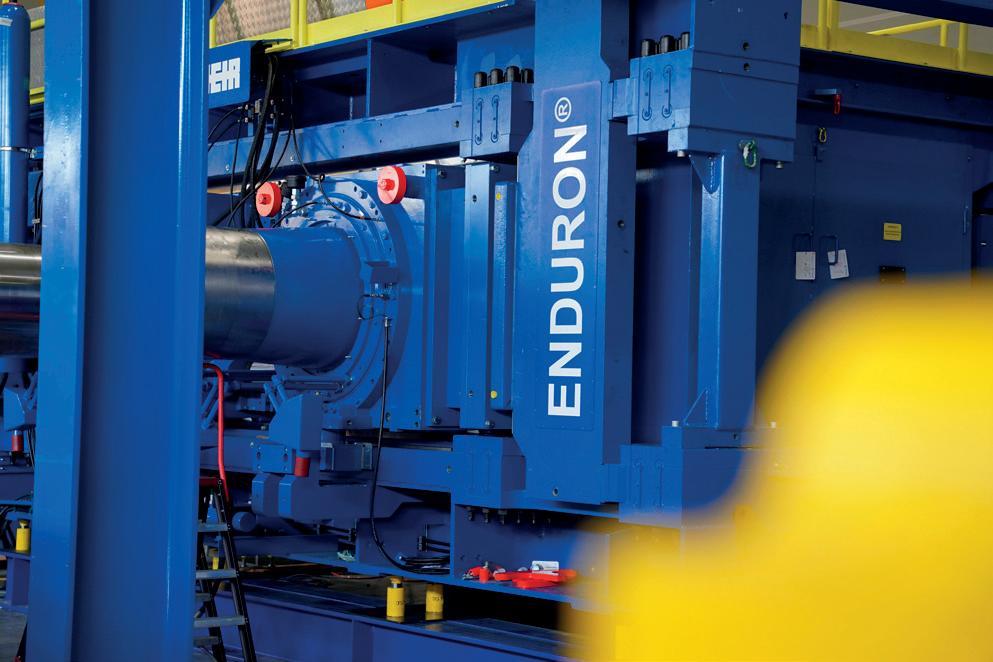
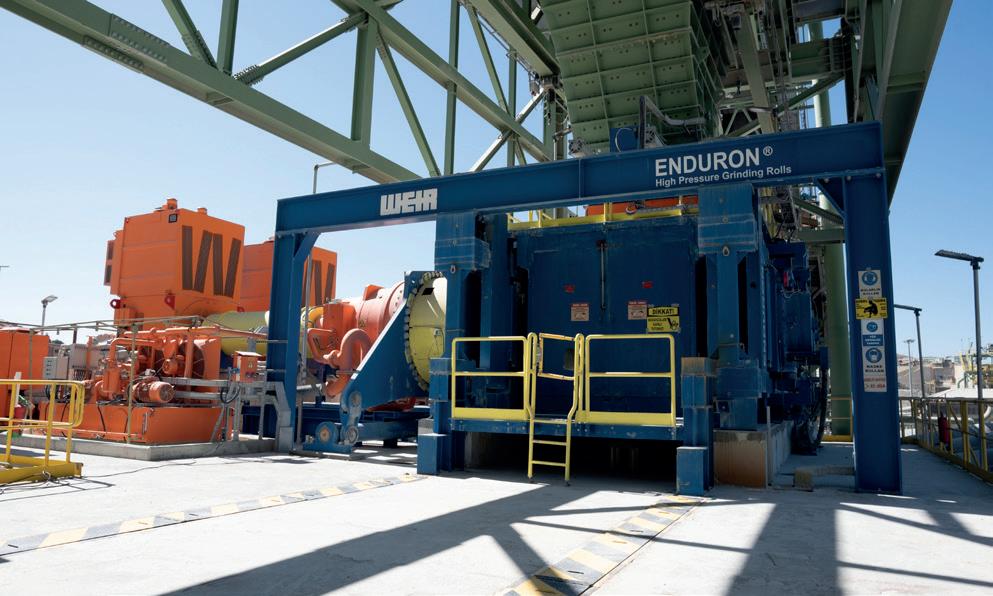
The solution will reduce energy consumption by more than 30%, and CO2e (carbon dioxide equivalent) emissions by 40%, compared to traditional mining technologies. The use of air classifiers means that 13 million t of waste will be captured early and dry, significantly reducing wet tailings waste.
Air classifiers are like industrial sized vacuum cleaners, capable of separating coarse and fine particles over a series of separation stages utilising air flow.
In areas of water scarcity or when water is capital-intensive to supply, dry air classification offers significant benefits in enabling projects to be deployed.
Quantifying the environmental benefits of projects like Iron Bridge is increasingly important to stakeholders, shareholders, and regulators, and scope 4 emissions provide a framework for doing this.
Scope 4 emissions, commonly referred to as ‘avoided emissions’, are defined as the reductions in greenhouse gas emissions that occur outside of a product’s life cycle or value chain, but as a direct result of using that product.
In March 2023, the World Business Council for Sustainable Development (WBCSD) released Guidance on Avoided Emissions to evaluate mining processes and help ensure credible accounting of avoided emissions, including clear separation from a company’s GHG emissions.
Utilising this guidance, in December 2023, Weir released a study, independently assured by SLR Consulting Ltd, that highlighted an opportunity to reduce energy use and emissions in comminution by leveraging three alternative technology combinations.
Three of Weir’s technology combinations were evaluated against a conventional comminution circuit design for an archetypal mine processing 15 million tpy of copper ore in Chile. Each circuit was based on a ‘rock-to-recovery’ system boundary; that is, reducing rock direct from the mine to a size that enables the mineral to be recovered.
The four configurations:
n Conventional comminution circuit based on a semi-autogenous grinding (SAG) mill and ball mill.
n Weir’s ENDURON HPGRs replacing the SAG mill at the initial grinding stage.
n ENDURON HPGR, plus Swiss Tower Mills’ (STM) vertical stirred mill replacing the ball mill.
n Addition of an Eriez HydroFloat CPF unit.
The study demonstrates that replacing conventional technology with innovative new solutions can cut energy use by 40%, while also avoiding 50% of CO2e emissions.
However, the sustainability benefits extend beyond scope 4 emissions. For instance, recent studies have indicated that the same amount of steel required to construct the milling circuit structure is consumed by the circuit’s grinding media in just six weeks of operation. In contrast, HPGRs do not need any additional grinding media to reduce the size of rocks.
It should be said that Weir’s transformational flowsheet is not a one-size-fits all solution; rather, various technologies in different configurations can be implemented based on each site’s operational requirements.
Weir has the equipment portfolio, process expertise, testing capabilities, and industry partners that allow it to work with mining houses and EPCs to ensure it can deliver transformational flowsheet solutions that future-proof mining operations by ensuring they continue to meet production targets, while also reducing their environmental footprint.
At the same time as Weir has been developing and implementing these transformational solutions, it has also been expanding its digital capabilities. Put simply, 80% of an operation’s revenue goes through the HPGRs’ rolls, so it is vital that the machine’s health and performance are monitored in real time to ensure high availability and

training facilities to create jobs in the local communities it operates in. It is also up-skilling those already working in the industry, and these local facilities give people the opportunity to learn about new technologies by working on them and gaining hands-on experience.
The overall recovery of contained value in an ore body needs to be improved, while also increasing the effectiveness of the energy input.
The sustainability benefits associated with moving away from conventional comminution-based SAG and ball mills are well-established, but, as ore grades continue to decline and the cost of energy continues to rise, the economic benefits of adopting more efficient comminution circuits are becoming harder to ignore.
This is evidenced by Weir recently being awarded a £53 million contract to provide a transformational flowsheet for Barrick Gold’s greenfield Reko Diq copper-gold project in

Moreover, at brownfield sites, process optimisation projects can have significant financial and sustainability benefits. At Tüprag’s Kışladağ Gold Mine in Türkiye, Weir replaced five tertiary crushers, six screens, and conveyor belts with an ENDURON HPGR and increased gold recovery
As the energy transition continues to drive demand for the metals required to realise it, these gains have the



Excessive wear, gear damage and downtime, as well as high lubricant use, costly disposal and environmental concerns are all associated with large shrouded open gears.
Pyroshield® Syn Hvy & XHvy Open Gear Lubricants solve these problems and more, including reducing lube consumption by up to 80%.
For more about LE’s high-performance lubricants, contact us or visit our website today.

Henry Kurth, Scantech International Pty Ltd, addresses the rise of online analysers over traditional sampling in bulk material handling.
In the resources sector, traditionally the only way to confirm the quality of a bulk has been via sampling and laboratory analysis. The presentation of material plays a large role in the ability to sample material representatively.
Stockpiles, siloes, trucks, trains, and ships are utilised for bulk material storage and transport and present a number
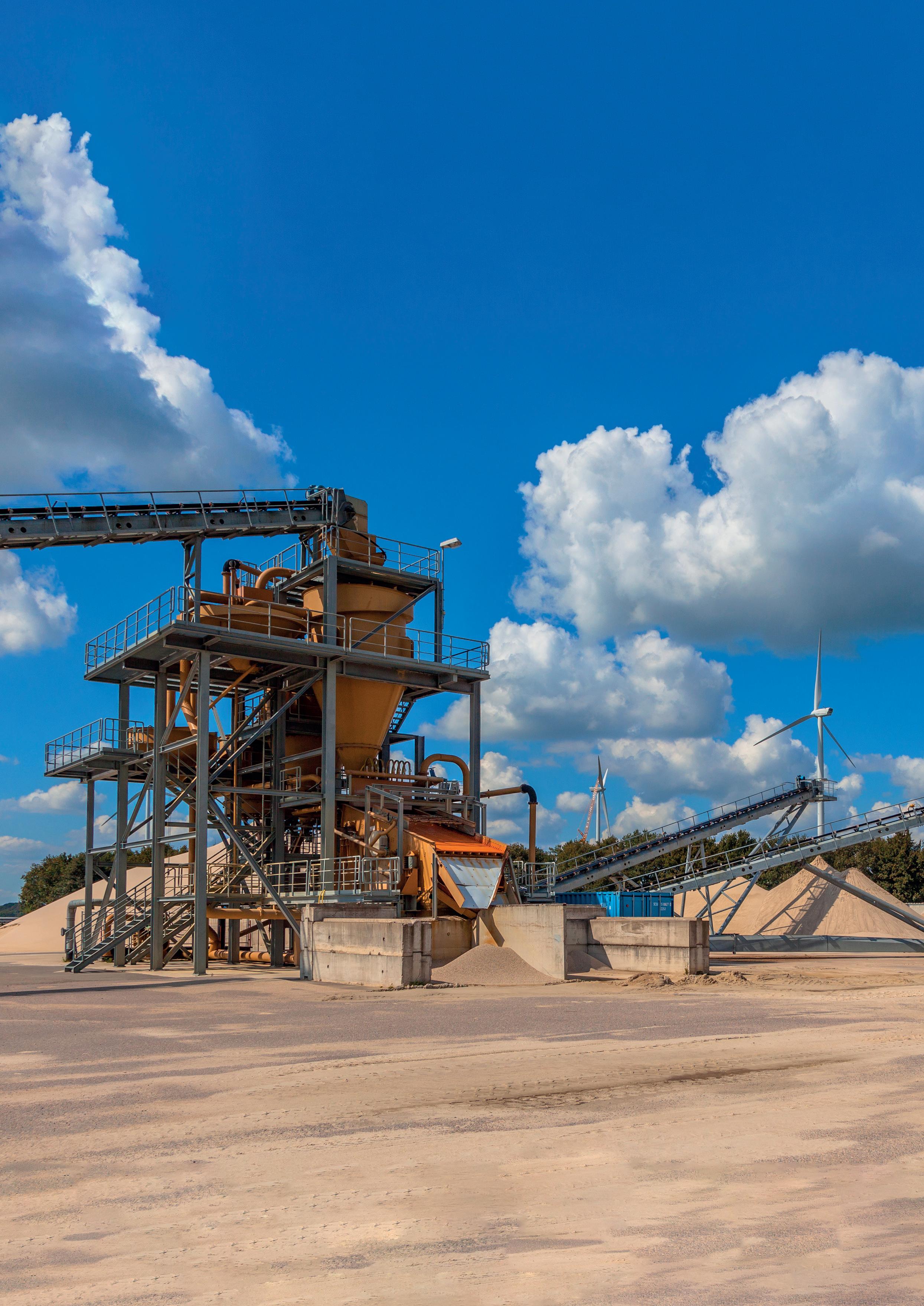
of challenges for sampling. Conveying material between these accumulated masses allows them to be sampled when the correct design and implementation of a sampling system and equipment is applied.
A sampler has the capacity to take samples of a flow. However, a sampler that is poorly designed or applied may
prevent representative samples being taken. Many ISO standards have been developed for different commodities to guide those intent on sampling bulk material to determine a representative average analysis. Assuming a sampling system has been well-designed and correctly applied to comply with sampling theory and the respective ISO standard, why should on-line analysis be considered?
The answer lies in the purpose of the results. Many commercial transactions require a certified analysis for payment terms, confirming both quantity and quality,
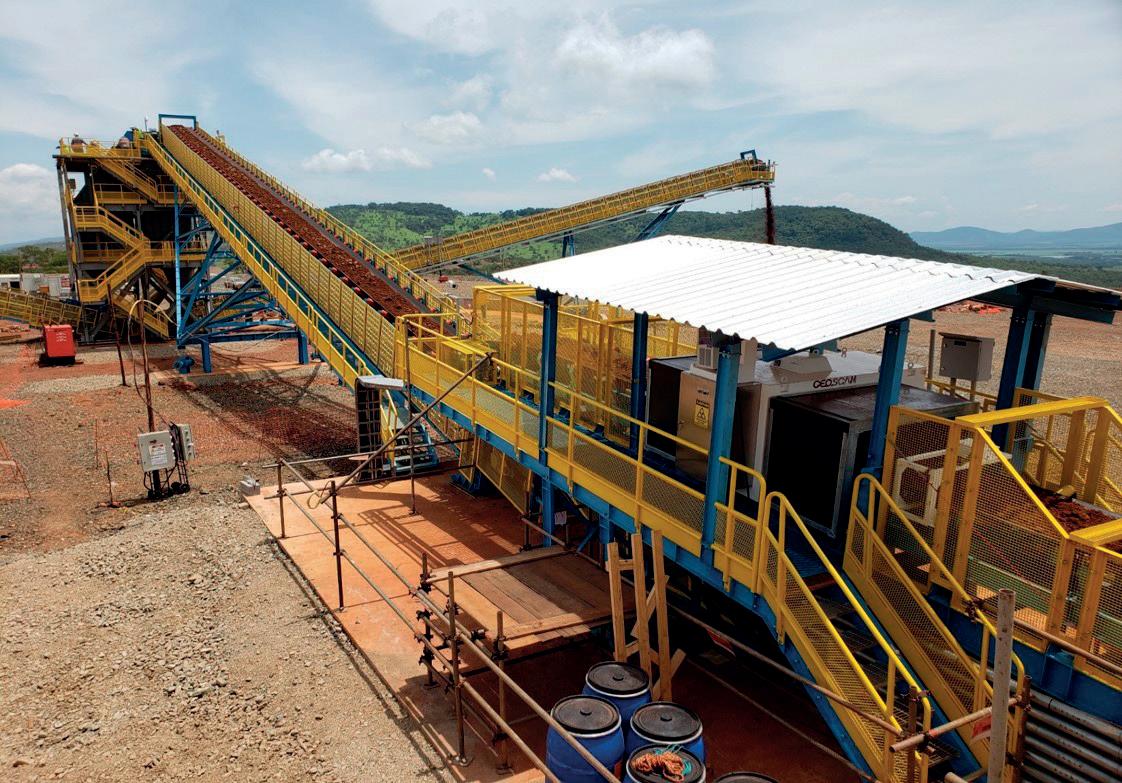
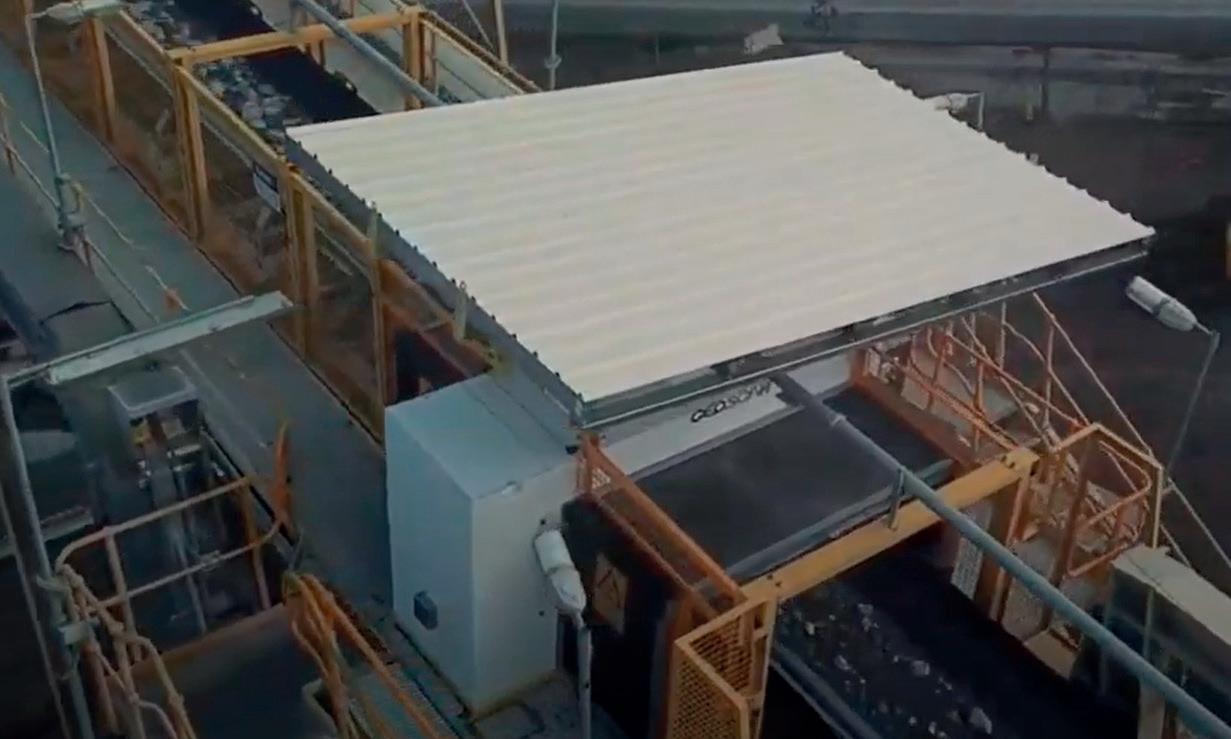
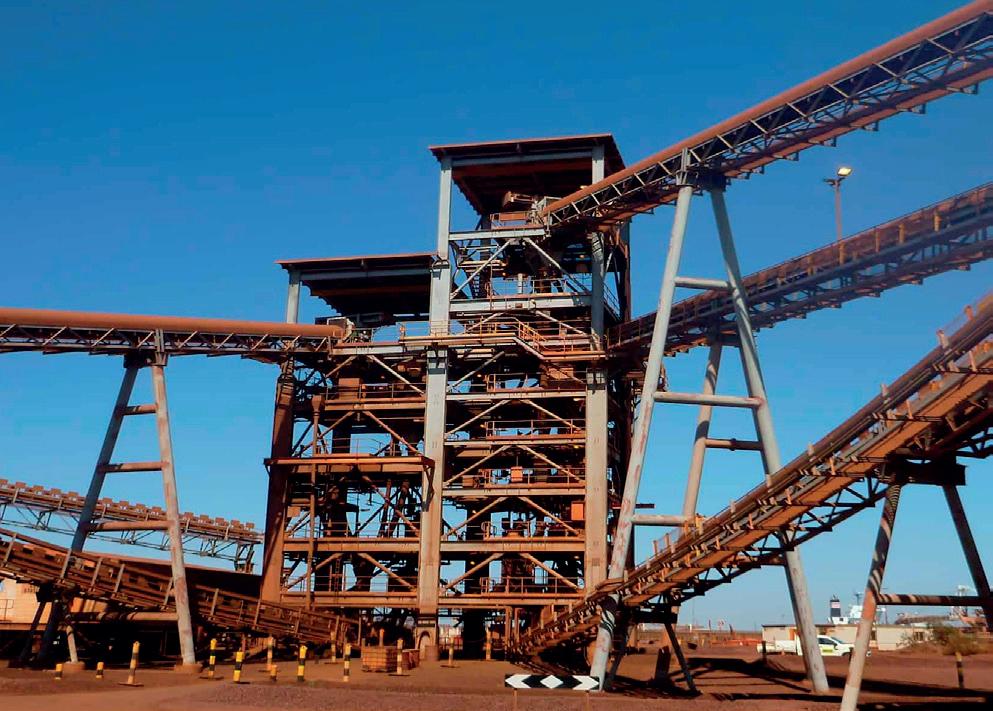
with quality being determined to a specified variance knowing that any amount of sampling still contains sampling errors. This requires an agreed sampling system, its application, preparation of samples for laboratory analysis, and specified laboratory techniques for the required analysis parameters specific to each commodity. Again, it can be asked why there would be any alternative method that is acceptable to both seller and buyer.
If alternative uses of the results are considered, then perhaps sampling need not be the primary consideration for evaluating quality. Routine sampling requires continuous sample collection, preparation and analysis with resources commensurate to sample volumes, frequency, and types of analysis required. Is the resultant assay data beneficial for process control, or is it used only for monitoring or quality confirmation?
Technologies have been developed for real-time analysis of bulk materials in conveyed flows. Some of these are continuously sensing the entire flow through its full depth and utilising mass flow inputs in real time, to determine tonnage weighted average composition analysis of short increments of flow. A multi-elemental analysis, as well as moisture content, can be measured and reported every 30 seconds, every minute, or over longer time periods, depending on how the data is used. The technologies are not designed for absolute accuracy, but some high specification systems have unique measurement capabilities that can provide very useful data. These may include measuring elements that other techniques cannot, or measuring parameters than can be used as proxies for other compositional characteristics useful in categorising the material – for example, the acid-consuming potential for a leach process feed material.
An advantage of analysers over sampling systems is that particle size and belt speed do not affect the online analyser technologies, but play a large role in sampler design and implementation. Generally, no further processing of the conveyed flow is needed after primary crushing for it to be continuously analysed. Moisture content, proportion of fines, segregation in the flow, and mineralogy do not affect the elemental analysis capability.
Process analytical technologies are commonly used to measure quality in real time, so that responses to changes in composition can be implemented to: influence the overall quality of a batch, assist in controlling the destination of parcels to different destinations based on quality (bulk diversion), or controlling the proportions sourced from different qualities (blending) to achieve a target composition for a material. Process control is optimised when representative, precise, real-time data is available on material quality.
A South African coal mine and power station have utilised a COALSCAN analyser measuring conveyed coal quality parameters for payment terms. Both sites used sampling equipment and laboratory services that neither had a great deal on confidence in, and agreed to utilise an
Explore how to harness AI, integrate leading technical innovations, and leverage sustainable mining practices across all sectors of the industry at this dynamic conference.
See what’s next and meet your future at MINEXCHANGE.
Registration opening soon. Find updates and emerging details at SMEAnnualConference.org
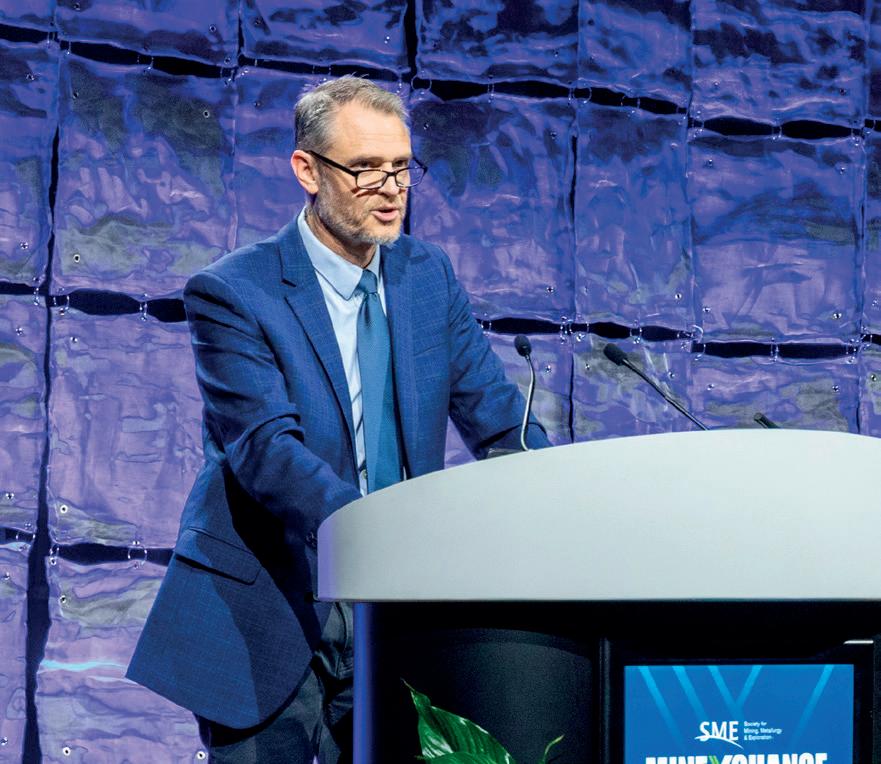

OVERALL CONFERENCE SPONSOR
As the world’s most influential technical conference on gold, World Gold 2025 takes place in conjunction with MINEXCHANGE. You can access the dedicated technical program from World Gold, as well as an expanded Expo floor, with your MINEXCHANGE registration.
independently calibrated analyser to determine coal quality. The analyser maintenance and support was jointly funded. While this is a rare occurrence, it does show that confidence in the technology used and its calibration and support were possible, and it also eliminated the need for duplicate laboratories and processing of routinely collected samples at both sites.
Monitoring conveyed material quality has highlighted unexpected problems in the iron ore sector, where a product stockpile became contaminated with waste material detected by a GEOSCAN-M analyser on the conveyed flow. The detection of the waste, believed to be from a high-grade ore block, prevented ongoing contamination and allowed the stockpile to be successfully blended with other materials to comply with minimum quality specifications when loading the train. The initial response was that the analyser must be incorrect, but, upon inspection, the colour of the material was sufficient to confirm it was not high-grade ore and the mining team determined the ore block had been mislabelled.
Analysers have been successfully used to monitor train and ship loading as confirmation the material is to specification for the parameters that can be measured with sufficient confidence. In iron ore, these may include the iron, silicon, aluminium, phosphorus, manganese, titanium, and potassium levels, as well as moisture content. Moisture content is critical to control when loading fine materials so that the transportable moisture limit (TML) does not exceed specified levels for those materials. Conveyor-based analysers (TBM series and CM200) have been successfully applied to ensure levels stay within expectations during loading, because the availability of laboratory results from sampling such flows may not be available until after a ship has departed. In some cases, the departure of ships is delayed until results from samples are made available. It is often unnecessary to delay loading operations and departures if the quality has been monitored with online analysers during loading.
The most common use of analysers is in process control and at the earlier stages in processing. Mined ore feeding a process can be representatively measured to assist in managing the quality feeding the process. Improving consistency of process feed quality is proven to enhance process performance by up to 15%. An increase in metal recoveries at a base metal mining operation of a few percent can be considered the difference between losses and profits. A step change in performance is the stuff of dreams, yet possible and proven at some sites.
Measuring feed quality and adjusting feed flow to a process can improve process utilisation significantly. A phosphate operation increased production by 20% after installing a GEOSCAN-M online analyser and increasing feed flow to optimise plant capacity. No such benefit had
occurred through the routine sampling and laboratory analysis process that had been previously in place.
A limitation of analysers may be their ability to measure some elements, particularly those present in trace quantities that are included in the specification. Some high specification analysers have unique measurement capabilities, such as GEOSCAN GOLD, which can measure gold directly in conveyed ore flows at precisions to 0.2 ppm, phosphorus in iron ore to 0.01%P, elements such as potassium, sodium, and chlorine in potash, and carbon directly in various commodities. The GEOSCAN can measure conveyed materials, despite conveyors containing steel cords or chlorine in fire resistant anti-static (FRAS) belts.
In many cases, sites can continue sampling in parallel with analyser implementation until they develop sufficient confidence in the analyser’s capability to significantly reduce their sampling. Some sampling may still be required and analysers need to be calibrated with verification processes perhaps every six months. Dynamic calibration processes, where samples are taken of actual analysed material, have proven very effective in developing calibrations to achieve precisions unmatched through static calibration of standards alone. A key expectation of online analysers is their response to dynamic conditions, which include flow rate changes, as well as constantly changing composition. This responsiveness can be programmed into the calibration only if dynamic calibration techniques are used. It also allows analysers implemented in stockpile-forming operations to be able to guarantee average quality of the stockpiles produced. Currently, only one analyser supplier (Scantech International Pty Ltd) appears to offer average stockpile quality guarantees.
It seems quite clear from the above collection of examples for various commodities that online analysers are quite effective and indeed preferred over sampling and laboratory analysis when it comes to real-time quality monitoring and control requirements. Sampling and analysis will remain the preferred method for commercial transactions until standards are developed that allow analysers to be used for that purpose. One critical requirement for analysers to be potentially used in any certification of traded commodities will be the independence of the calibration support and preference for jointly funding this. It is the same reason that many certificates of analysis are required to be issued by laboratory companies independent of the commodity sellers and buyers.
Precisions can be verified using standard methods appropriate to each commodity to ensure that analysers comply with performance expectations. The calibration process could also be overseen and certified by another independent third party.

Philippe Cyr, Eddyfi Technologies, Canada, evaluates the advancements in non-destructive testing for mining applications.
The mining industry is a cornerstone of the global economy, with a market size expected to grow from US$2.06 trillion in 2022 to US$3.36 trillion by 2026. As this industry expands, the demand for reliable and efficient inspection techniques to ensure the safety and longevity of mining equipment and infrastructure has never been higher. Eddyfi Technologies, a global leader in advanced non-destructive testing (NDT) solutions, continues to innovate in this space, offering advanced inspection technologies tailored to the unique challenges of heavy industry and mining applications.
Mining operations involve a wide range of equipment and structures that must withstand harsh conditions and heavy usage. Regular inspections are critical to detect early signs of wear, corrosion, or structural failures that could lead to costly downtime or catastrophic failures. Traditional inspection methods, often involving disassembly or destructive testing, are not only time-consuming, but also increase operational risks.
Non-destructive testing offers a viable alternative by enabling thorough inspections without the need to disrupt operations. NDT techniques – such as phased array ultrasonic testing (PAUT), eddy current testing (ECT), and remote visual inspection (RVI) – allow for the assessment of equipment integrity while minimising downtime and reducing inspection costs.
Eddyfi Technologies has developed a suite of NDT solutions specifically designed for the mining industry, addressing both surface and underground applications. These technologies have been deployed successfully in various mining operations worldwide, providing critical insights into equipment health and helping operators avoid potential failures.
Winder systems are vital for underground mining operations, and their failure can lead to severe consequences. In South Africa, legislation mandates regular winder inspections to ensure safety. Eddyfi Technologies’ PAUT and Time of Flight Diffraction (TOFD) solutions allow for comprehensive inspection of drum shafts, gearboxes, brake components, and sheave spindles. The ability to perform
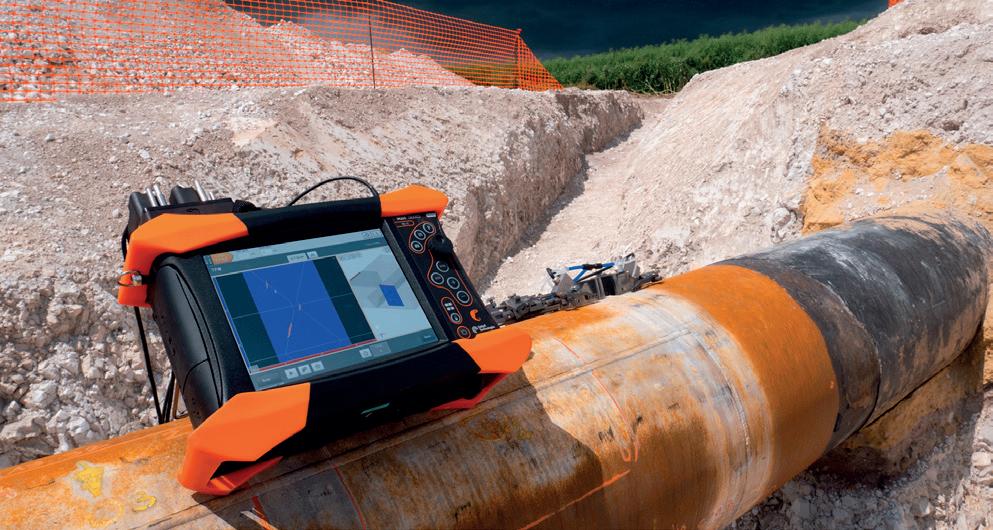
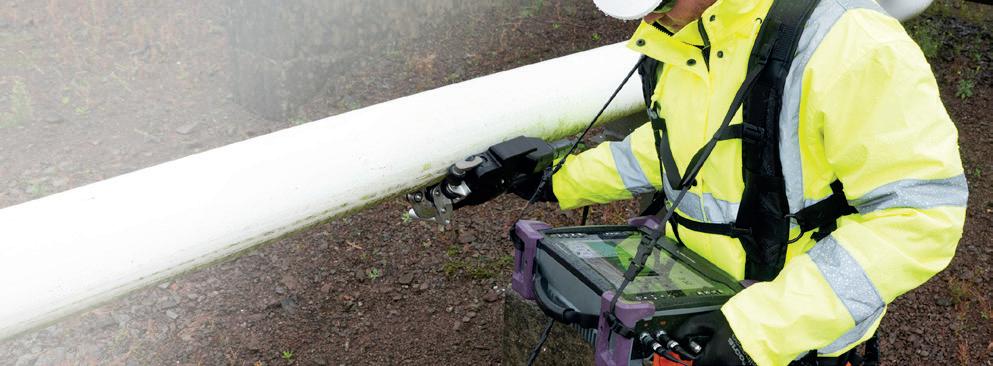

these inspections without removing protective coatings or disassembling components significantly reduces labour costs and inspection time, while advanced reporting capabilities provide operators with detailed insights into the condition of their winders.
In any major gold mine, implementing Eddyfi Technologies’ PAUT solution for annual winder inspections could significantly reduce downtime. Traditionally, such inspections might require up to two weeks due to the need for disassembly and cleaning. However, by utilising PAUT, the inspection time could be reduced by as much as 50%, allowing operations to resume more quickly. This approach would ensure that critical components are thoroughly inspected with minimal preparation, highlighting the efficiency and effectiveness of advanced NDT technologies in mining environments.
Underground mines rely on complex piping systems for air, water, and slurry transport. These systems are prone to corrosion and material loss, which can lead to leaks or bursts with severe operational consequences. Eddyfi Technologies offers advanced portable inspection tools like the Swift-M system, which can rapidly screen piping for material loss, even in challenging conditions with minimal surface preparation. The system’s high sensitivity to both near and far-side defects ensures that even the smallest indications of corrosion are detected early.
In any major copper mine, ageing underground piping could pose a significant risk of failure. Traditional inspection methods, which are often slow and require extensive surface cleaning, might miss critical defects. By deploying the Swift-M system for a comprehensive inspection, several areas of severe corrosion could potentially be identified, which might have been previously undetected. Early detection and addressing of these issues could help the mine avoid a potential shutdown, thereby saving millions in repair costs and lost production.
Mining processing plants are equipped with various machinery and storage tanks that must be regularly inspected to ensure operational efficiency.
Eddyfi Technologies has introduced automated ultrasonic testing (AUT) solutions which provide comprehensive coverage of tank walls and other critical components. These systems enable operators to detect large-scale corrosion, isolated pinhole defects, and other forms of degradation without the need for scaffolding or rope access. The ability to perform these inspections remotely and record all data for detailed analysis further enhances safety and reduces inspection times.
The scanner in Figure 3 represents a significant advancement in automated inspection technology (AUT). Capable of operating in challenging environments, the AUT system uses PAUT to provide a 100% volumetric inspection of storage tanks and other large structures. Its ability to capture detailed data from multiple angles ensures that no defect goes unnoticed, making it a critical tool for ensuring the integrity of processing plant equipment.
Surface mining operations involve the use of heavy machinery such as trucks and excavators, which are subjected to extreme stresses. Cracks and other defects in the wheel rims and other critical components can lead to equipment failure. Eddyfi Technologies has developed specialised eddy current array (ECA) probes that allow for the inspection of these components without removing protective coatings. The high-speed, high-resolution data provided by these probes enables operators to detect and size defects accurately, ensuring timely maintenance and preventing unexpected failures.
In an opencast mine, frequent cracks in the wheel rims of large haul trucks could lead to unexpected downtime. By implementing Eddyfi Technologies’ ECA probes for regular inspections, the time needed to identify defects could be drastically reduced. This proactive approach might result in up to a 40% reduction in unscheduled maintenance, helping to keep the fleet operational and reducing the costs associated with part replacements.
Boreholes are essential for mineral extraction, but their inspection poses significant challenges due to their depth and limited accessibility. Eddyfi Technologies’ Spectrum high-definition camera system, coupled with a custom centring device, allows for the remote inspection of boreholes up to 2 km deep. This robust, depth-rated system provides high-definition video feeds, enabling operators to assess the condition of boreholes in real time and take corrective actions as needed.
The Spectrum camera system is equipped with advanced optics and lighting, providing clear, detailed images even in low-light conditions deep underground. Its robust design allows it to operate reliably in harsh environments, making it an invaluable tool for long-term monitoring of borehole integrity. The system’s ability to provide live video feeds also enables operators to make informed decisions quickly, reducing the time between detection and corrective action.
The demand for NDT in the mining sector is driven by several factors, including the increasing complexity of mining operations, the need for extended equipment life, and the growing emphasis on safety and environmental stewardship. As mining companies seek to optimise their operations, NDT plays a crucial role in ensuring that equipment and infrastructure are maintained at peak performance.
The adoption of advanced NDT technologies is also aligned with the broader industry trend towards digitalisation. By integrating NDT data with other operational systems, mining companies can gain a holistic view of their operations, enabling predictive maintenance and reducing the likelihood of unexpected failures. This shift towards data-driven decision-making is transforming the way the industry approaches equipment maintenance and asset management. As the mining industry continues to evolve, the role of NDT will become increasingly important. Innovations in areas such as machine learning, robotics, and remote monitoring will further enhance the capabilities of
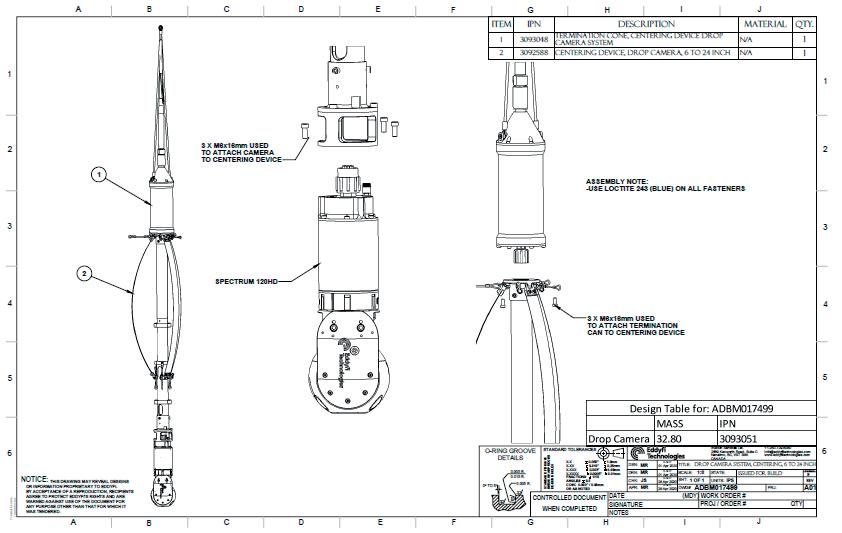
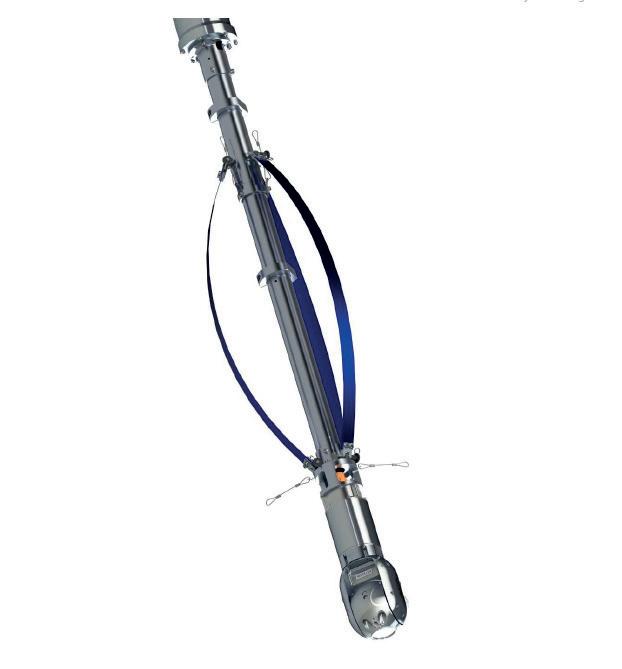
5. Robust, depth rated high-definition camera system with live software for 24/7 monitoring across a 2 km fibre optic tether.
NDT technologies, enabling more accurate, efficient, and safe inspections. Eddyfi Technologies is at the forefront of this evolution, committed to developing solutions that meet the needs of the modern mining industry.
As the mining industry continues to grow, the need for advanced, reliable inspection techniques becomes increasingly important. Eddyfi Technologies’ NDT solutions provide mining operators with the tools they need to ensure the safety and efficiency of their operations. By enabling detailed, accurate inspections without the need for disassembly or extensive downtime, these technologies not only enhance operational safety, but also contribute to the overall profitability of mining operations. As the industry evolves, Eddyfi Technologies remains committed to developing innovative solutions that meet the unique challenges of mining, helping operators maintain the highest standards of safety and performance.

Peter Hood, King & Spalding, examines how new EU sustainability rules create unseen legal risk for non-EU companies in the mining sector.
New EU sustainability rules impose stringent, extra-territorial obligations relating to human rights and environmental due diligence. In the critical minerals sector, intense competition for resources concentrated in jurisdictions with poor domestic human rights records makes these obligations particularly challenging to fulfil. What is more, any shortcoming in human rights due diligence or reporting gives rise to risks which transcend the new EU sustainability regime, including in relation to class-actions, contractual claims, and greenwashing, in the EU and beyond.

The EU has recently adopted four new sustainability measures which will have a significant impact on companies operating in the critical minerals sector, whether they are based in the EU or not.
The CSRD came into force in January 2023. From 2026, it will apply to any large EU subsidiaries of non-EU companies and, from 2029, it will apply to any non-EU parent company generating more than €150 million revenue in the EU (provided that it has one or more large EU subsidiary or branch). Under the CSRD, companies must conduct a double materiality assessment to determine their priority sustainability issues. Where these include human rights issues in its overseas operations or supply chain, the company must report against the exacting disclosure standards for these issues set out in the European Sustainability Reporting Standards (ESRS).
The CSDDD came into force in July 2024. From 2027, it will apply to non-EU companies generating revenue in the EU of more that €1.5 billion, with this threshold falling to €450 million by 2029. Unlike the CSRD (or the modern slavery legislation in force in the UK, Australia, and Canada), the CSDDD is not a reporting directive. Instead, it imposes mandatory due diligence requirements on companies. These entail that they identify and assess potential impacts, prioritise them based on severity and likelihood, and take appropriate measures to prevent, mitigate, or cease adverse impacts. Companies must also conduct continuous monitoring and evaluation on their due diligence programme, communicate and engage with affected stakeholders (such as workers in their overseas operations and supply chain and potentially affected communities), and put in place appropriate grievance mechanisms. Where it is not possible to prevent or adequately mitigate the risk of an adverse human rights impact in its supply chain, a company will ultimately need to find an alternative supplier.
The BR entered into force in August 2023. From August 2025, any company looking to place batteries onto the EU market with a global net turnover of more than €40 million must conduct and publicly report on due diligence on specified battery raw materials – i.e. cobalt, lithium, graphite, and nickel. This requires a set of due diligence processes similar to those required under the CSDDD. However, it also imposes additional requirements. Companies must disclose the name and address of their tier one suppliers, a list of market transactions from raw material extraction through to purchase by the tier one supplier, and third-party verification of each of those suppliers’ due diligence policies.
The Forced Labour Regulation (the FLR) Approved in 2024, the FLR is expected to start to apply to companies from 2027. Unlike the CSRD, CSDDD, and BR, the FLR does not directly impose due diligence obligations
on companies. Instead, it introduces a prohibition on any company (irrespective of size or domicile) from importing into the EU a product for which forced labour has been used in whole or in part at any stage of its extraction, production, or manufacture. The FLR empowers competent EU authorities to identify high-risk products (including on the basis of submissions by trade unions and NGOs), conduct investigations, and, ultimately, to prohibit the product from being placed on the EU market. While the FLR is more closely related to US trade measures such as the Uyghur Forced Labor Prevention Act than the other new EU sustainability measures, companies that are subject to an investigation under the FLR have the opportunity to present evidence of any forced labour due diligence conducted in accordance with the same standards that underpin the other measures. Where this persuades an authority that there is no substantiated basis for a concern of forced labour, this can stop an investigation in its tracks.
For any company within the scope of one of these measures, there is risk associated with non-compliance. For example, under the CSRD and CSDDD, companies will face administrative penalties under the law applicable in the relevant EU Member State. Particularly under the CSDDD, this could be substantial, with the directive specifying penalties of up to 5% of global turnover. Companies may also be subject to civil claims from victims of alleged human rights impacts. Under the BR and FLR, the most significant risk relates to an order to withdraw a product from the EU market.
However, legal risk associated with a failure in a company’s human rights due diligence processes goes well beyond these four measures.
The new EU sustainability measures do not respect traditional legal notions of separate corporate personality. This means that purchasers cannot discharge liability by attributing responsibility to the act or omission of a supplier. Instead, legal liability can be triggered by the failure of a company purchasing critical minerals (or a product containing critical minerals) to conduct adequate human rights due diligence on its supply chain, in relation to an issue of which it was or should have been aware. In practice, this entails that companies that are not caught by any of the new EU sustainability measures may nevertheless be subject to contractual requirements imposed by their customers to implement the same, underlying due diligence obligations. A failure to do so, particularly where this contributes to liability or exposure of a purchaser company under one of the EU sustainability measures, may lead to contractual liability.
Separately, the new measures (and in particular the CSRD, CSDDD, and BR) require that companies put a significant amount of sensitive information in the public domain. This will include granular detail on its human rights risk assessment, management and governance processes, and the extent to which parent companies are responsible for overseeing these processes in their overseas operations and supply chains. This will provide a rich seam of information for claimant lawyers looking to establish evidence that a parent company exercises the necessary level of control over risks in its value chain, such as
to establish a duty of care under principles of common law negligence. For UK domiciled parent companies, as explained by the UK Supreme Court in Vedanta Resources PLC and anor. v Lungowe and others [2019] UKSC 20, this is a critical step in establishing the jurisdiction of the English courts over a claim relating to overseas human rights impacts.
Another, well-documented area of risk relates to ‘greenwashing’ claims linked to sustainability disclosures, including those required under the new EU sustainability measures. Where a company makes false or misleading statements about sustainability issues in their public materials, this can give rise to legal liability under applicable securities law (for example, under the anti-fraud provision of the Securities Exchange Act of 1934 or s.90/90A of the UK Financial Services and Markets Act), as well as regulatory action by government agencies. This risk is not new, or specific to the new EU sustainability measures. However, the reporting standards under the CSRD are so specific and require reporting at such a granular level that in-scope companies will not be able to draft around sensitive disclosures in the way that they may have under previous, voluntary reporting regimes. In practice, this is leading to difficult discussions between in-house counsel charged with minimising legal risk on the one hand and sustainability professionals who want to promote the extent and range of their company’s sustainability programmes on the other.
A less well-documented area of risk for UK companies specifically relates to criminal investigations into the products of forced labour by UK authorities. In R (re World Uyghur Congress) v the National Crime Agency [2024] EWCA Civ 715, the UK Court of Appeal recently confirmed that any company which imports or sells products in the UK knowing or suspecting that it is the product of forced labour may be liable to prosecution and civil recovery proceedings under the Proceeds of Crime Act. Given the prevalence of reporting on forced labour in certain critical mineral supply chains and the information on these issues which companies will be required to disclose in their EU sustainability disclosures, this is an area of risk for UK companies that should not be overlooked.
Companies will be at various stages in developing compliance programmes to meet the requirements under the new EU sustainability measures. For those companies at an early stage in the process, the first steps are to:
1. Conduct an application assessment to determine if and when any of the new EU sustainability measures will apply –either at an EU subsidiary or parent level.
2. Gather a working group of internal stakeholders with touch points to sustainability issues, including legal, sustainability, human resources, compliance, and internal audit. One of the first steps that this working group should take is to map appropriate external stakeholders. Companies will need to engage with external stakeholders (for example supply chain workers and affected community members) or their representatives at various stages in the due
diligence process, including in identifying their priority human rights issues. However, engagement with external stakeholders can give rise to a number of sensitivities and practical difficulties which will take time to overcome.
3. Conduct a materiality assessment to determine the company’s priority sustainability issues. Key issues in the critical minerals sector are likely to include forced and child labour associated with extraction of minerals, particularly in high-risk jurisdictions such as the DRC, Indonesia, Papua New Guinea, and China, as well as the impact of mining projects on the land and environmental rights of affected communities.
4. In relation to the company’s priority issues, conduct a gap analysis between a company’s existing systems and processes and the standards under the new EU sustainability legislation. Companies are not required to reinvent the wheel. Where there is an effective system already in place in relation to a particular issue, the company does not necessarily need to create something new in order to meet the requirements under the CSRD or CSDDD.
Aside from compliance with the new EU sustainability measures, companies in the critical minerals sector may want to consider taking additional steps to mitigate the risk of liability in claims brought by customers, investors, and other affected stakeholders. For example:
1. Introduce robust disclosure controls on sustainability reports. Given the risk of negligence and greenwashing claims relating to sustainability disclosures, companies should treat their disclosures under the CSRD, CSDDD, and BR as they would any other disclosure mandated under applicable securities or company law. This requires a process to test the underlying evidential basis for all disclosures and requires caution in the language used to frame sustainability disclosures.
2. Careful review of human rights and sustainability clauses in commercial contracts. In practice, companies use boiler plate clauses which contain representations as to outcomes which are beyond a company’s control – for example, that there is ‘no forced labour’ in an extended supply chain. Clauses like this afford little protection to the purchaser company (their liability under the new EU sustainability measures cannot be discharged by a simple flow-down of legal obligations), while also creating significant and unmanageable legal risk for the supplier. These clauses should be avoided. Instead, contractual provisions should focus on the systems and processes that are in place, and the information which contract counterparties are required to share in relation to priority human rights issues.
In high risk sectors, it may not be possible to eliminate legal risk relating to human rights issues. However, by taking these steps, companies will put themselves in the best possible position to ensure compliance with the applicable EU sustainability measures, while also minimising other forms of legal risk associated with their sustainability programmes and disclosures.
Figure 1. Surface miners, responsible for about 40% of Sangarédi mine’s extraction, highlight their efficiency and role in CBG’s operations.
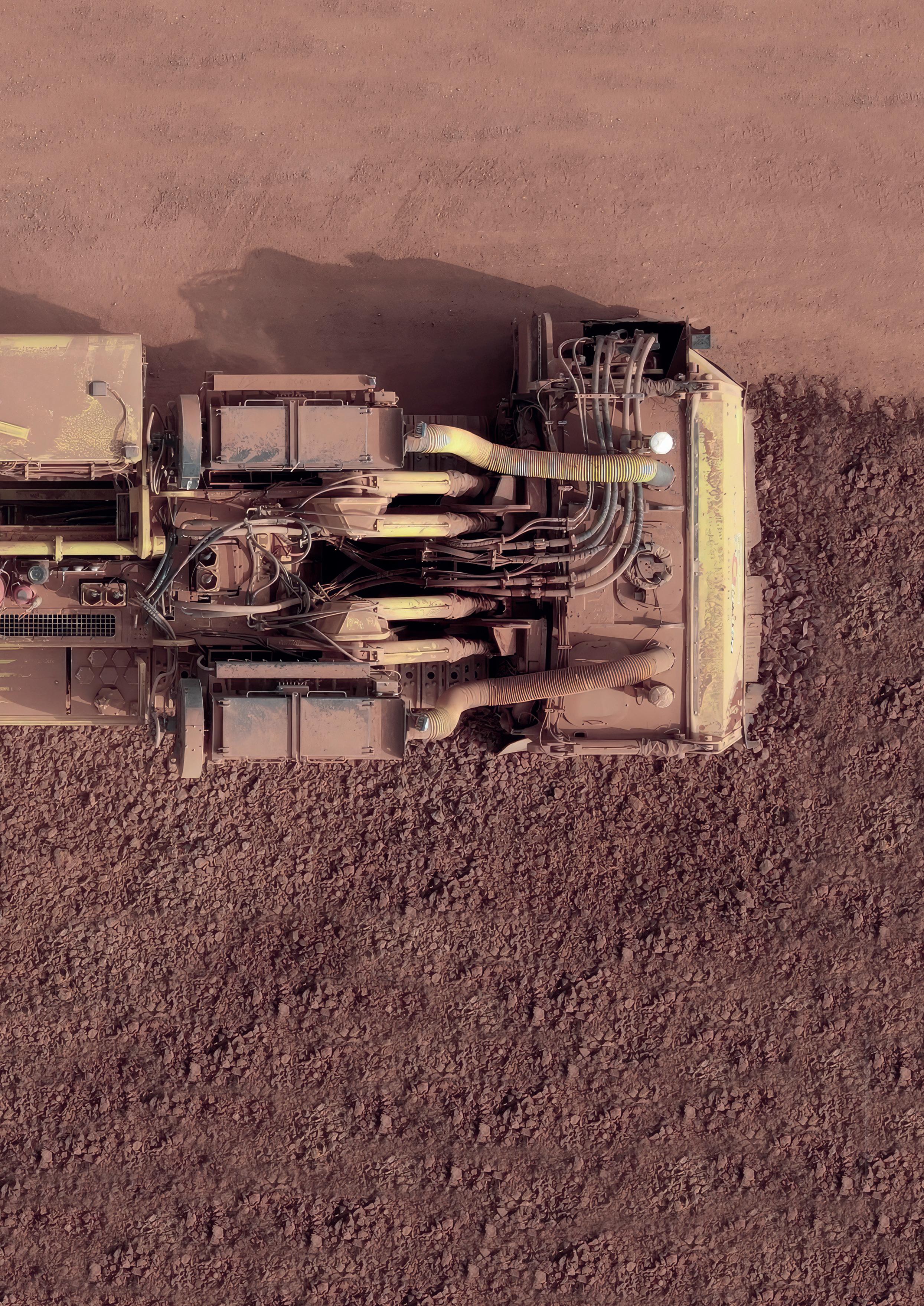
Maggie Moller, Vermeer Corp., USA, and Alseny Conte, Compagnie des Bauxites de Guinée, Republic of Guinea, discuss how the implementation of surface miners can help mining operations become more efficient and less disruptive to neighbouring communities.
The Republic of Guinea has a significant share of the world’s best bauxite reserves, with a high extractable alumina content (45% – 60%) and low silica levels (below 2%). Mining activities in the region began in the 1930s but gained momentum with the establishment of Compagnie des Bauxites de Guinée (CBG) in 1963. CBG is a joint venture between the Guinean state (49%) and the Harvey Aluminum consortium (51%). Bauxite exports began 10 years later, in 1973, with the first shipment of 20 943.4 t from the port of Kamsar. Since then, CBG has experienced significant industrial growth and has become a major player in the global bauxite market.
To date, CBG has exported over 551 200 000 t of bauxite to the global market. A considerable portion of this material is extracted from multiple bauxite mines in the Boké region of Guinea. The Boké region is well-known for its abundant deposits of high-quality bauxite, making it an ideal location for mining operations. CBG employs a large workforce in this region and actively supports local communities where many of its employees reside.
As CBG expands its mining operations in the Boké region, neighbouring communities have also grown. The organisation recognises its responsibilities to these communities and strives to make a positive impact. Some of these efforts include supporting education, healthcare, and development initiatives. At its mines, CBG adheres to strict environmental regulations
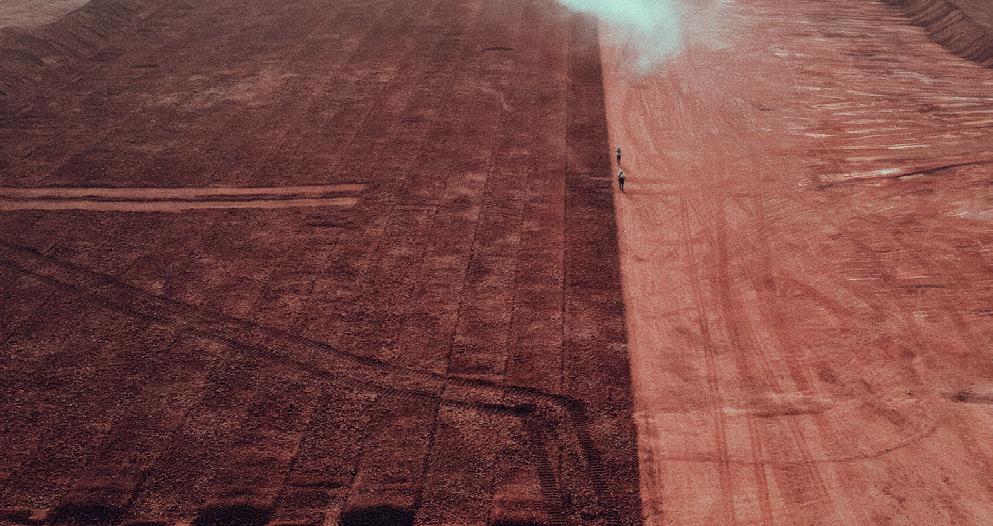
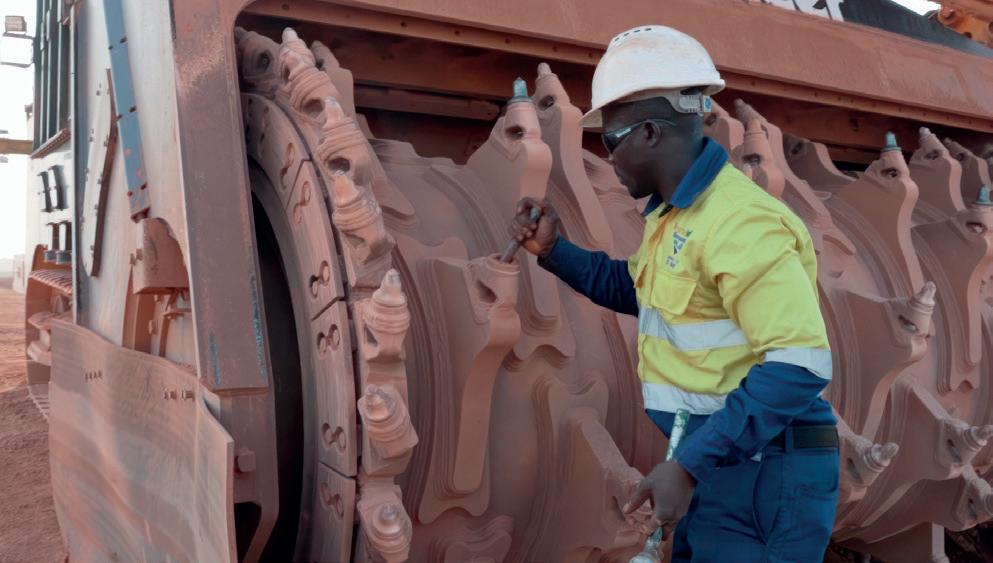
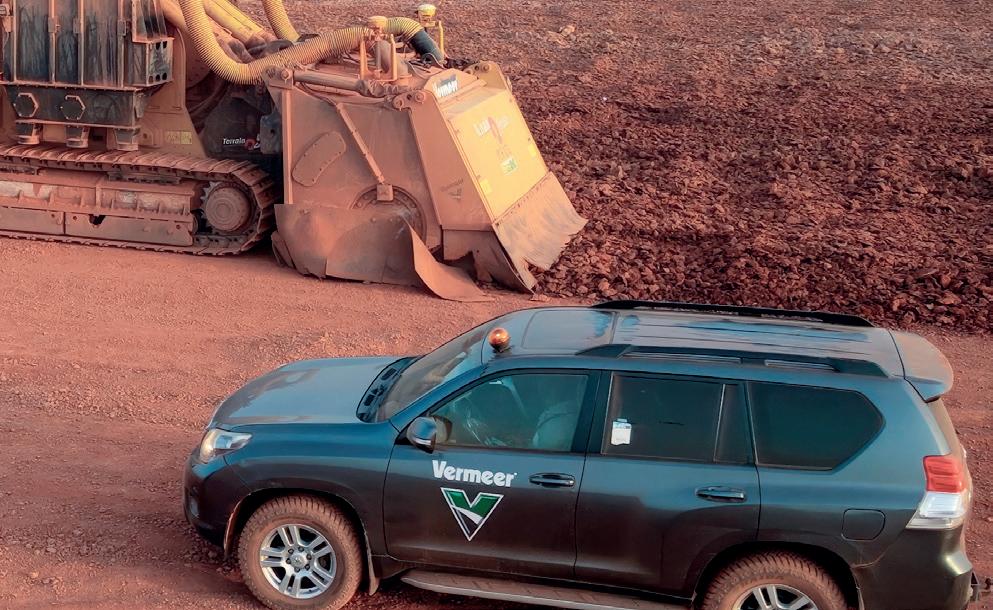
and implements measures to preserve natural resources, reduce emissions, and responsibly manage waste.
A few years ago, the convergence of the needs of nearby communities and sustainability efforts led to hindrances in mining near some of these communities, due to traditional drill and blast mining methods.
Like most surface mining operations worldwide, CBG has been regularly drilling and blasting since 1963. However, this process generates significant vibration, noise, and dust. While it is usually not an issue on large mine sites, blasting can have a noticeable impact on the residents of mining communities as the boundaries of the mine and communities expand.
At CBG’s Sangarédi Mine in the Boké region, the team faced the challenge of extracting as much of the plateau’s rich alumina content as possible. However, drill and blast efforts had to be abandoned approximately 1000 m around neighbouring communities due to the disruptive nature of the process. This had a negative impact on the mine’s sustainability efforts.
With a fleet of approximately 60 mining machines, the CBG team realised that they lacked the appropriate equipment to address the challenge of extracting material near local communities. After researching alternatives to traditional drilling and blasting methods, they began exploring the use of surface miners. These mechanical machines are capable of breaking up the dense bauxite material into smaller chunks, allowing for more efficient loading and transportation.
At the Sangarédi mine site, the team tested several different surface miners. Ultimately, they found that the Vermeer T1255 surface miner was the most suitable option. They were impressed with its production rate, efficiency in transportation, and ability to work on slight slopes without requiring prior levelling.
In 2021, CBG started using its first Vermeer surface miner at the Sangarédi mine to extract material near communities. As a result, the team has been able to expand its mining area and now only needs to leave a border of approximately 500 m.
CBG’s experience with the first Vermeer surface miner proved it to be highly productive. Compared to conventional mining techniques, the Vermeer surface miner causes less disturbance to the surrounding ecosystem. It produces less noise, dust, and vibration, which is better for the neighbouring communities.
By utilising surface miners, CBG has streamlined the extraction process at its mine sites. Instead of performing multiple steps such as drilling holes, loading explosives, detonating blasts, and processing oversized material through crushers, surface miners offer a continuous mining process. The machine’s drum and teeth grind through the bauxite layer by layer, resulting in uniformly sized material that only needs to be loaded into trucks for transportation. This process is repeated daily.
The Vermeer surface miners used by CBG have a direct drive single-sided attachment capable of cutting up to 53.3 cm deep. They employ a technique called top-down cutting, where the

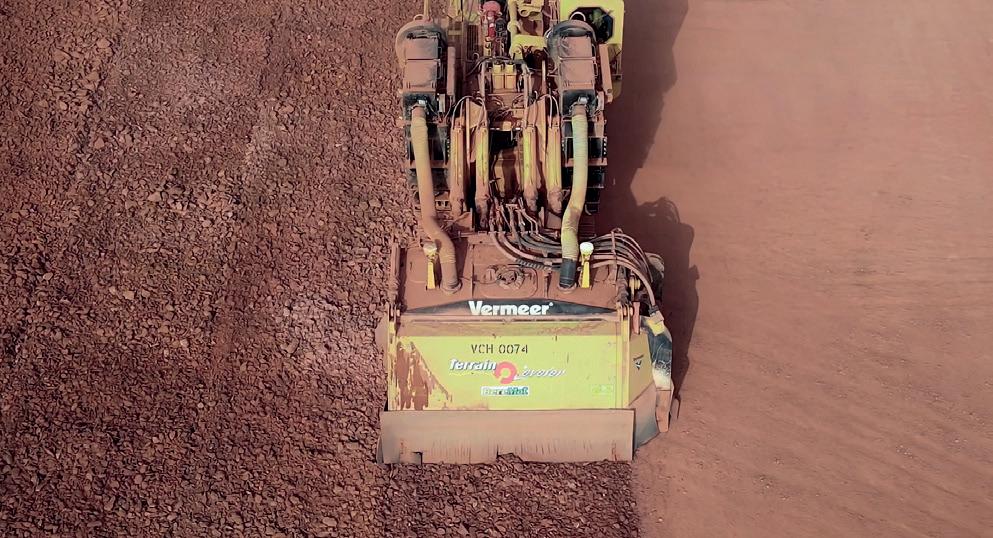
cutter teeth penetrate the material without relying on the machine’s tractive effort to drive the teeth. As the machine moves forward and the drum rotates, the teeth on the drum position themselves over the material surface. When contact is made, the teeth perform a top-down cutting action to produce a consistently-sized product. The Vermeer surface miners are also equipped with software that can assist operators in adjusting machine controls by monitoring and recording the machine’s performance. This information can be analysed to make further production optimisations.
Minimising noise, vibration, and dust are the top benefits of employing surface miners for the residents of neighbouring communities. To further suppress dust produced during the mining process, CBG’s Vermeer machines are equipped with a
dust suppression system that uses two large vacuums to collect and filter dust particles from the air.
As of today, approximately 40% of the material extracted at the Sangarédi mine is done using surface miners. This method has proven to be more economical in certain parts of CBG’s mine, and as mining operations continue to expand, so does their dependence on surface miners because of their versatility.
CBG operates its surface mining operations 24 hours a day, 365 days a year. Before transitioning to this new mining method, the team had concerns about the capacity of the equipment to operate around the clock.
Although some may believe that continuous mining can result in a shorter machine lifespan, over the past 24 months of operation, the Vermeer surface miners have demonstrated a mechanical availability of over 98%.
When investing in surface miners, CBG collaborated with the team at Vermeer West Africa and Beremat, which provided a maintenance and repair contract. Beremat is a local Guinean company with extensive experience in executing maintenance and repair contracts at CBG and other customers in the mining industry.
CBG produces 19 842 519 t of bauxite a year, with as much as 16 534 670 t sold annually. With the addition of surface miners, the company is now able to access areas that were once considered off-limits, while assisting all of the communities that support its mining operations.






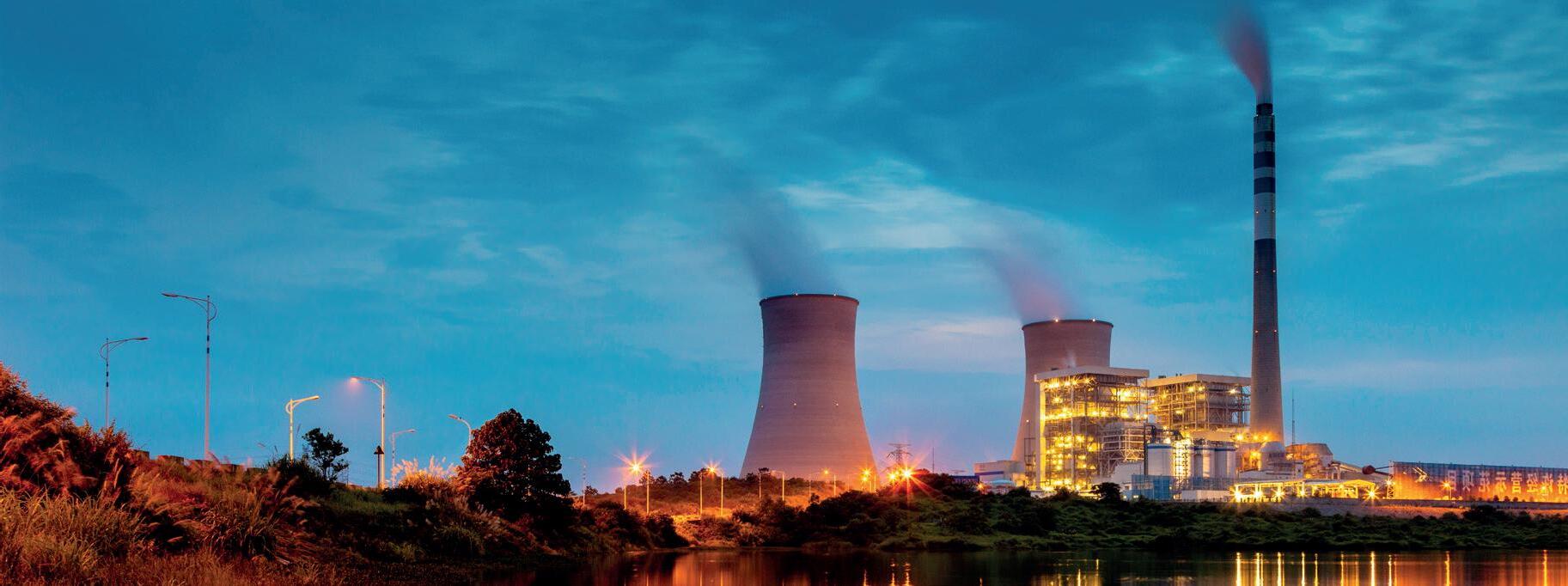








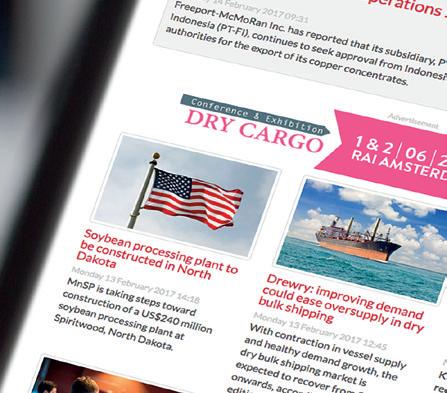
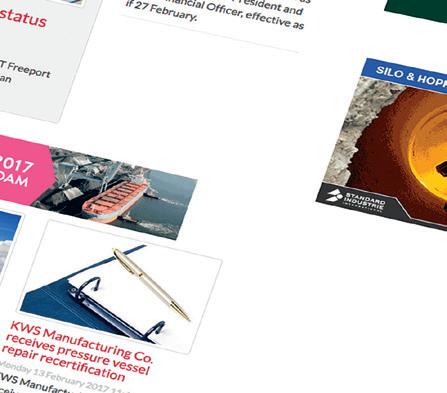







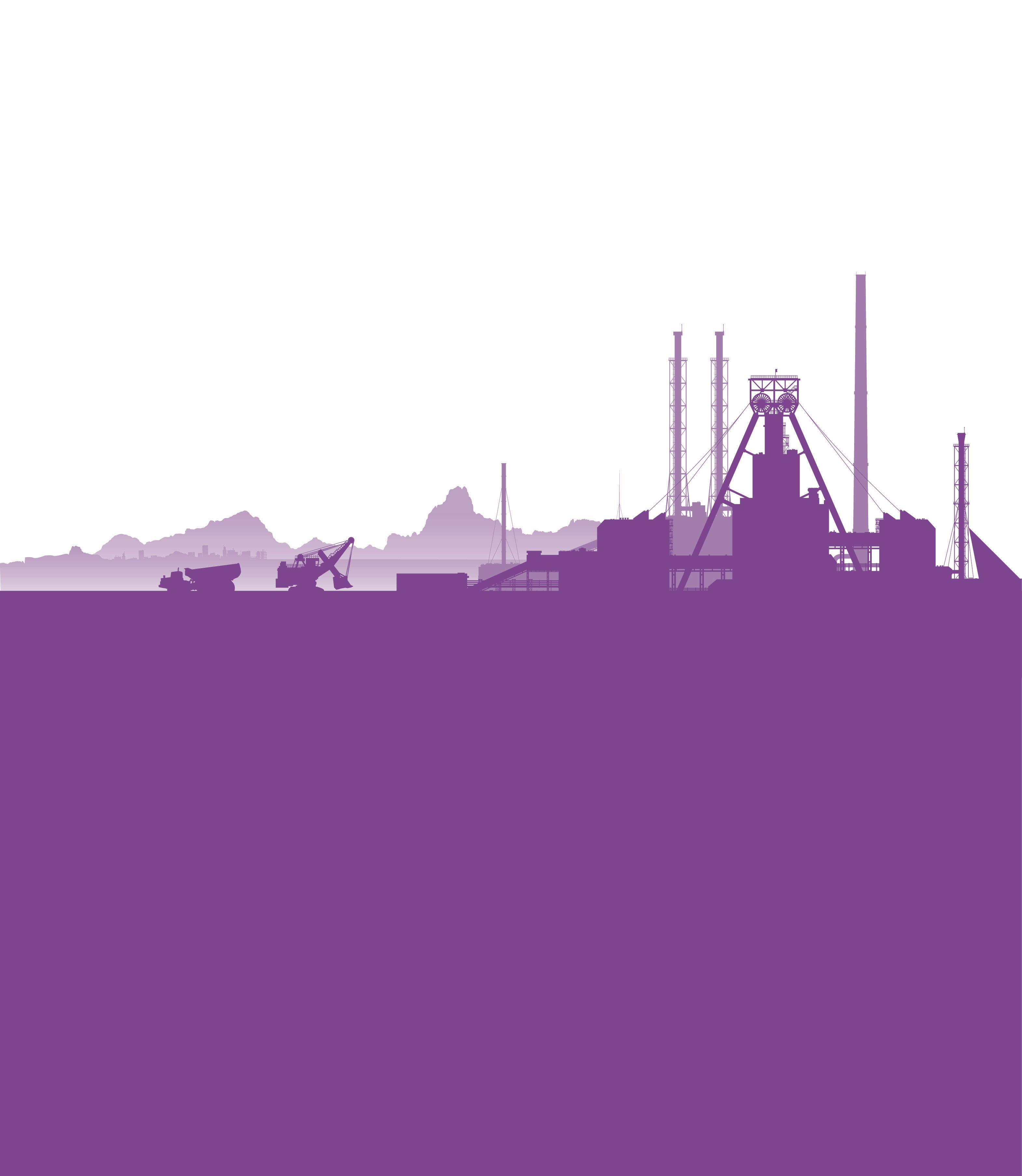






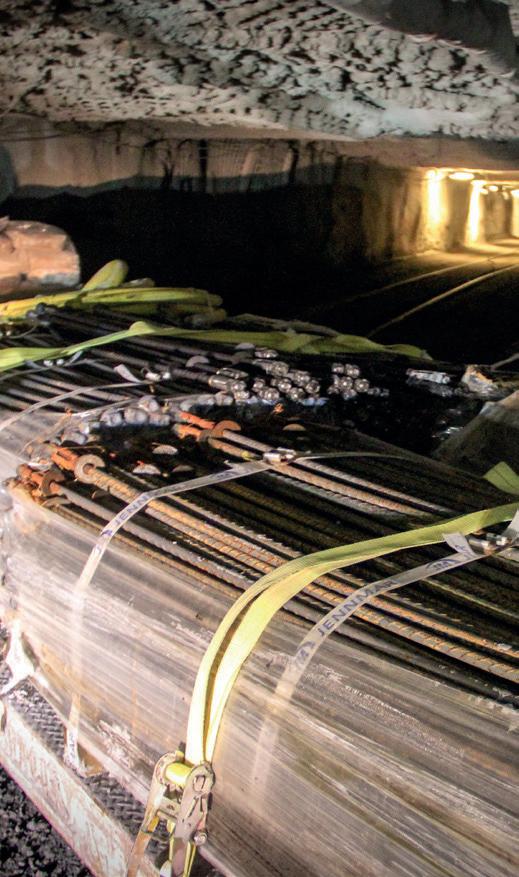
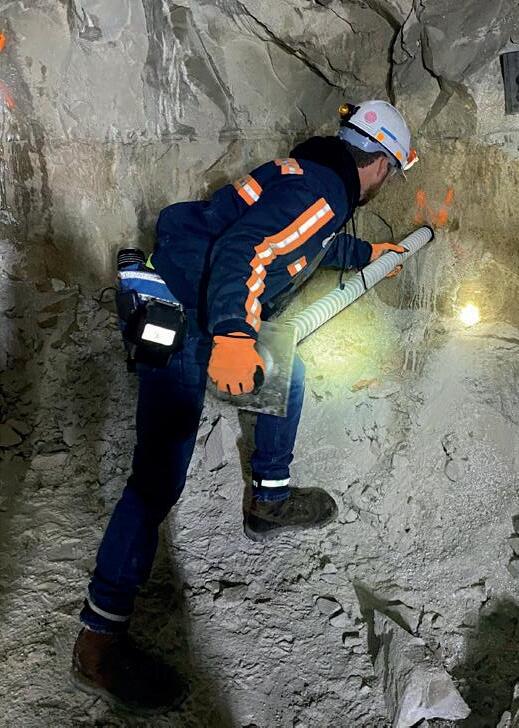
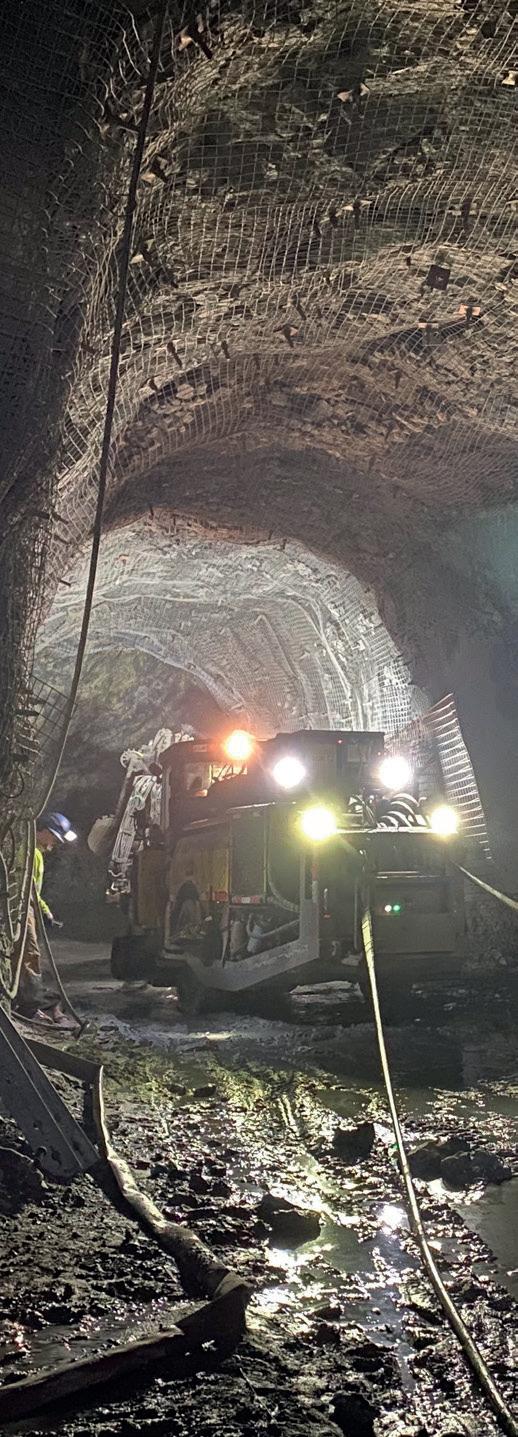

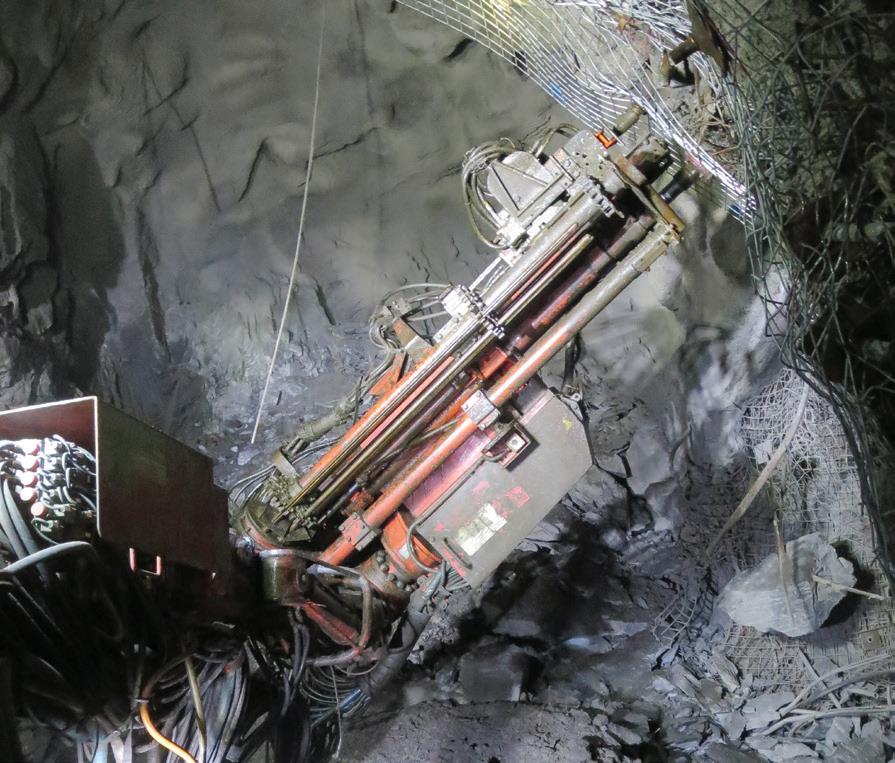
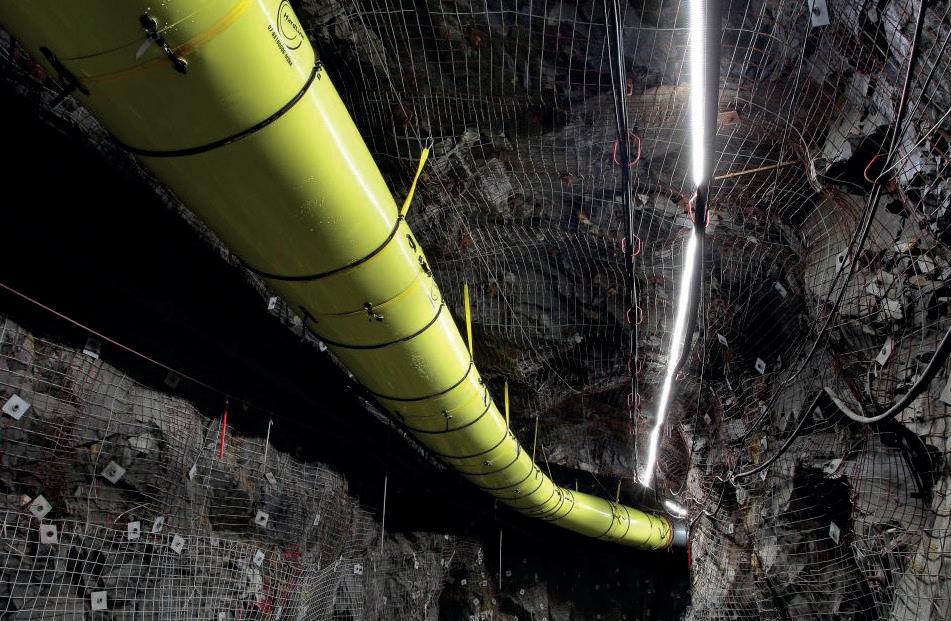
JENNMAR designs and manufactures a wide range of dependable ground control products, from bolts and beams to channels and trusses, resin, rebar, and more. We’re proud to make products that make the mining, tunneling, civil, and construction industries safer and more efficient.
Because we understand the ever-changing and demanding conditions above and below ground we have built the richest portfolio of diverse and complementary brands. JENNMAR sets the bar in every industry we serve and as we continue to grow, our focus will always be on the customer.
We feel it is essential to develop a close working relationship with every customer so we can understand their unique challenges and ensure superior customer service. Our commitment to the customer is guided by three words: SAFETY, SERVICE, and INNOVATION . It’s these words that form the foundation of our business. It’s who we are.

























